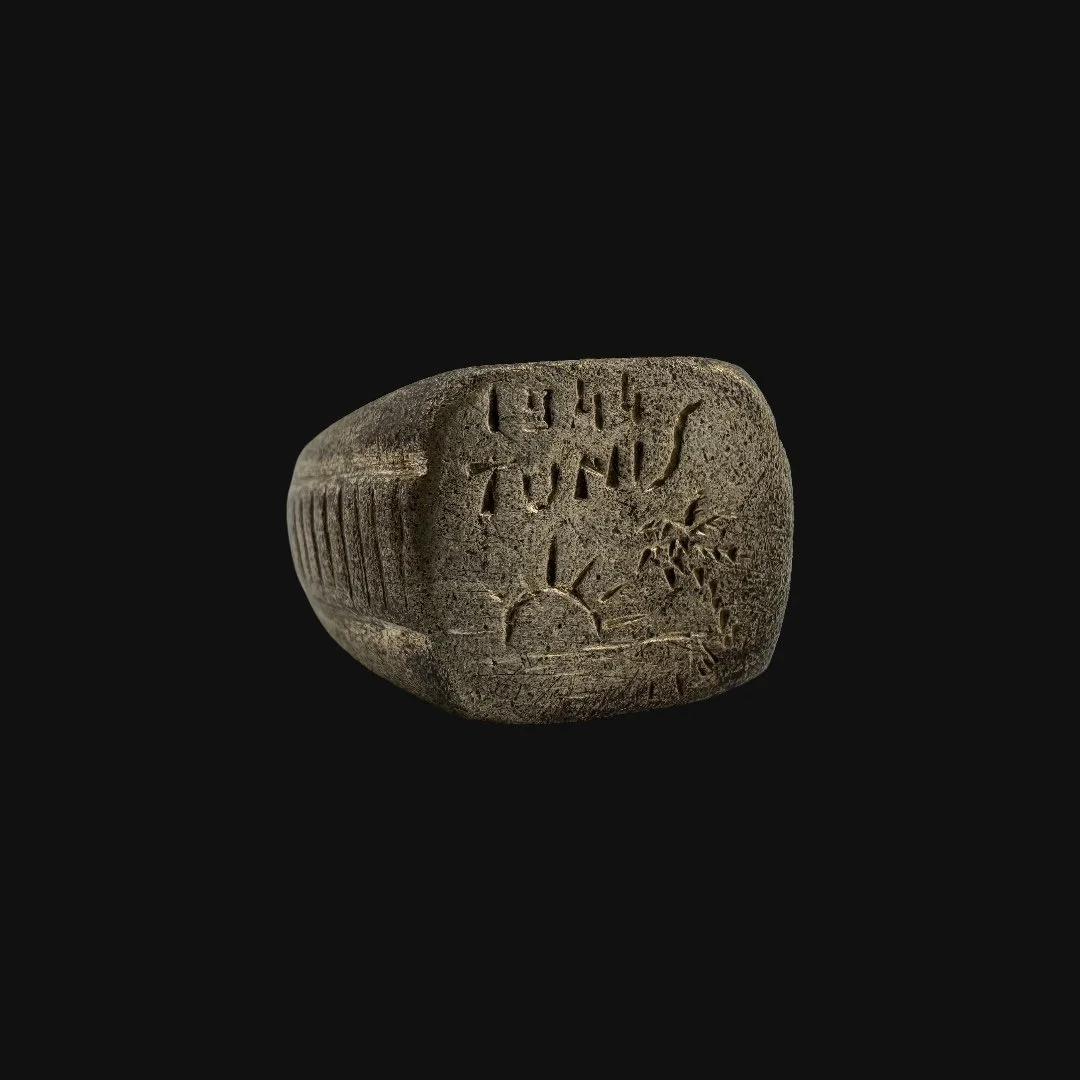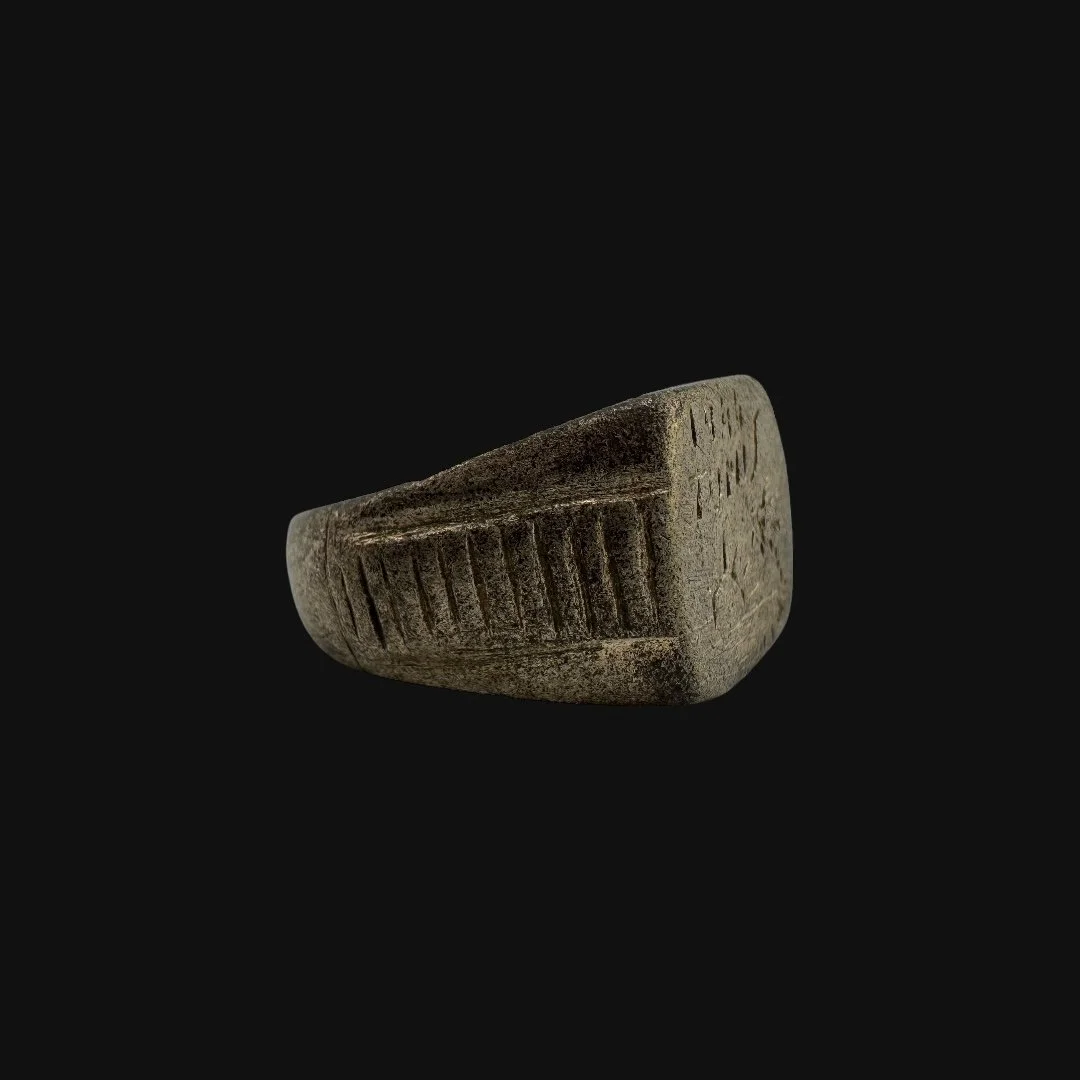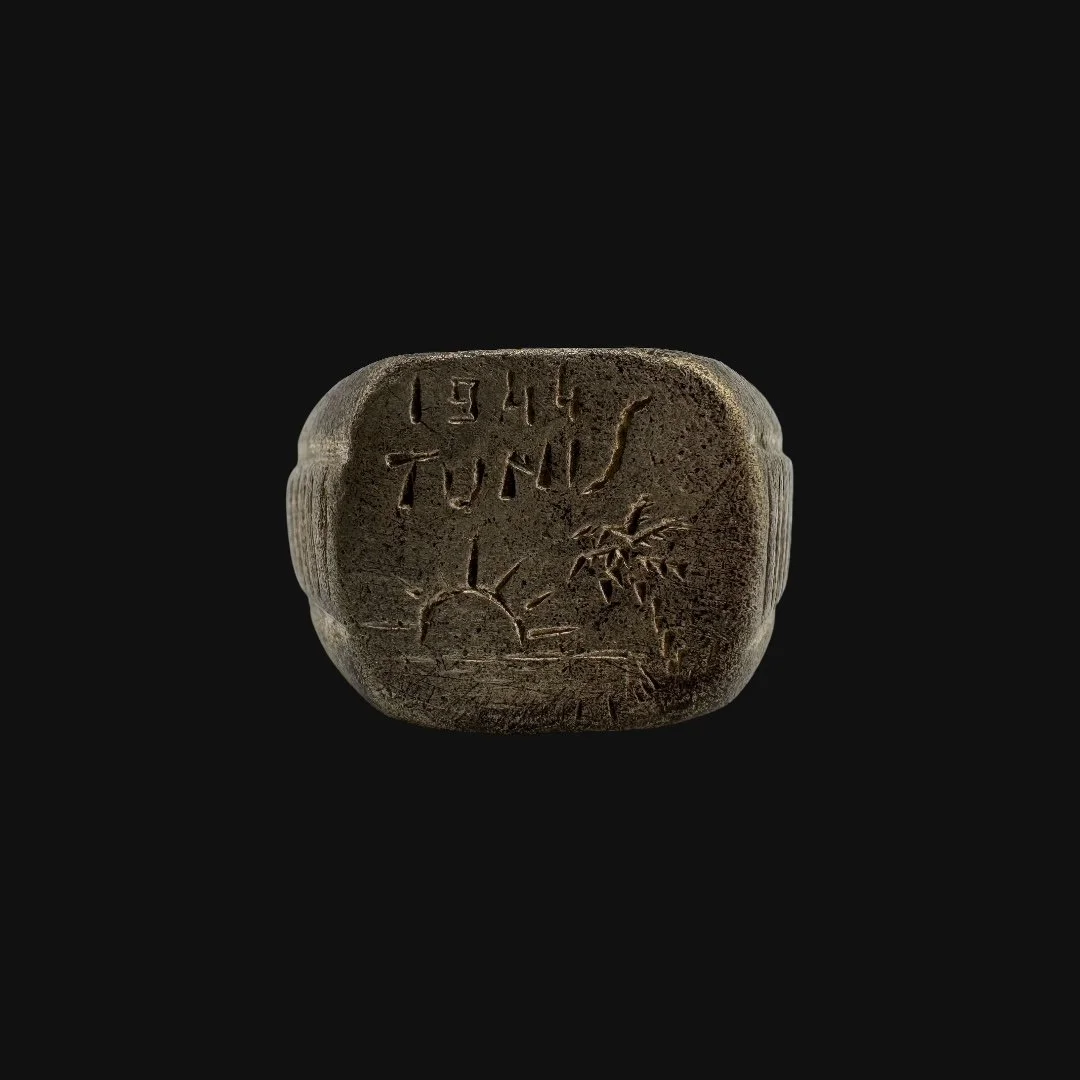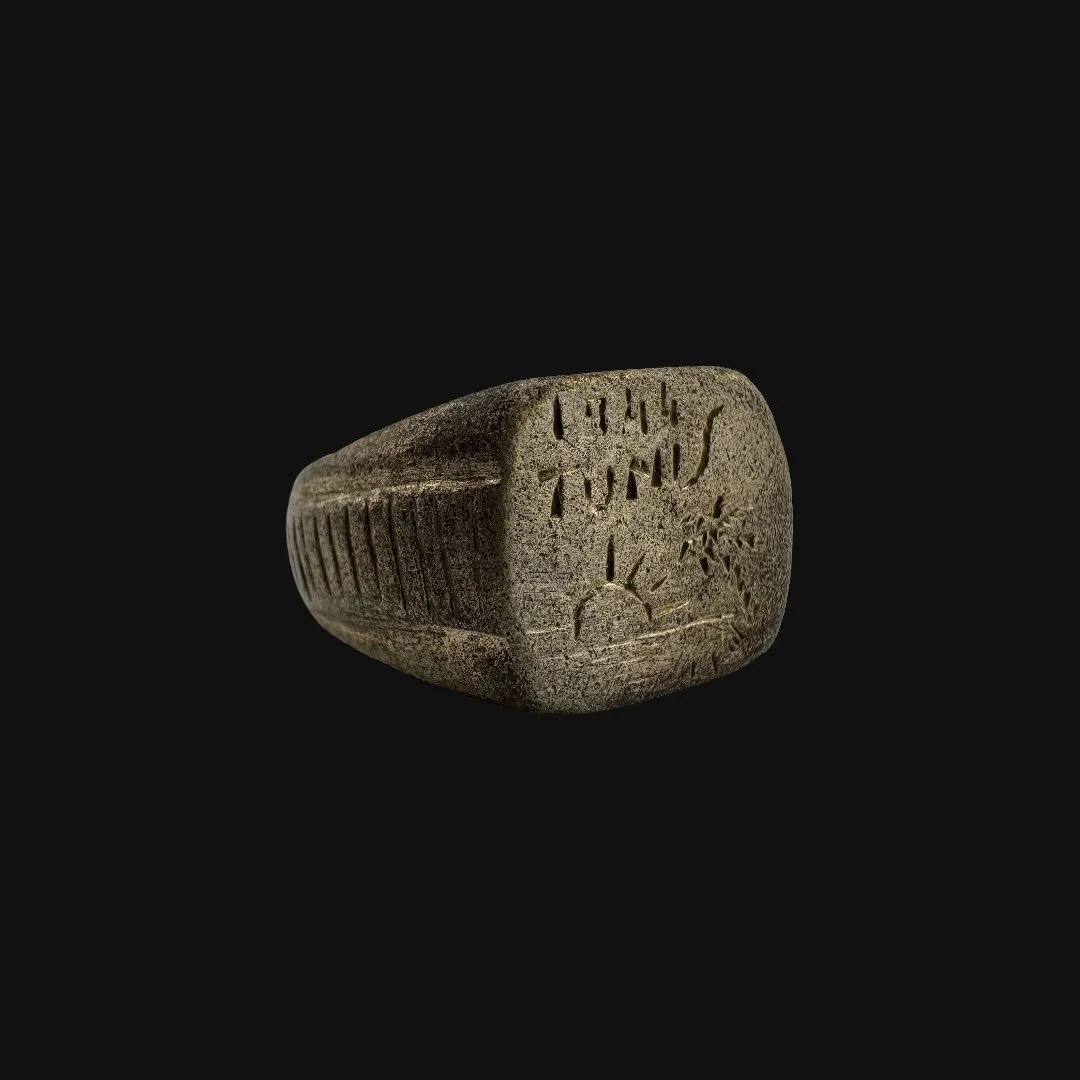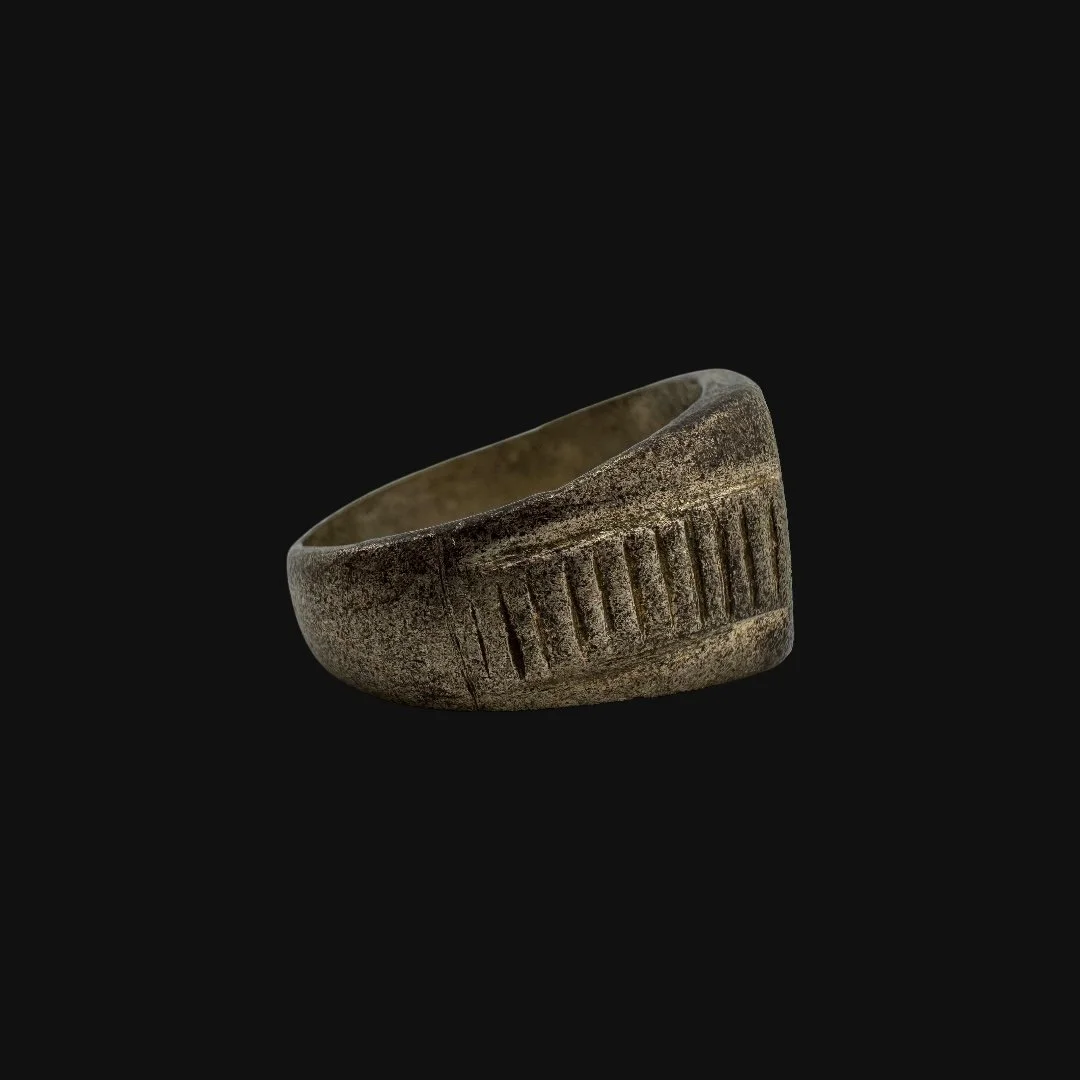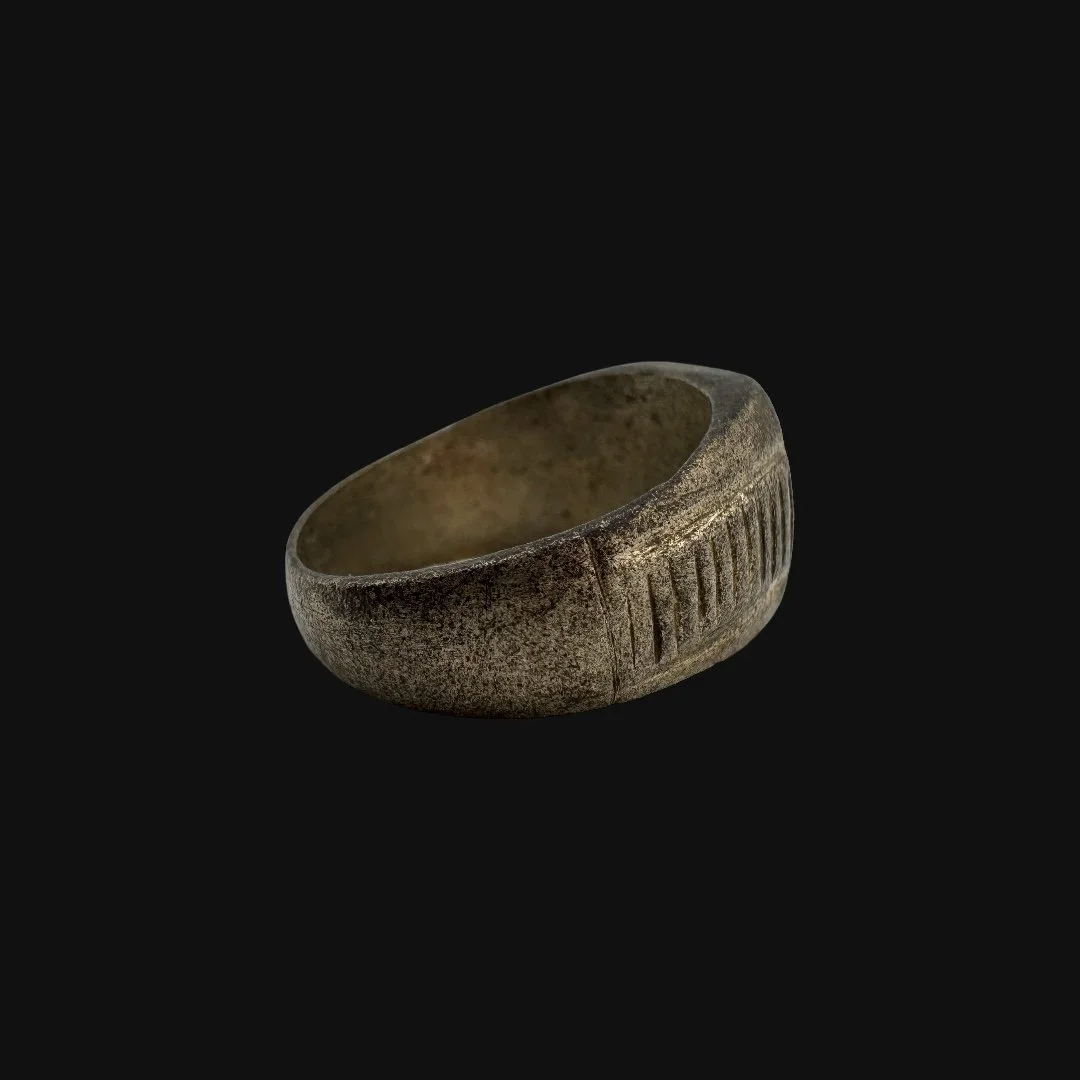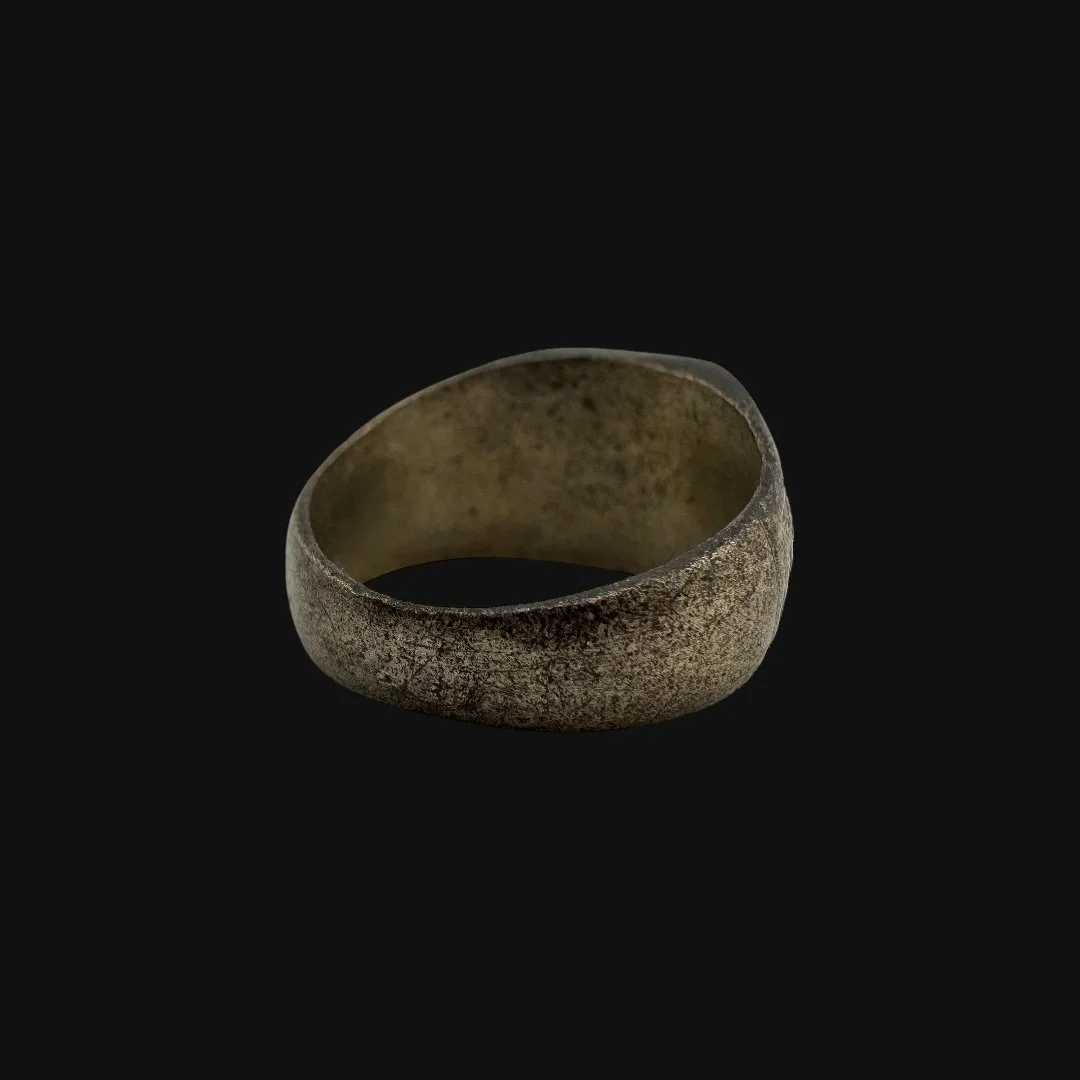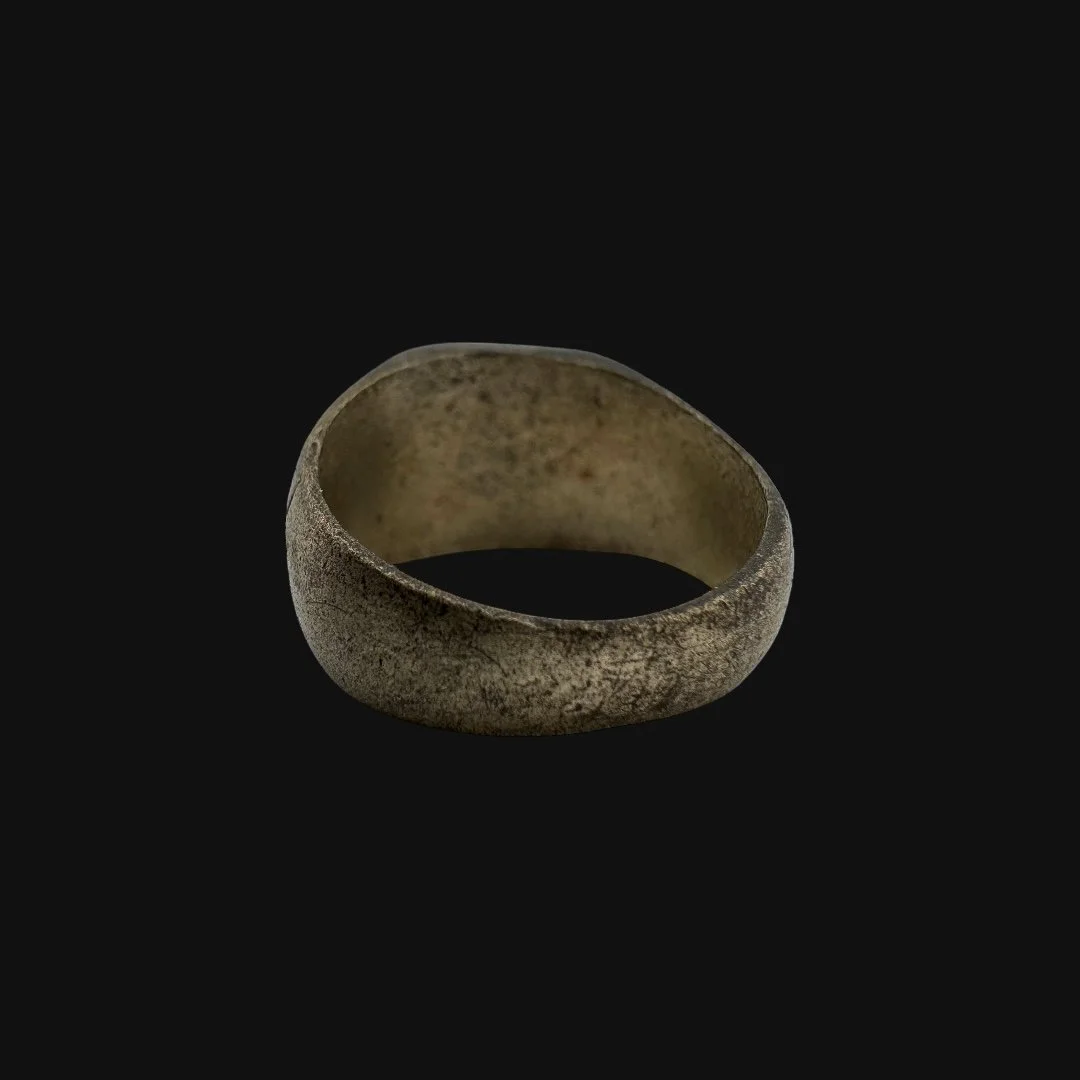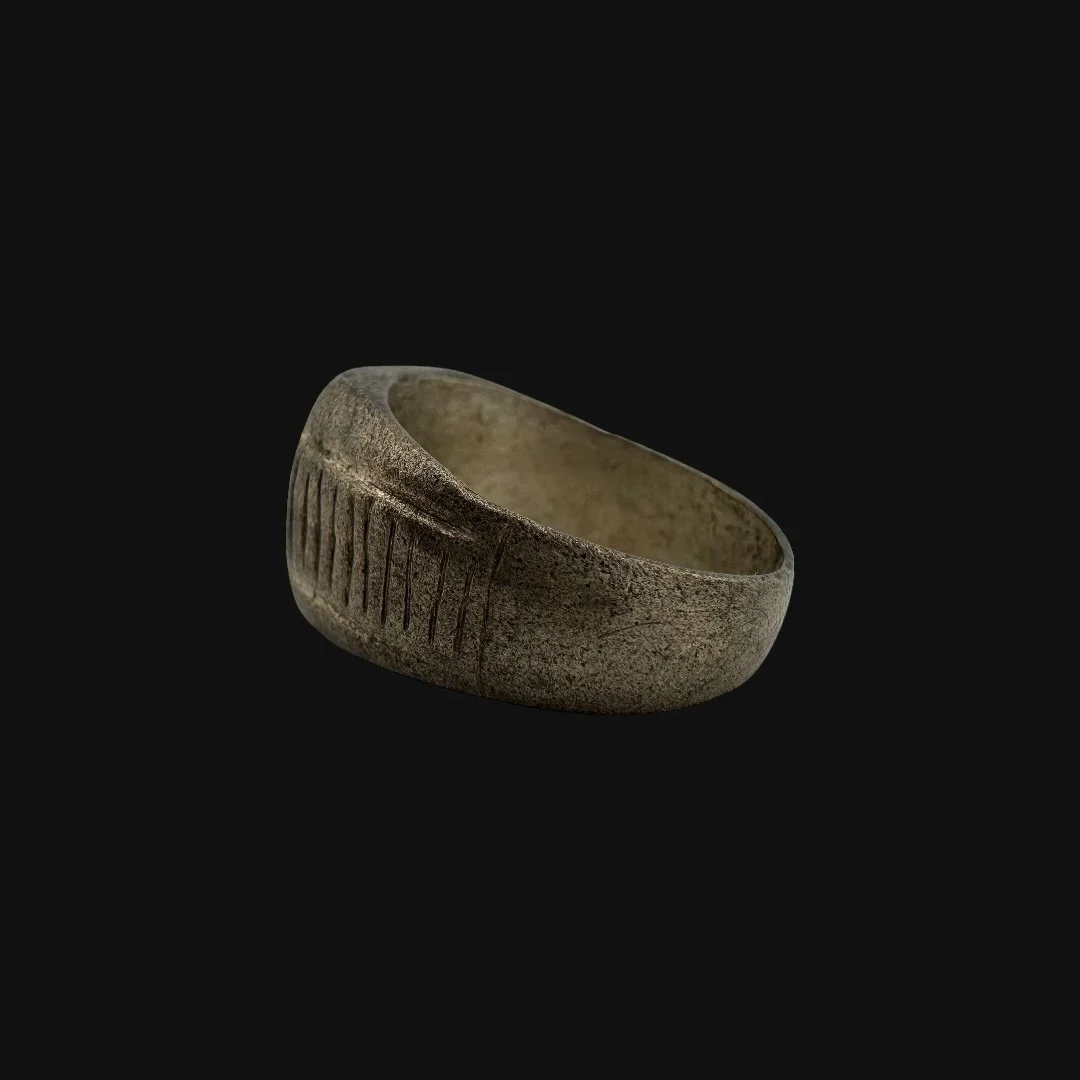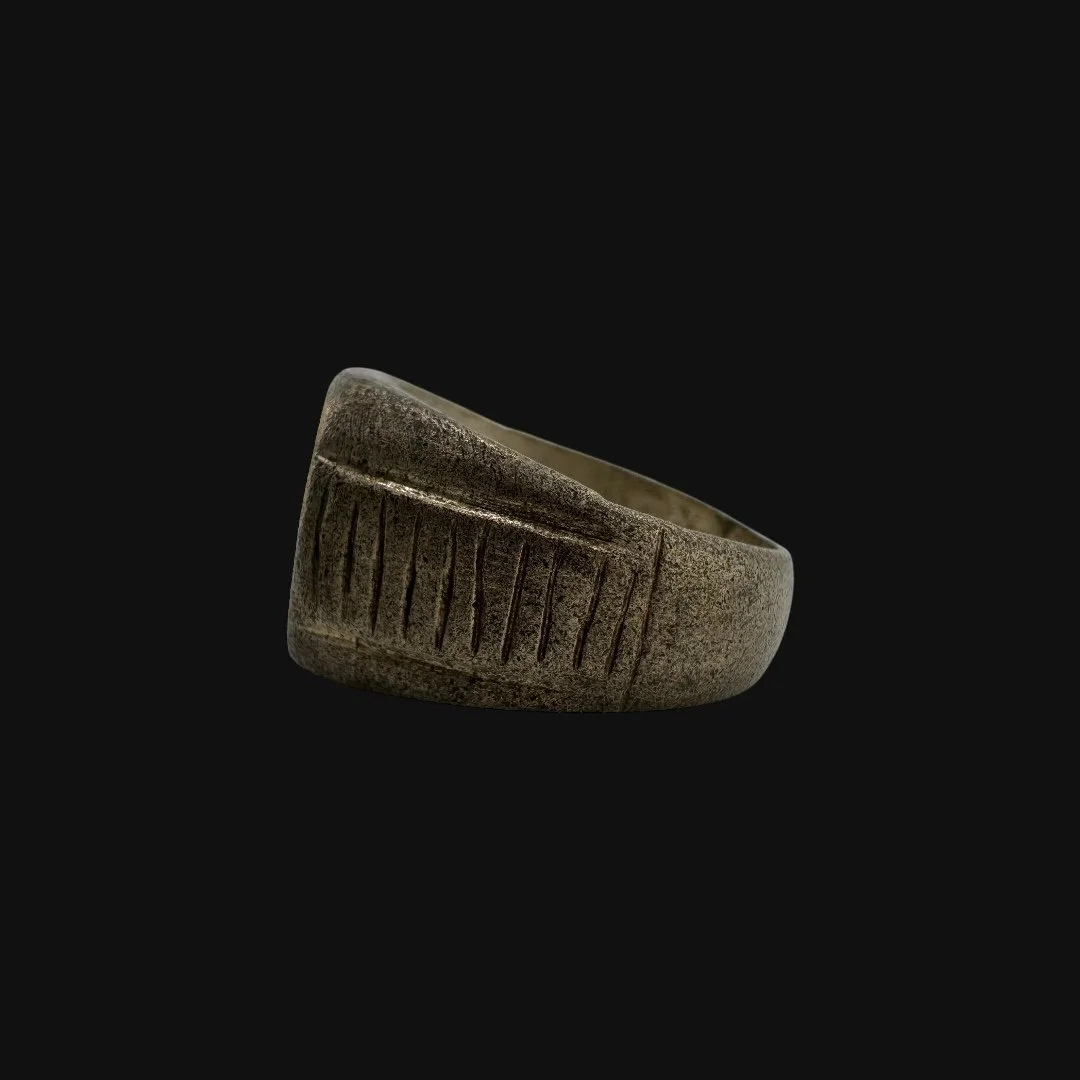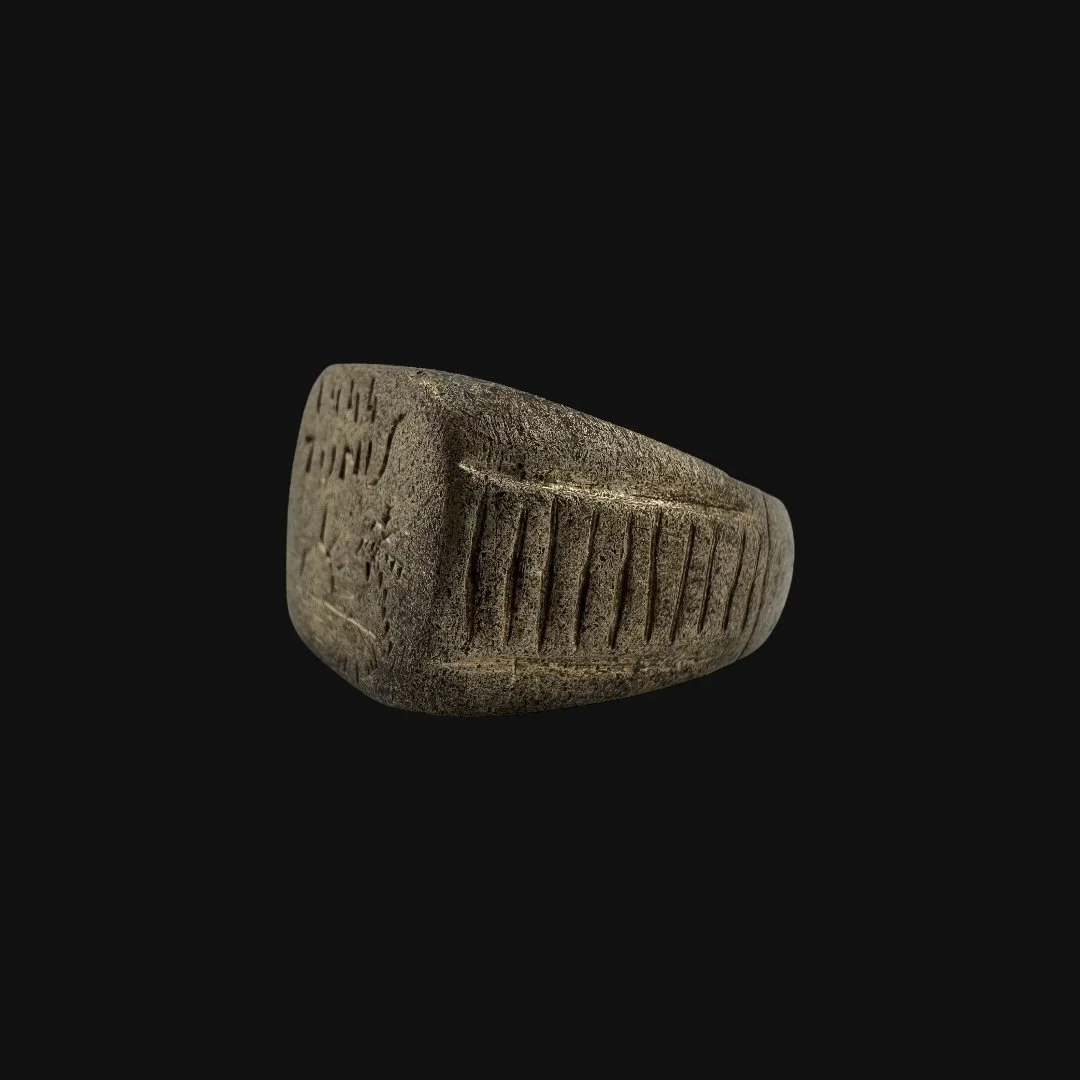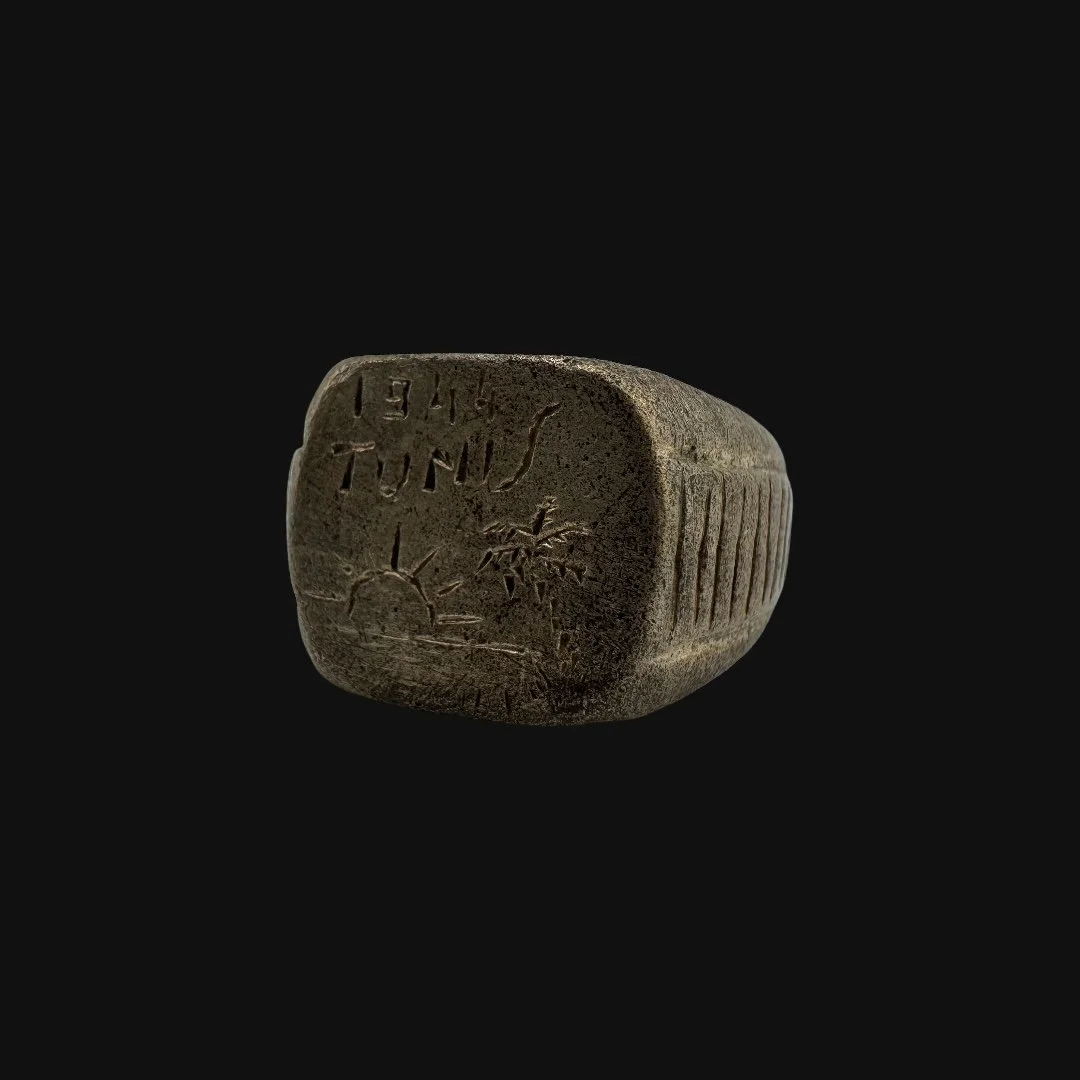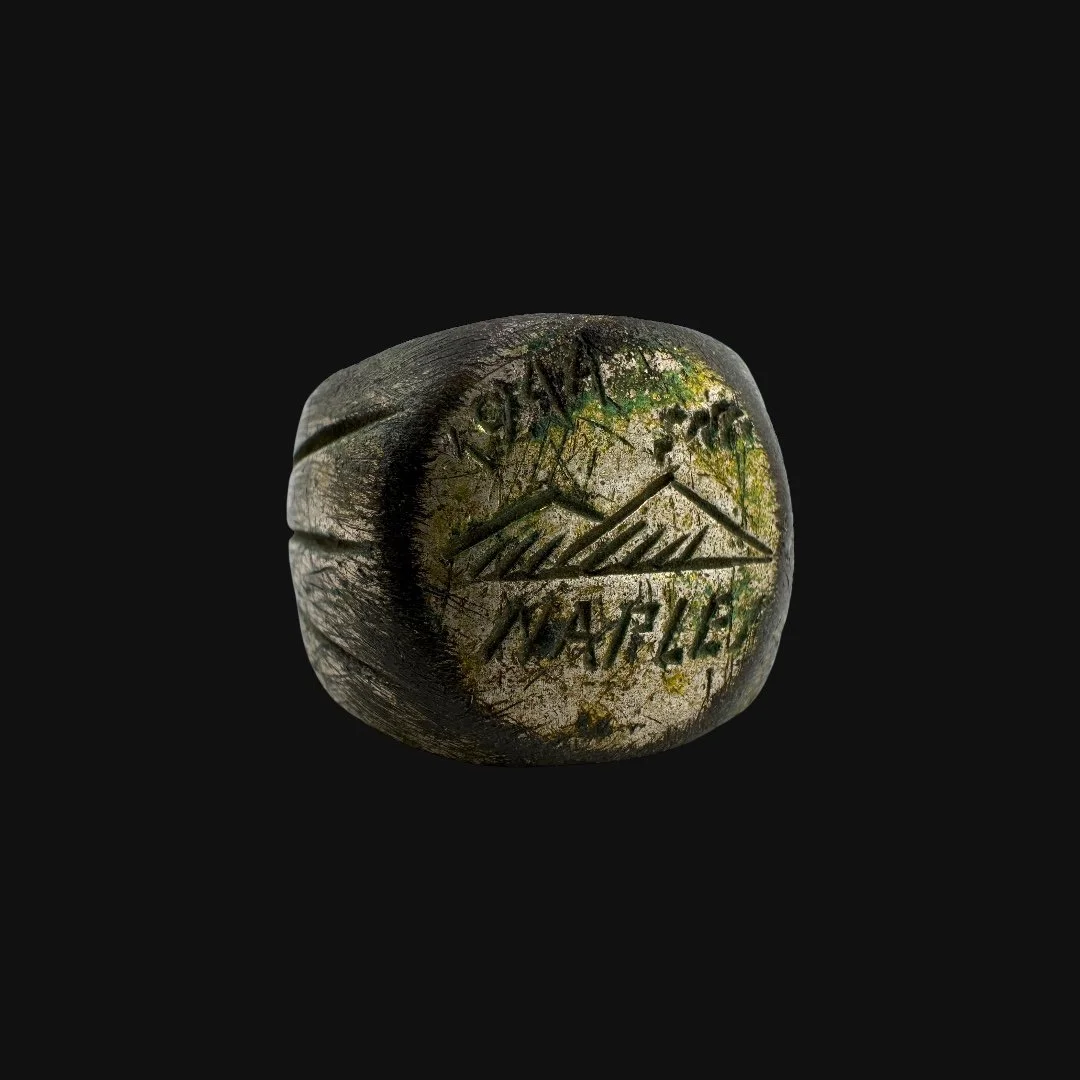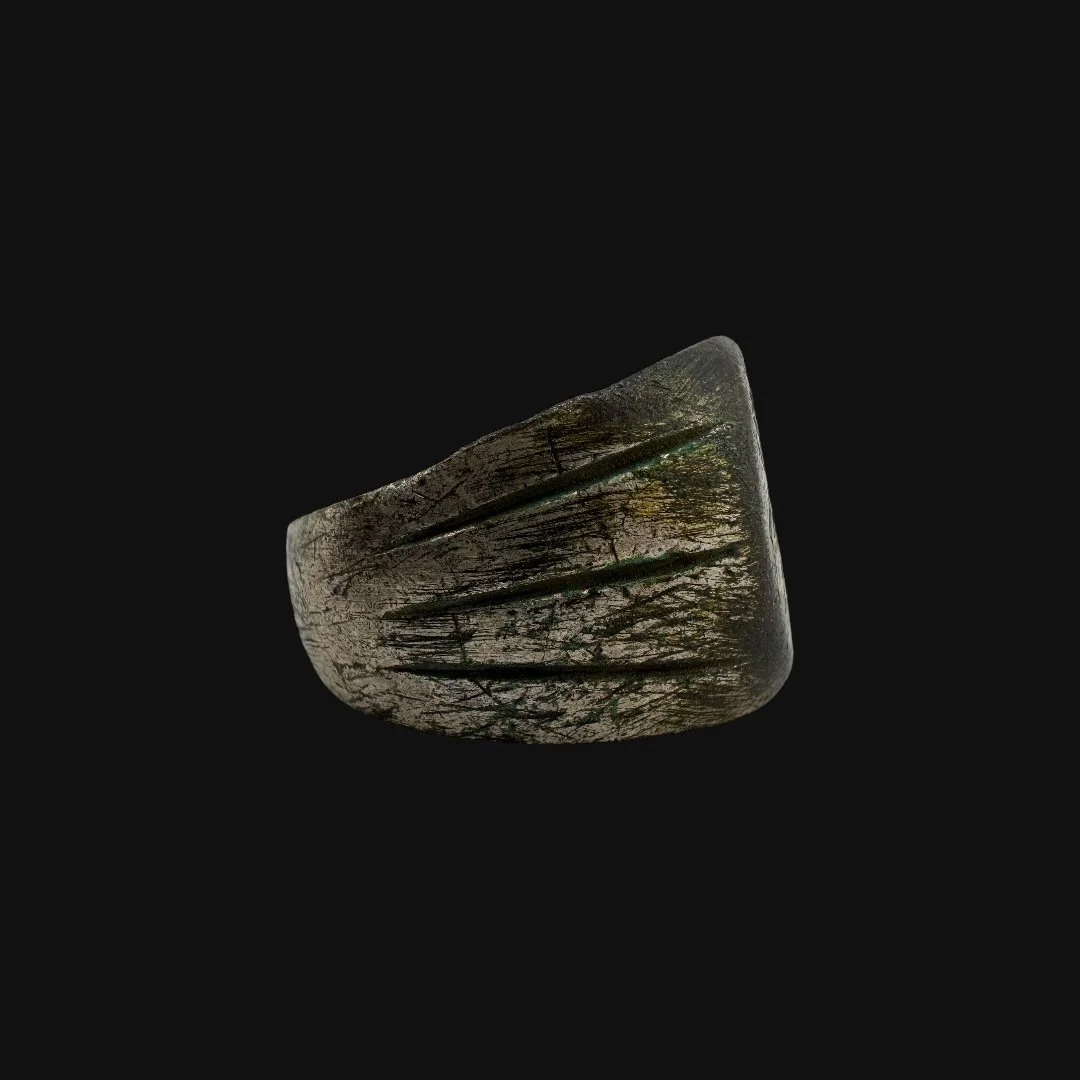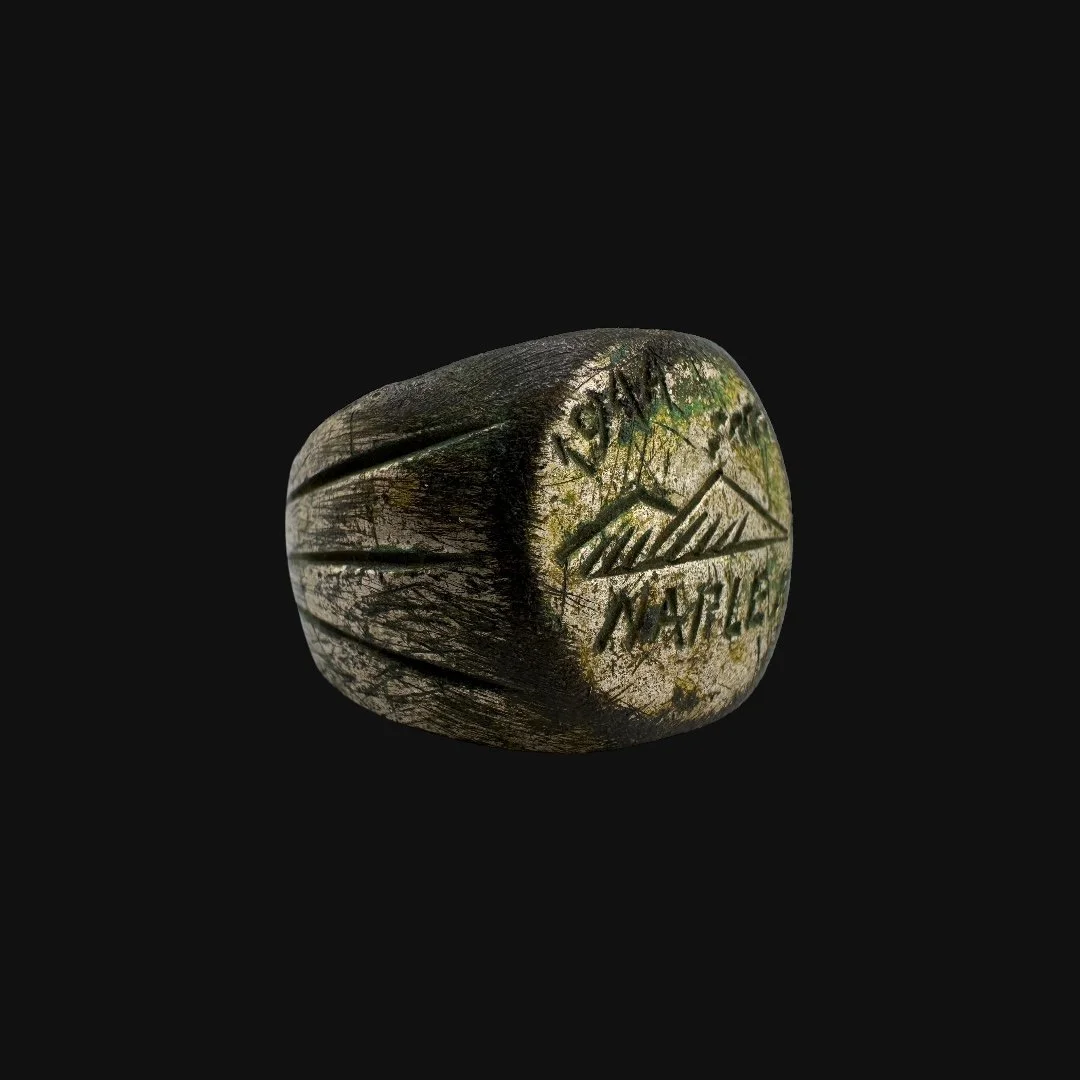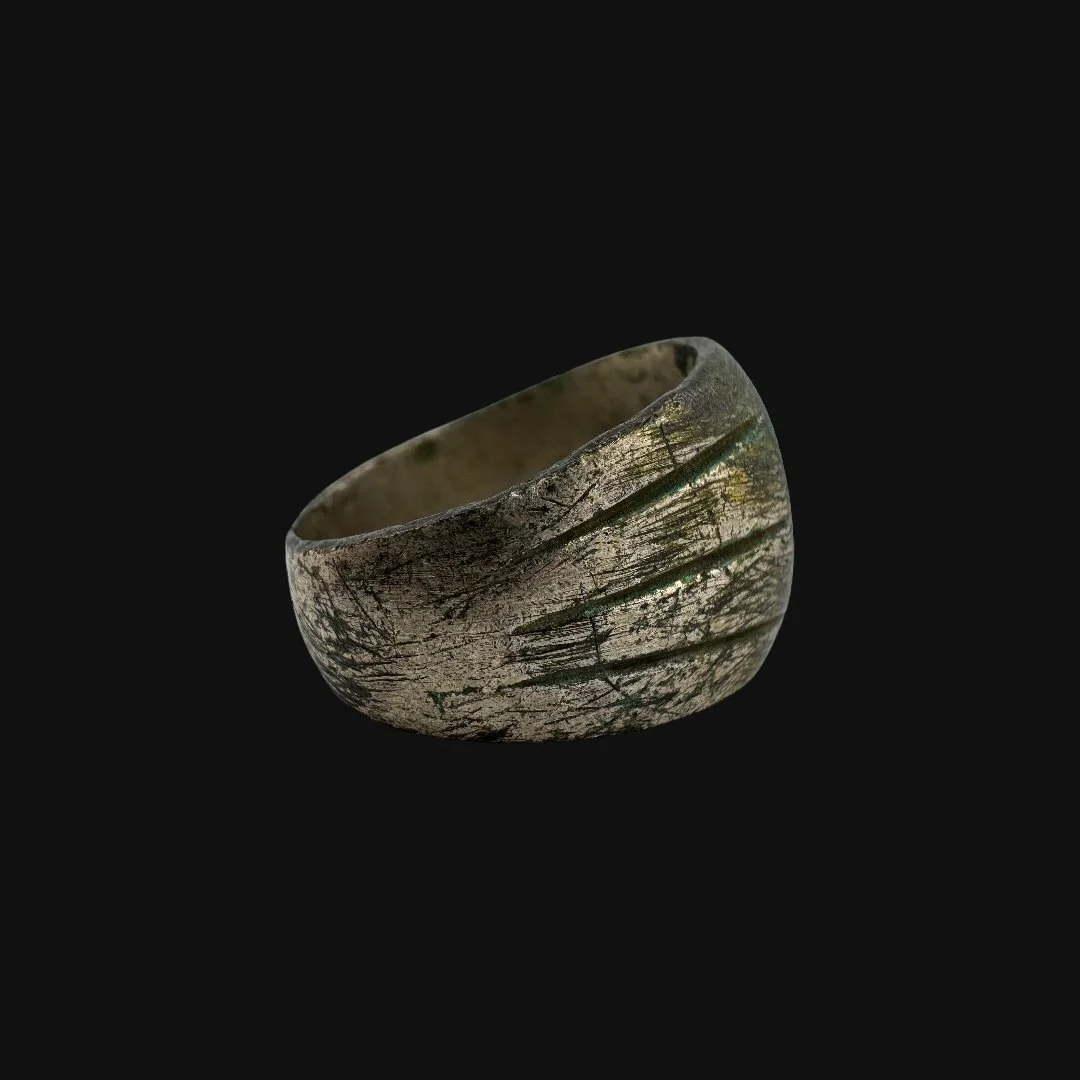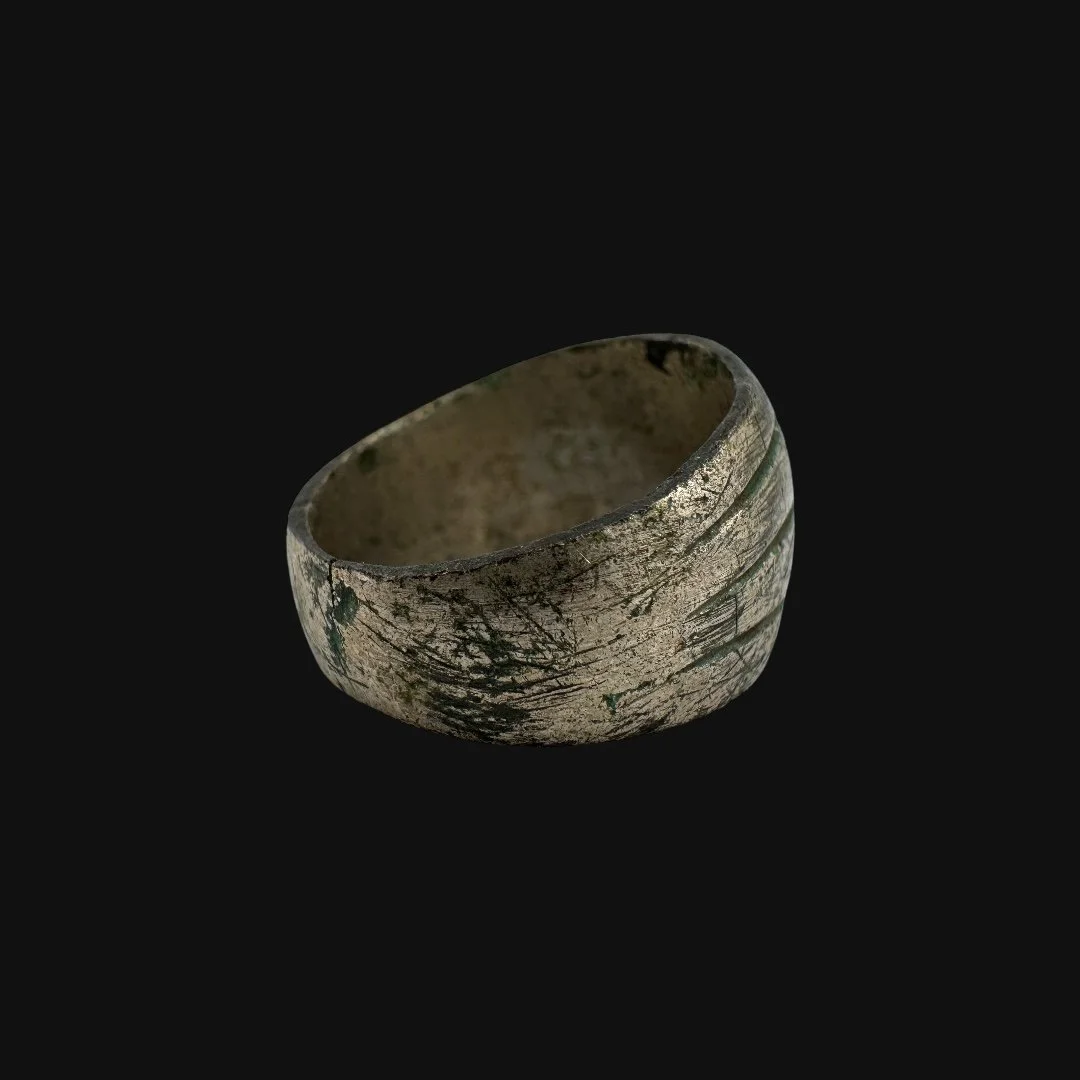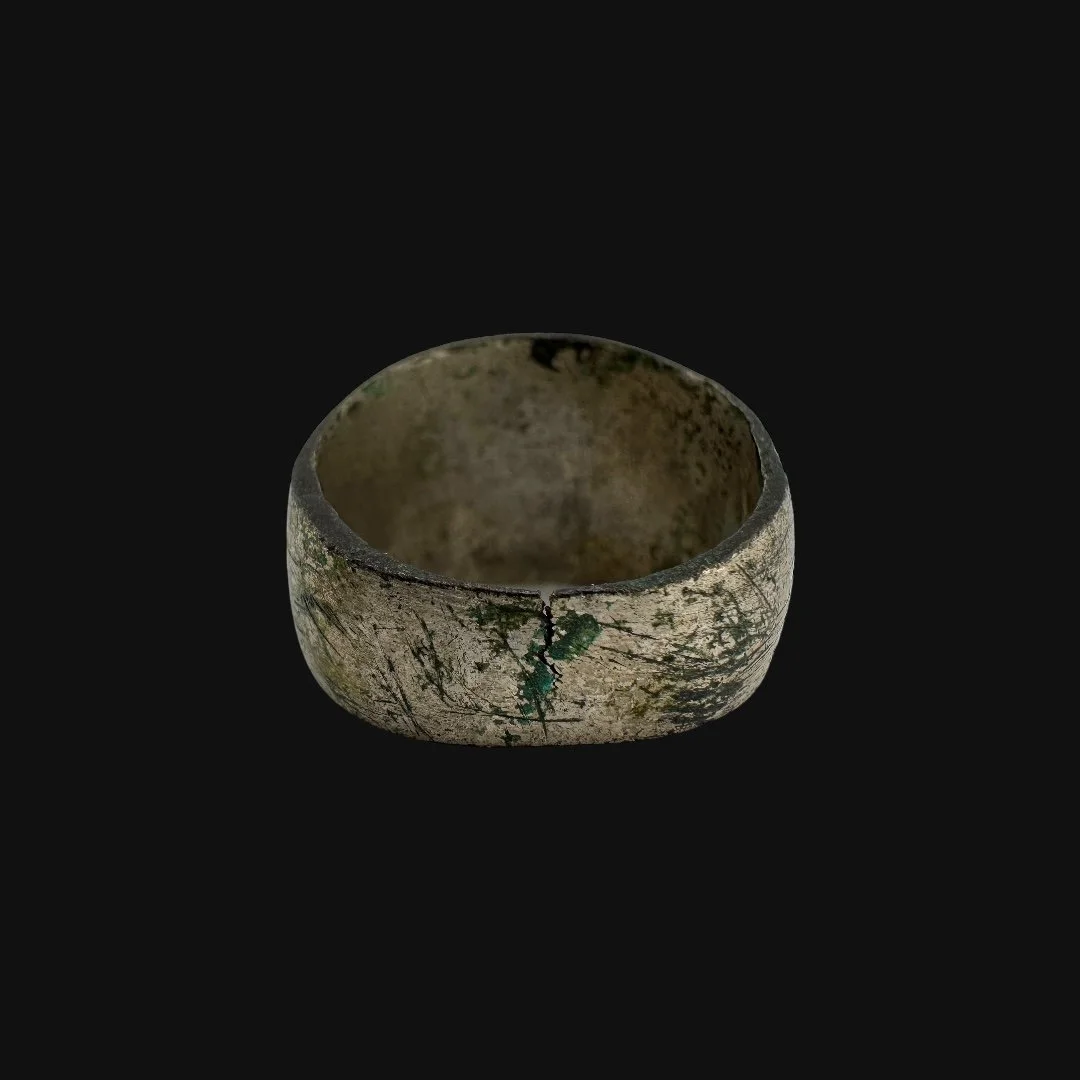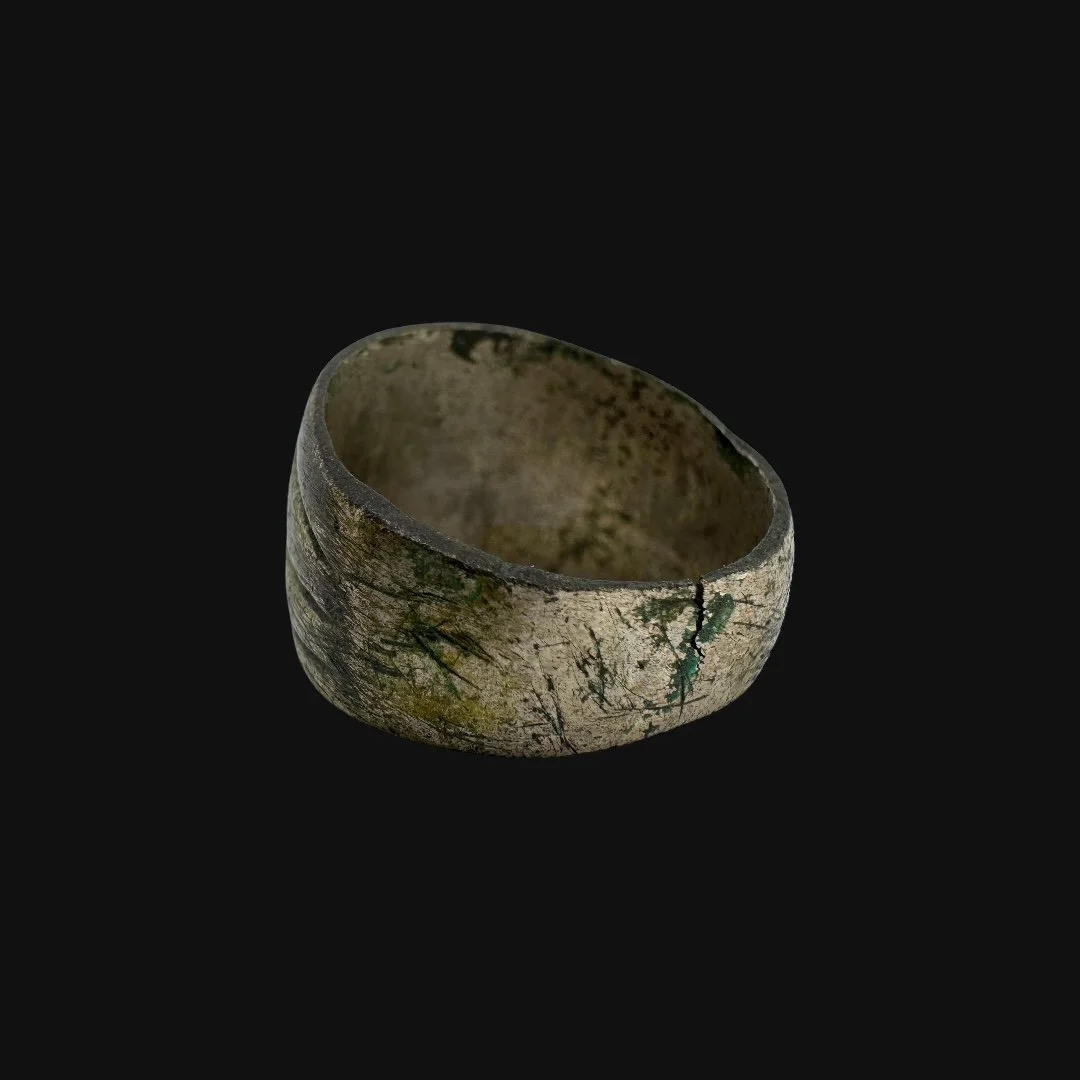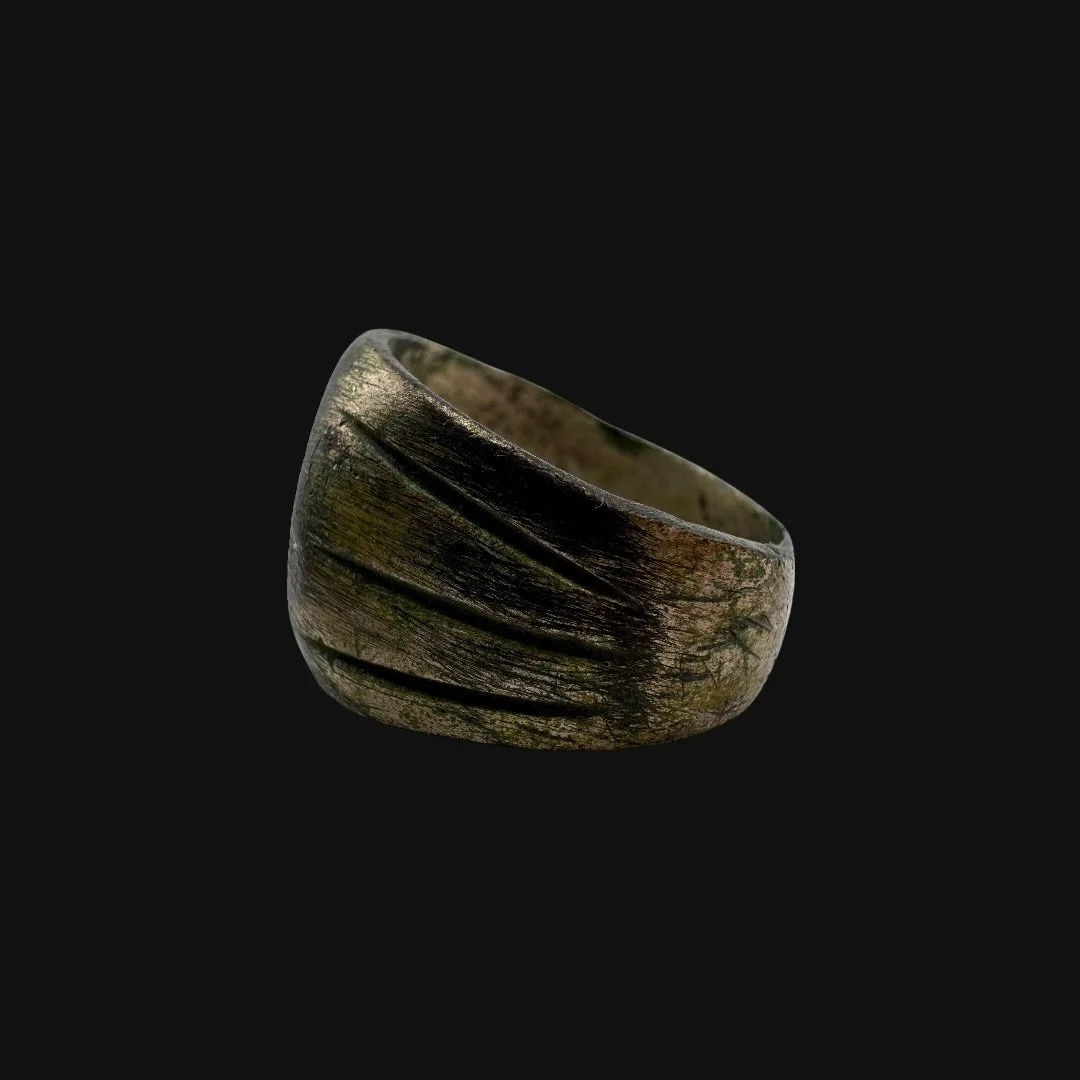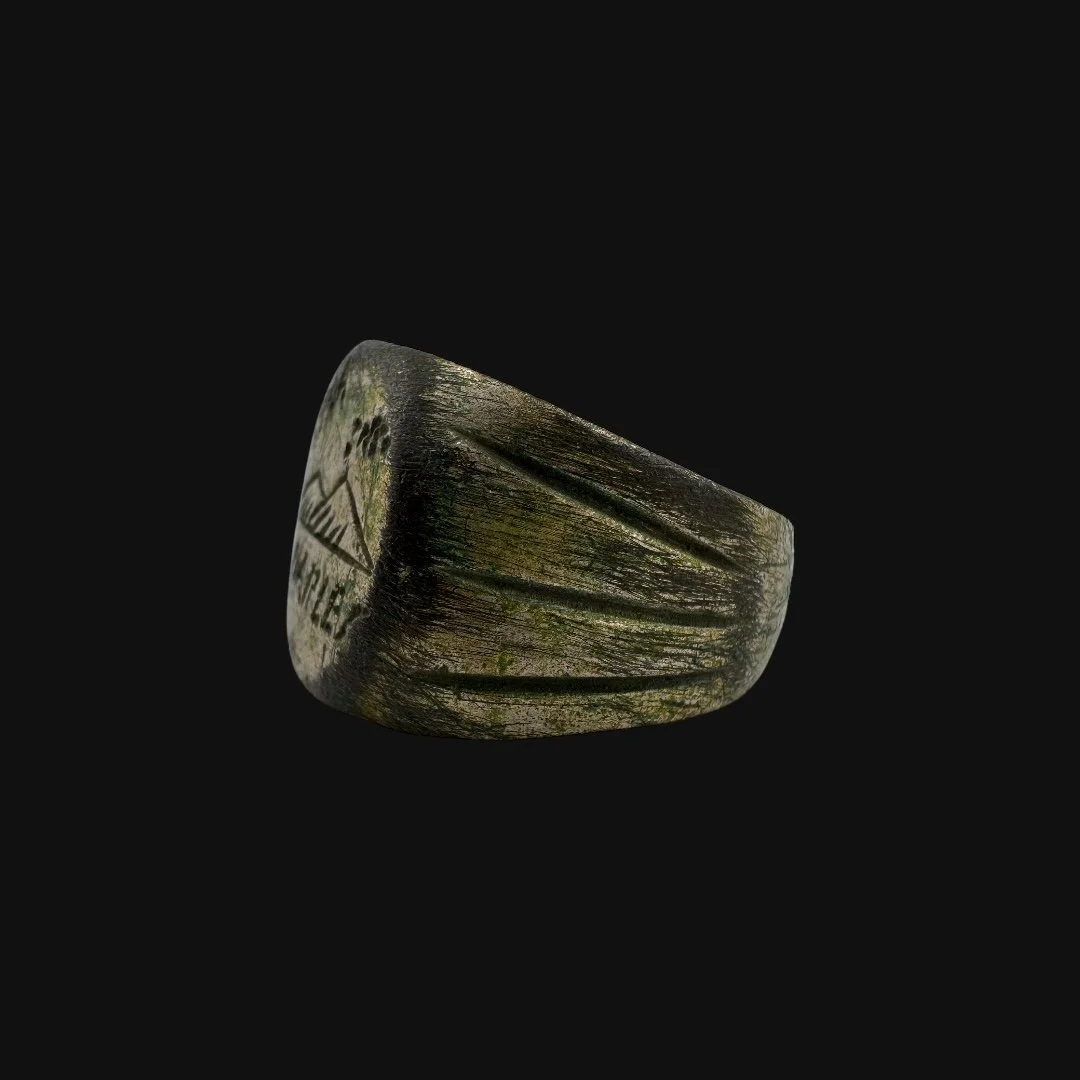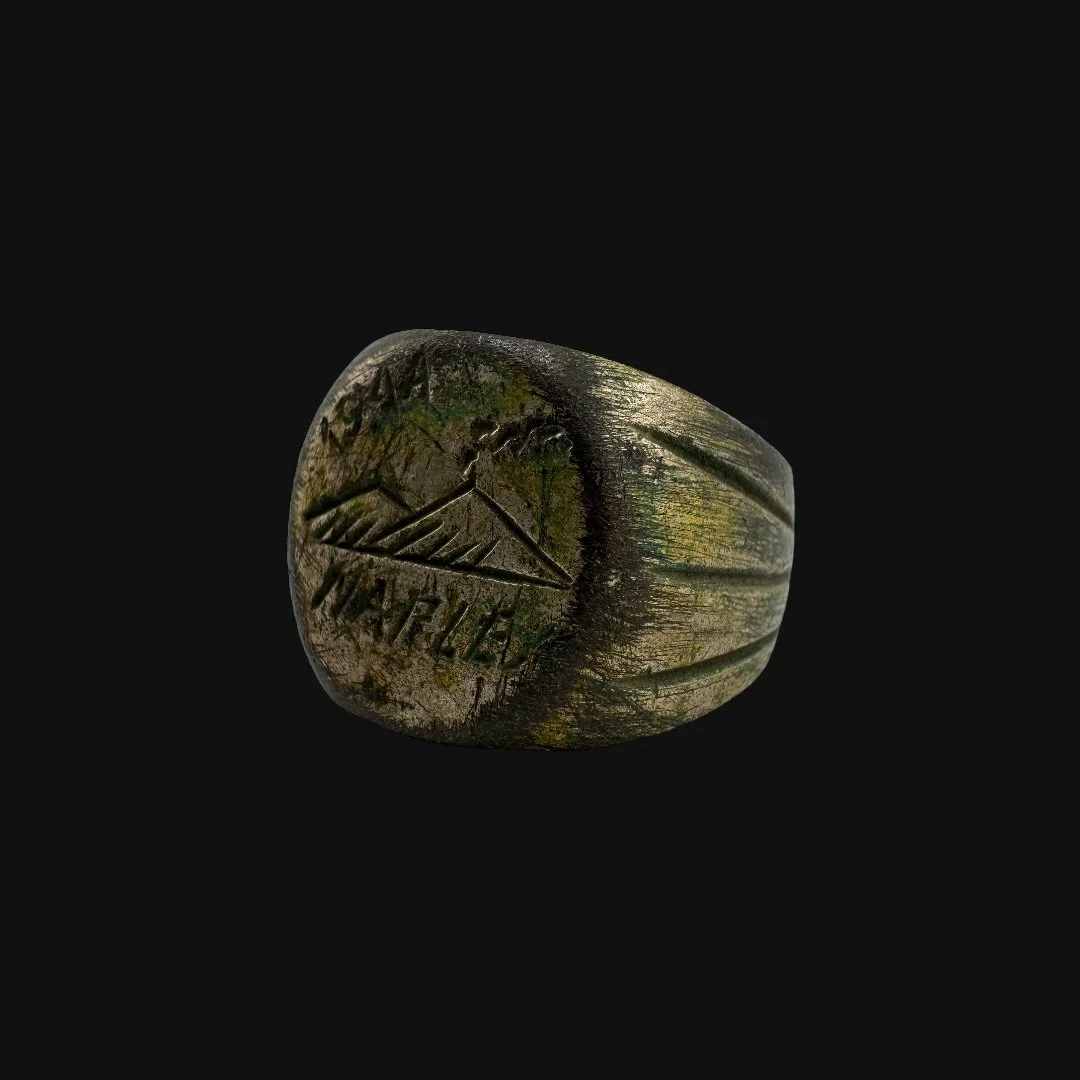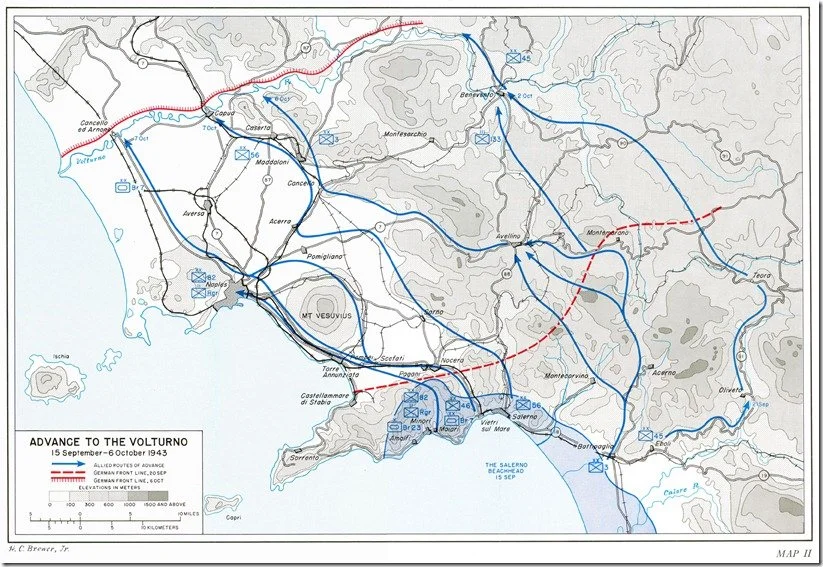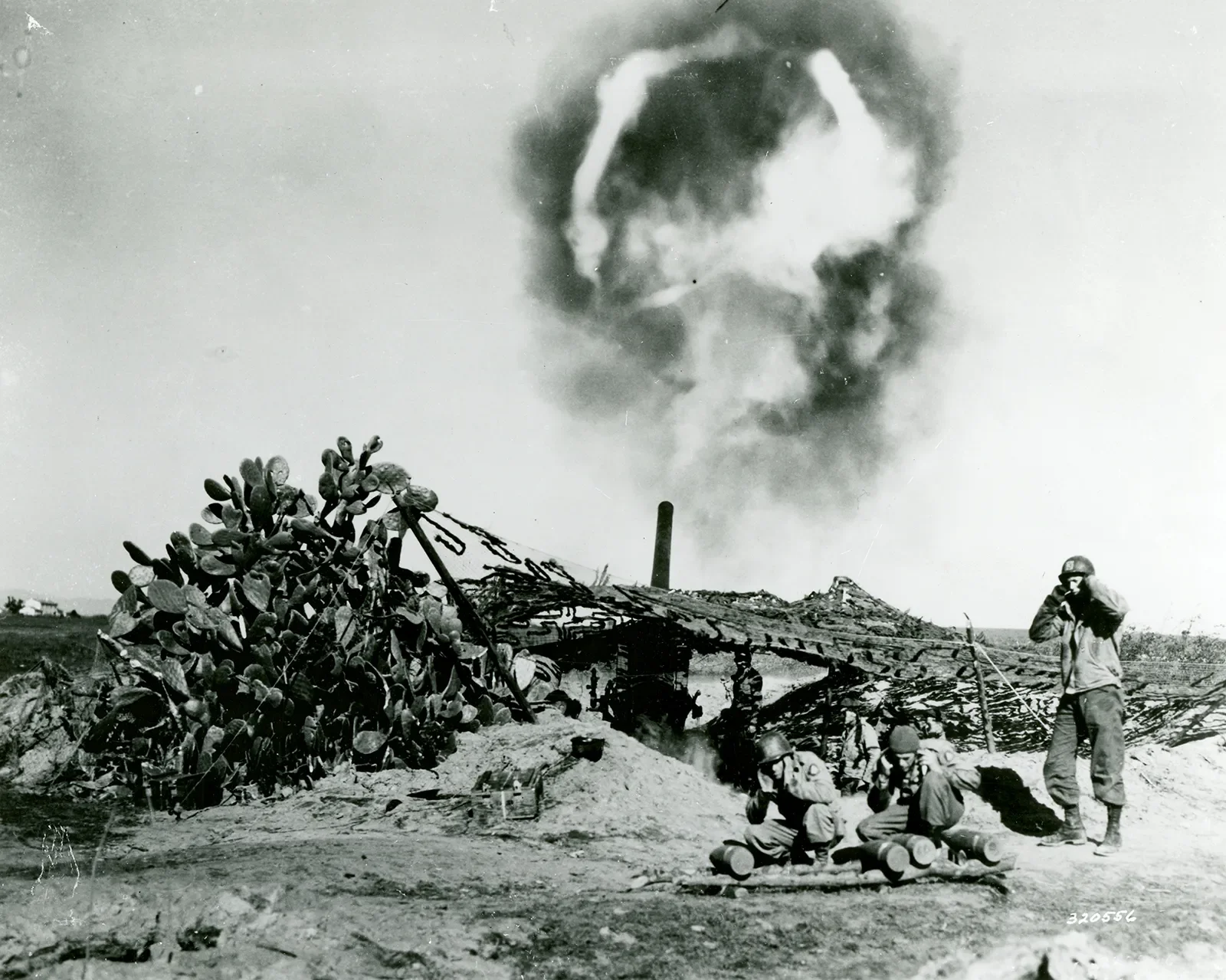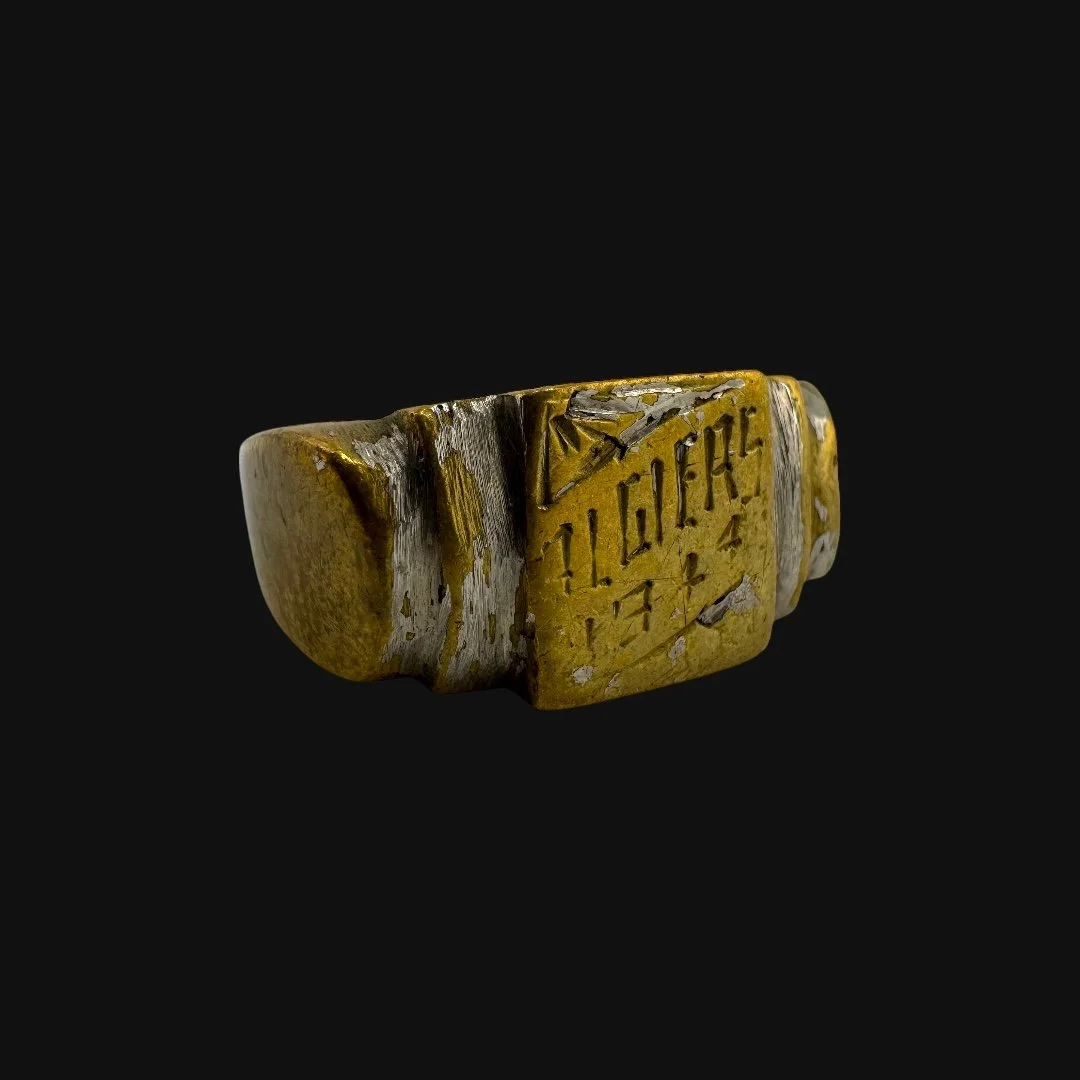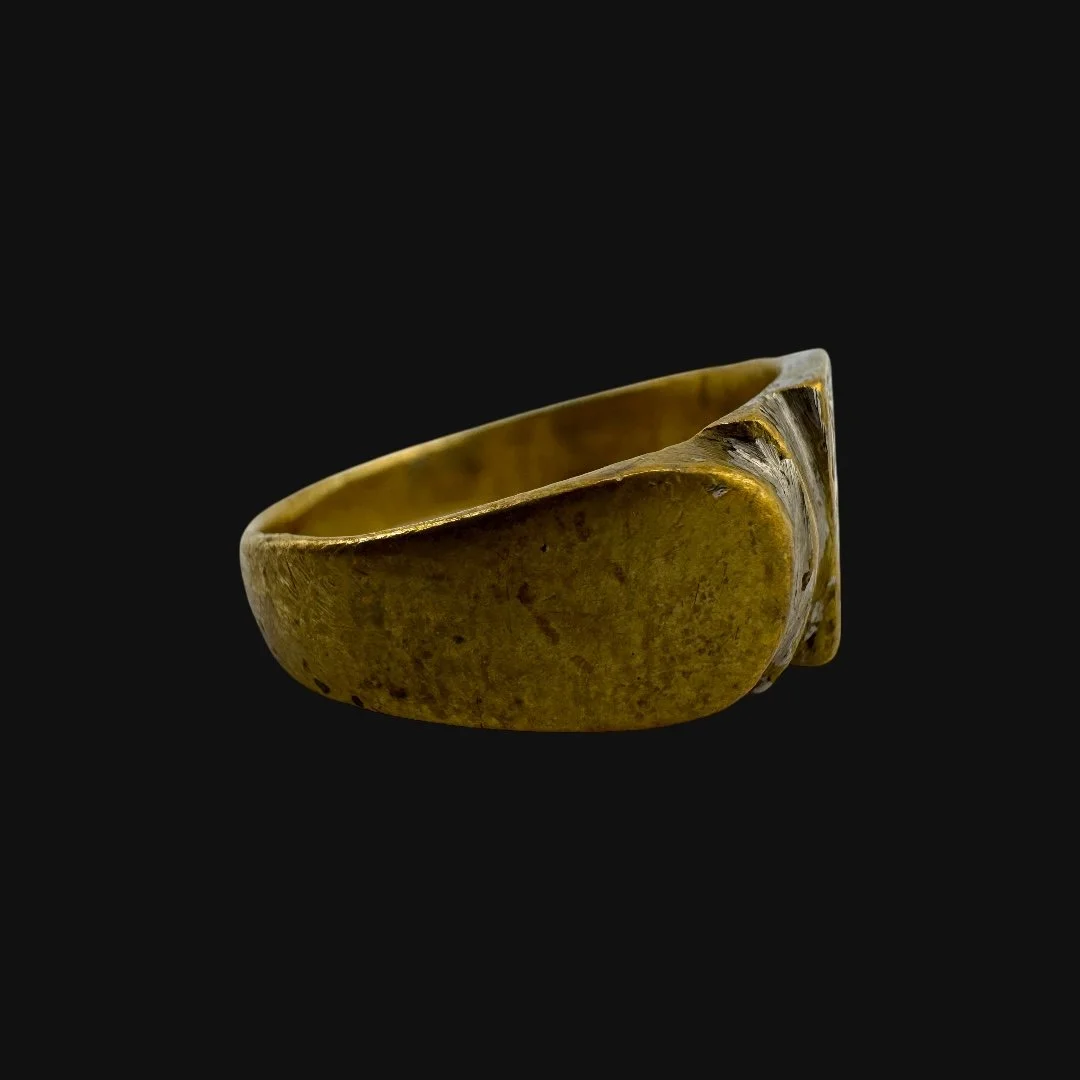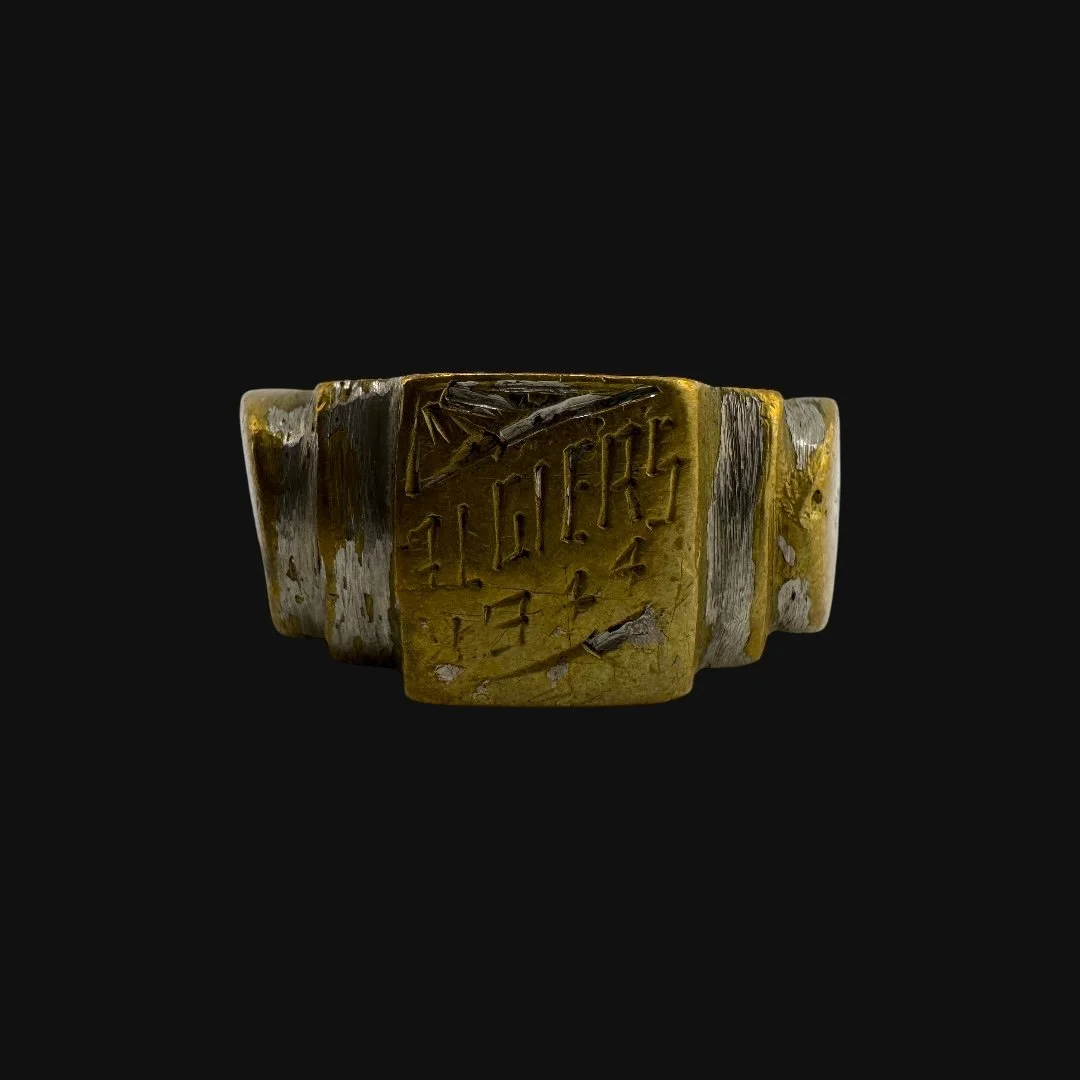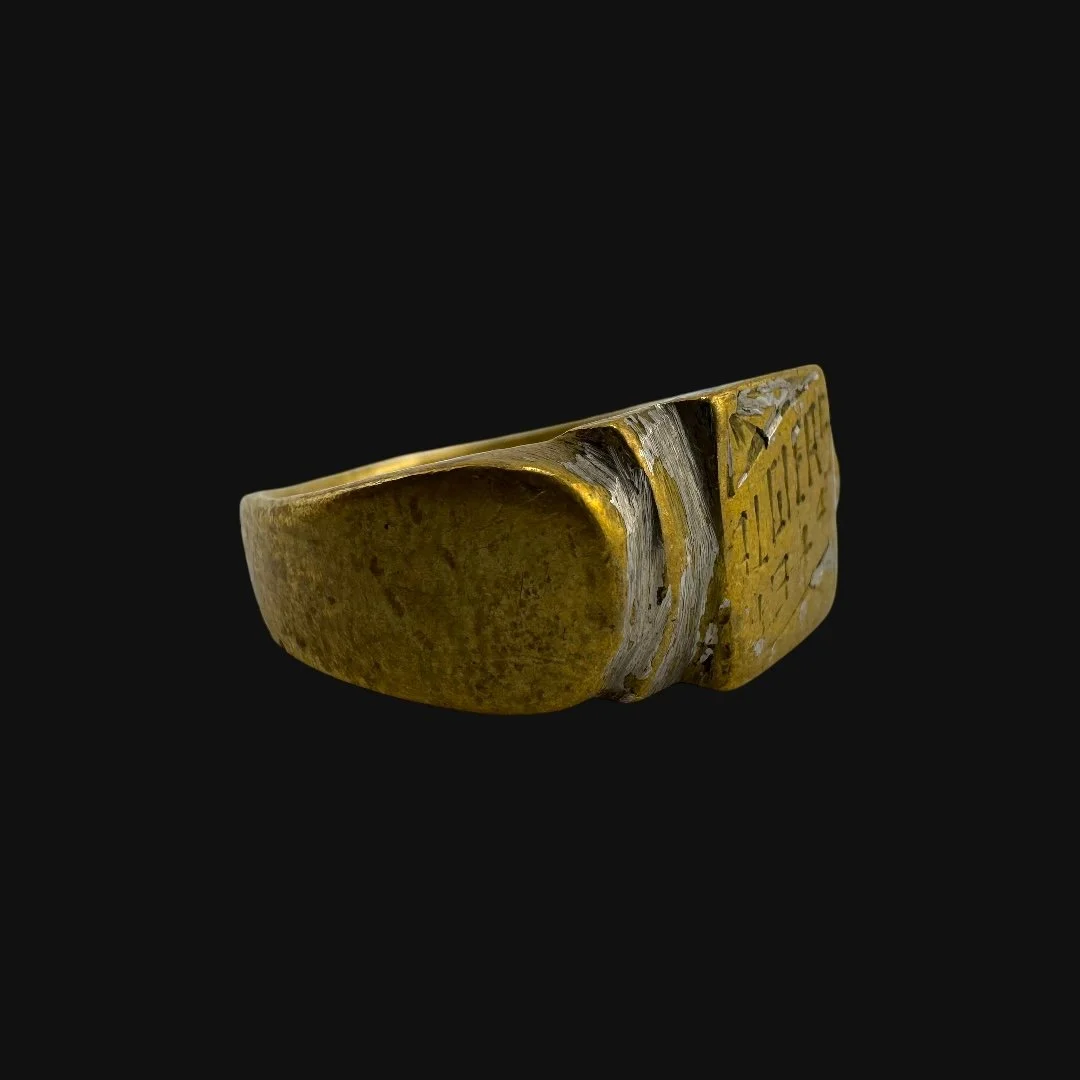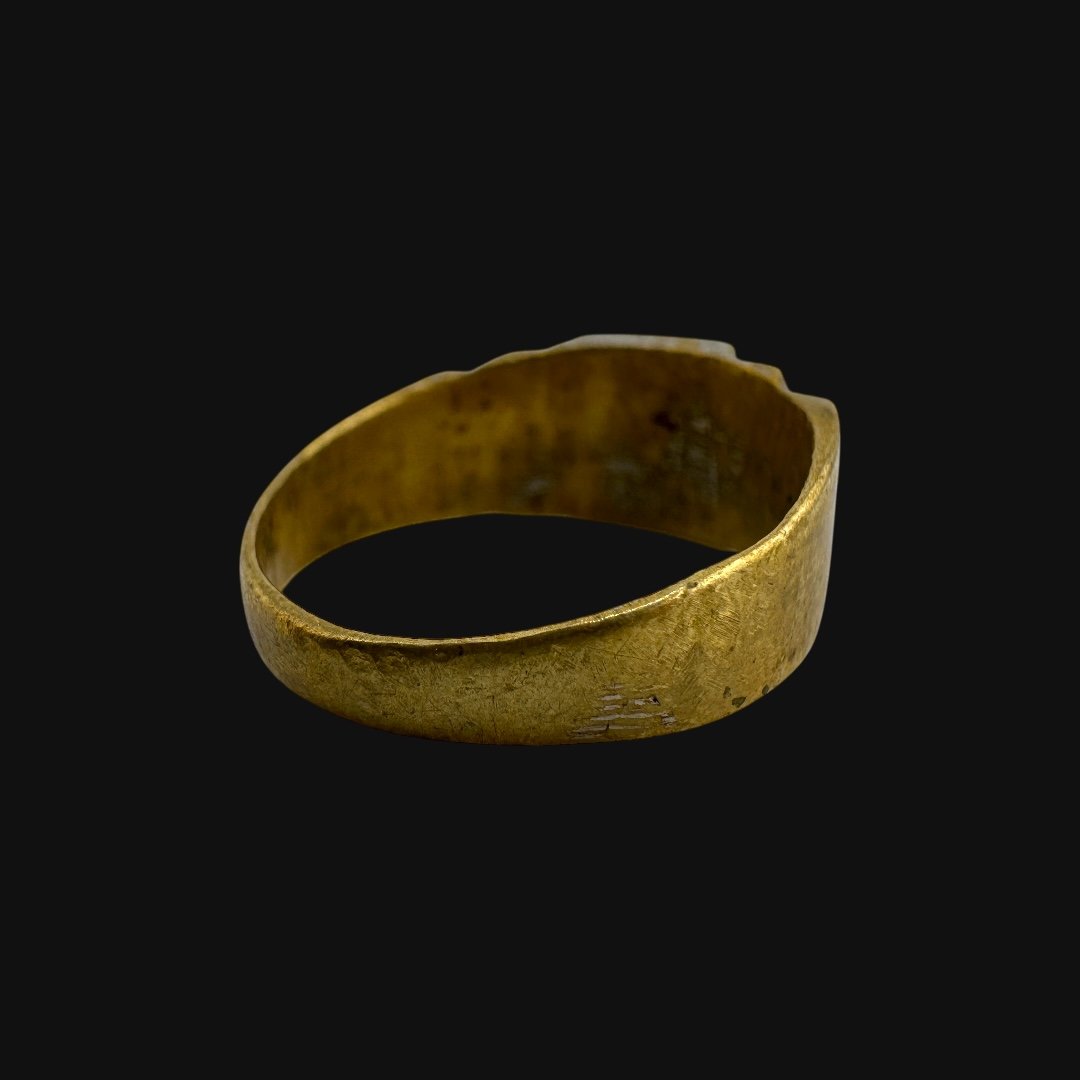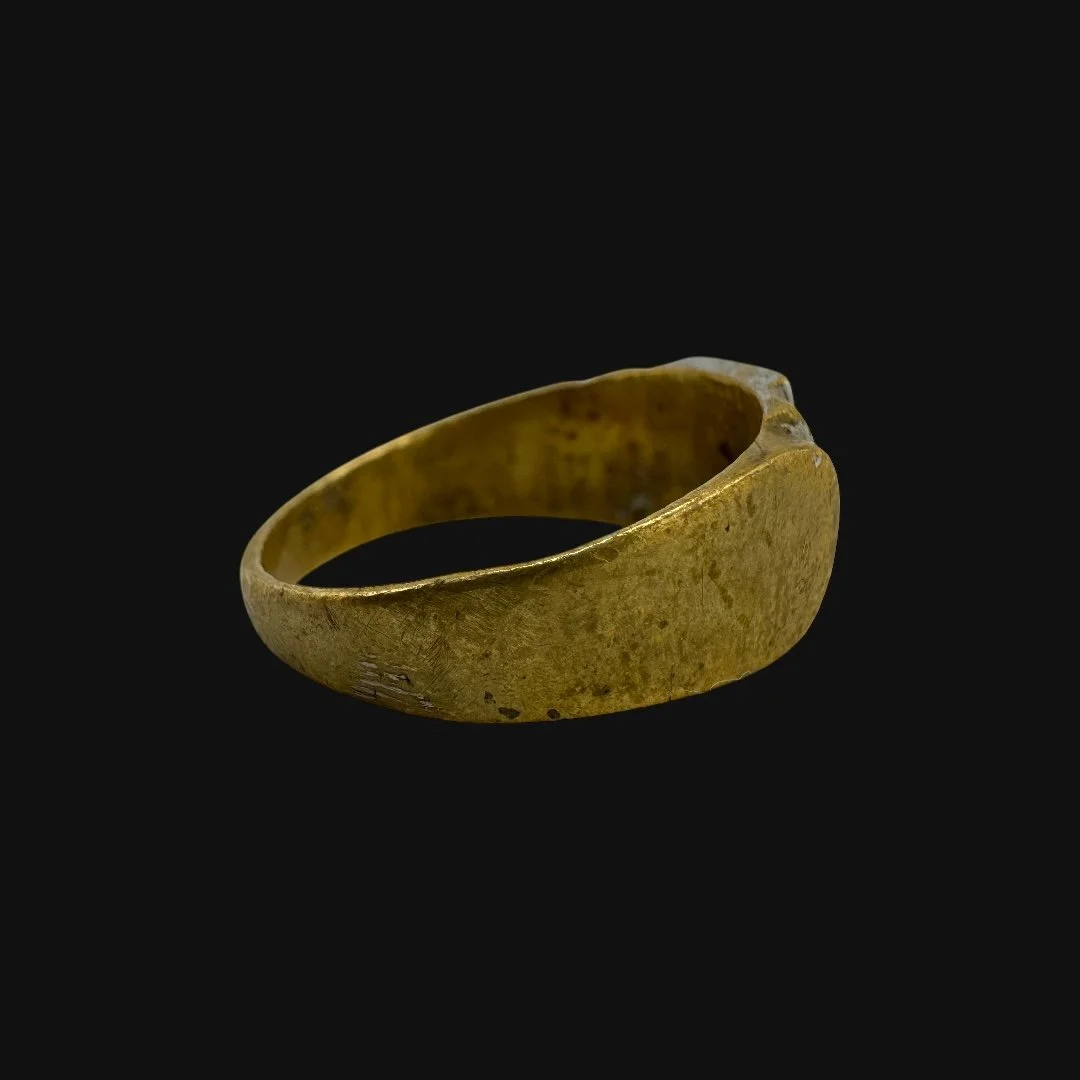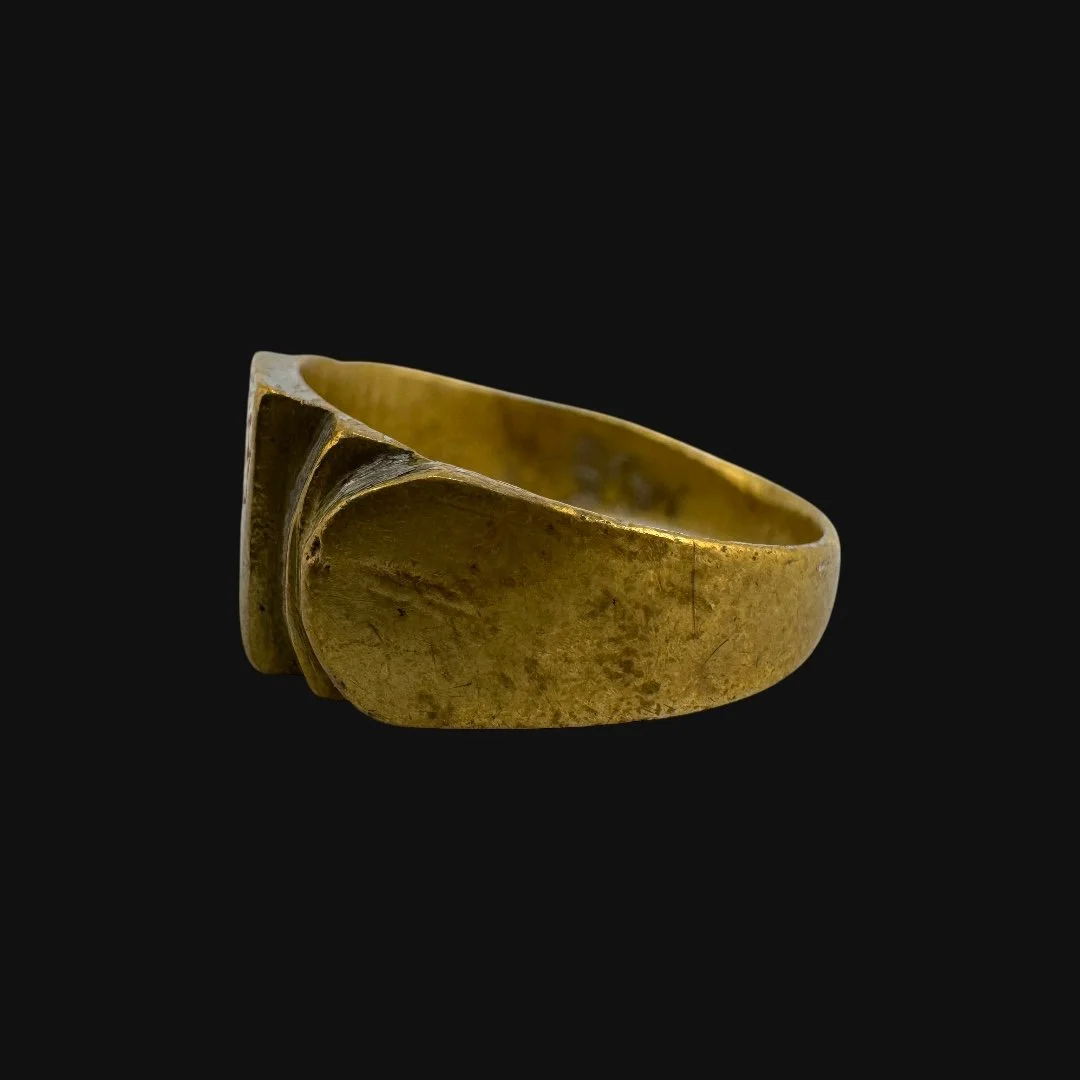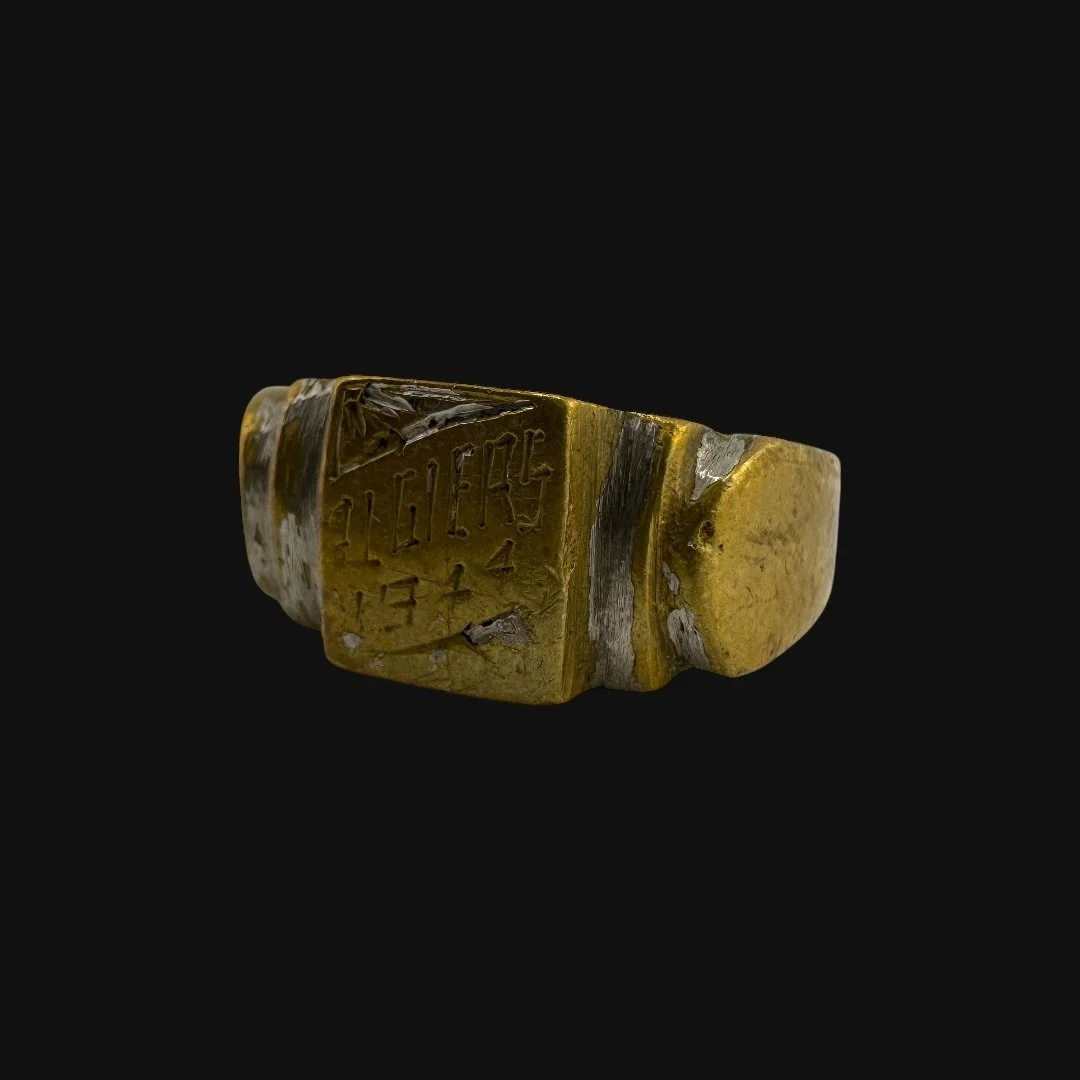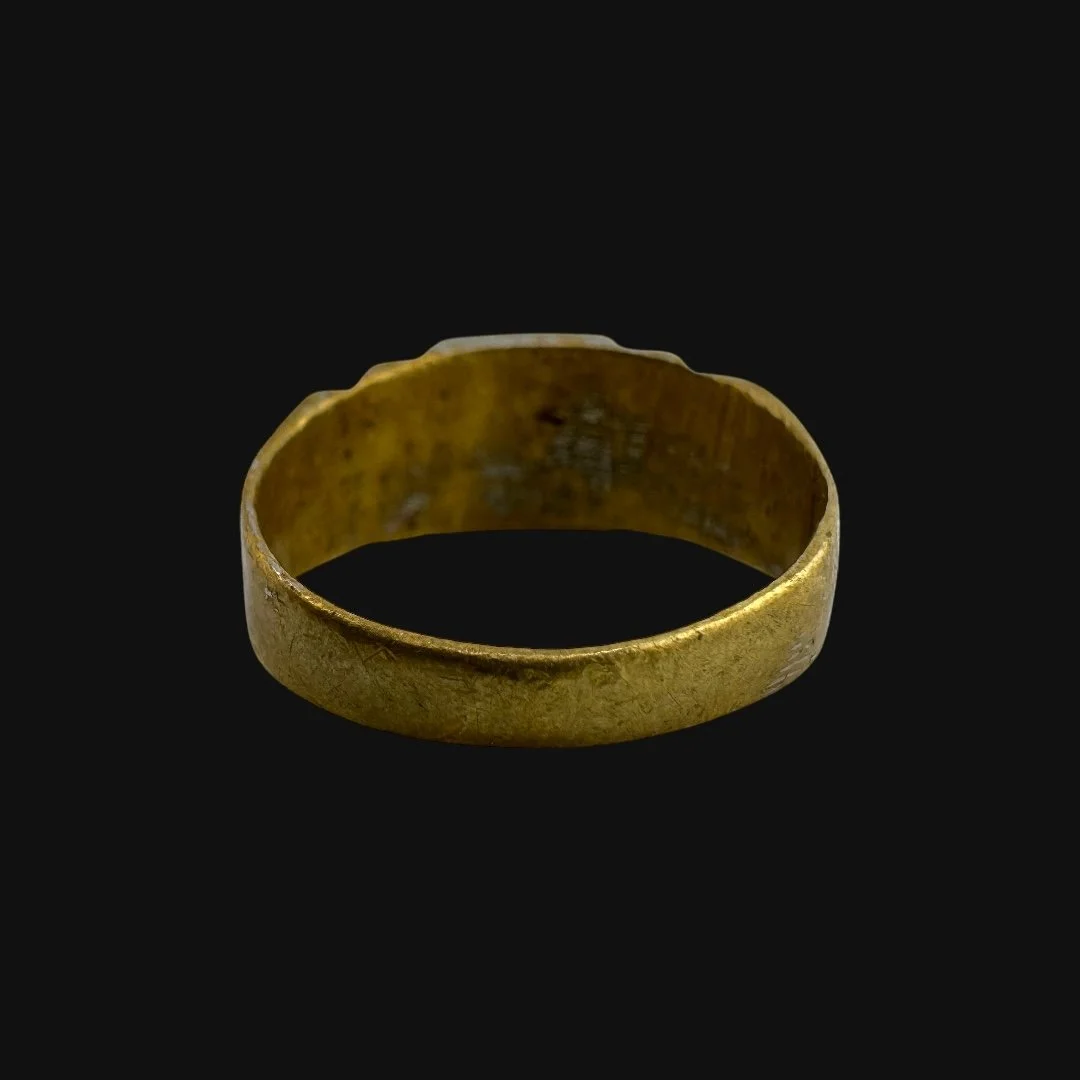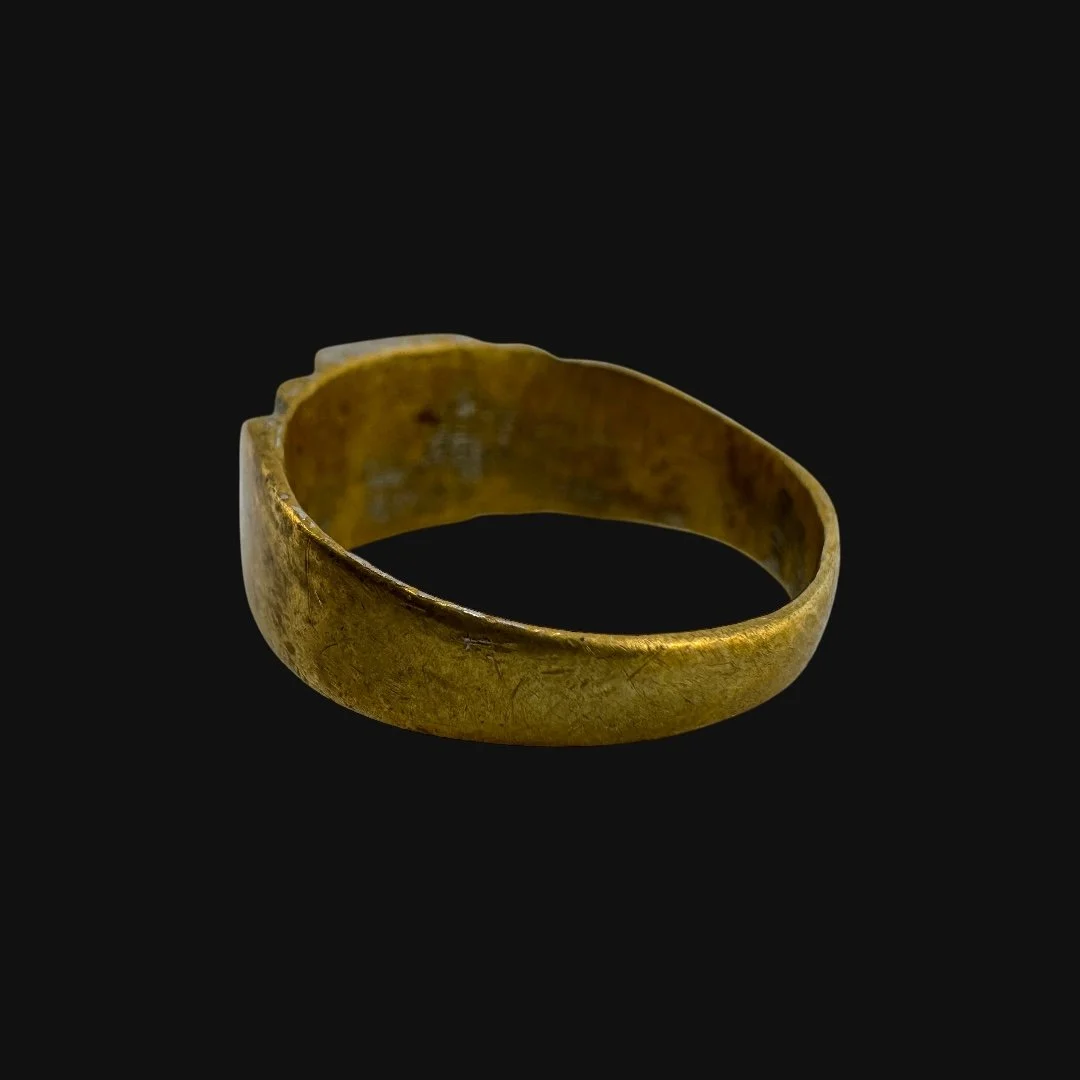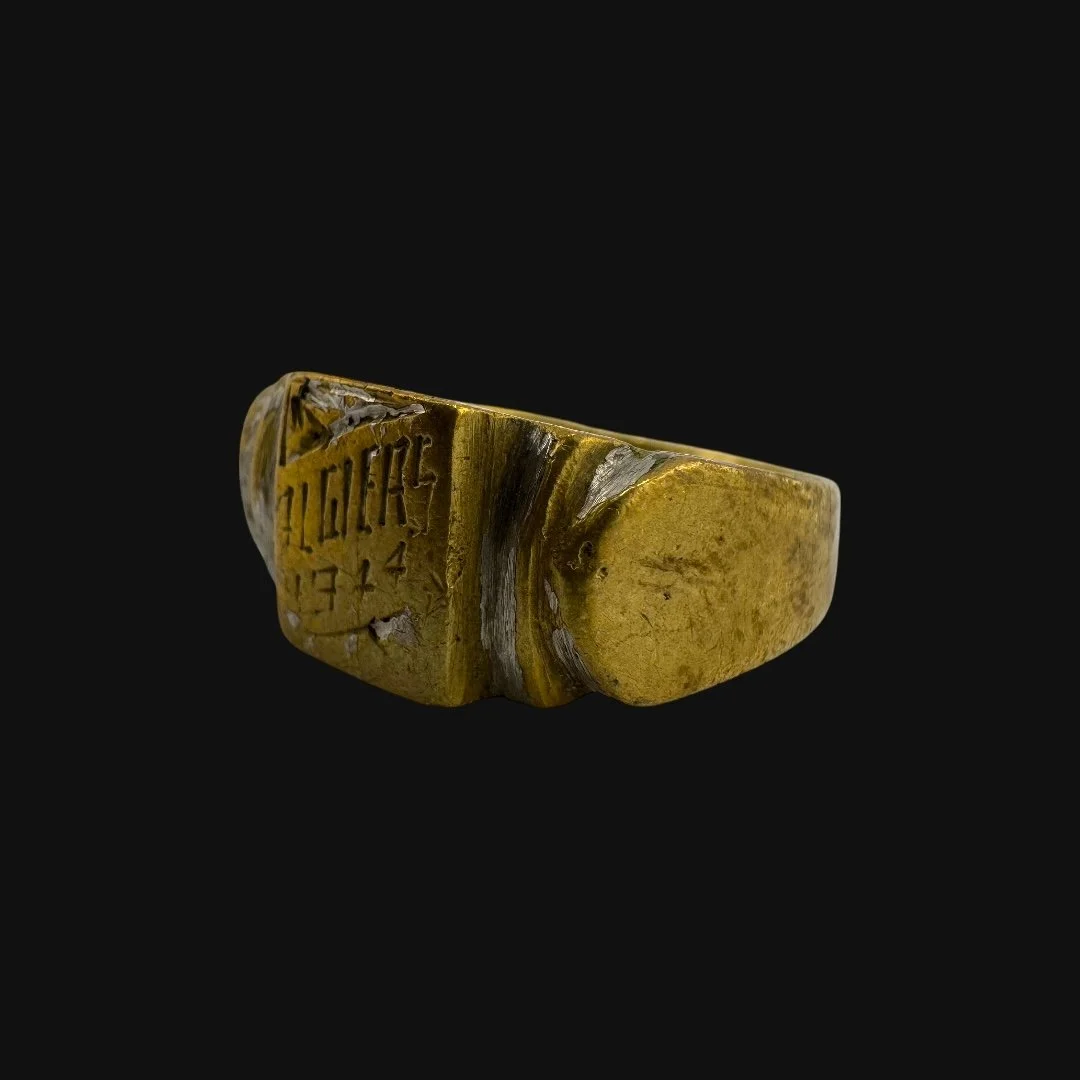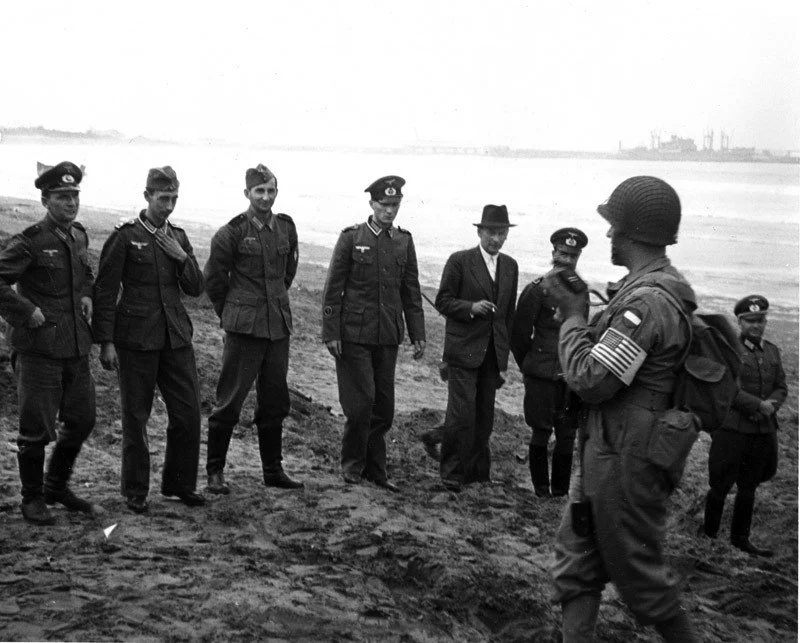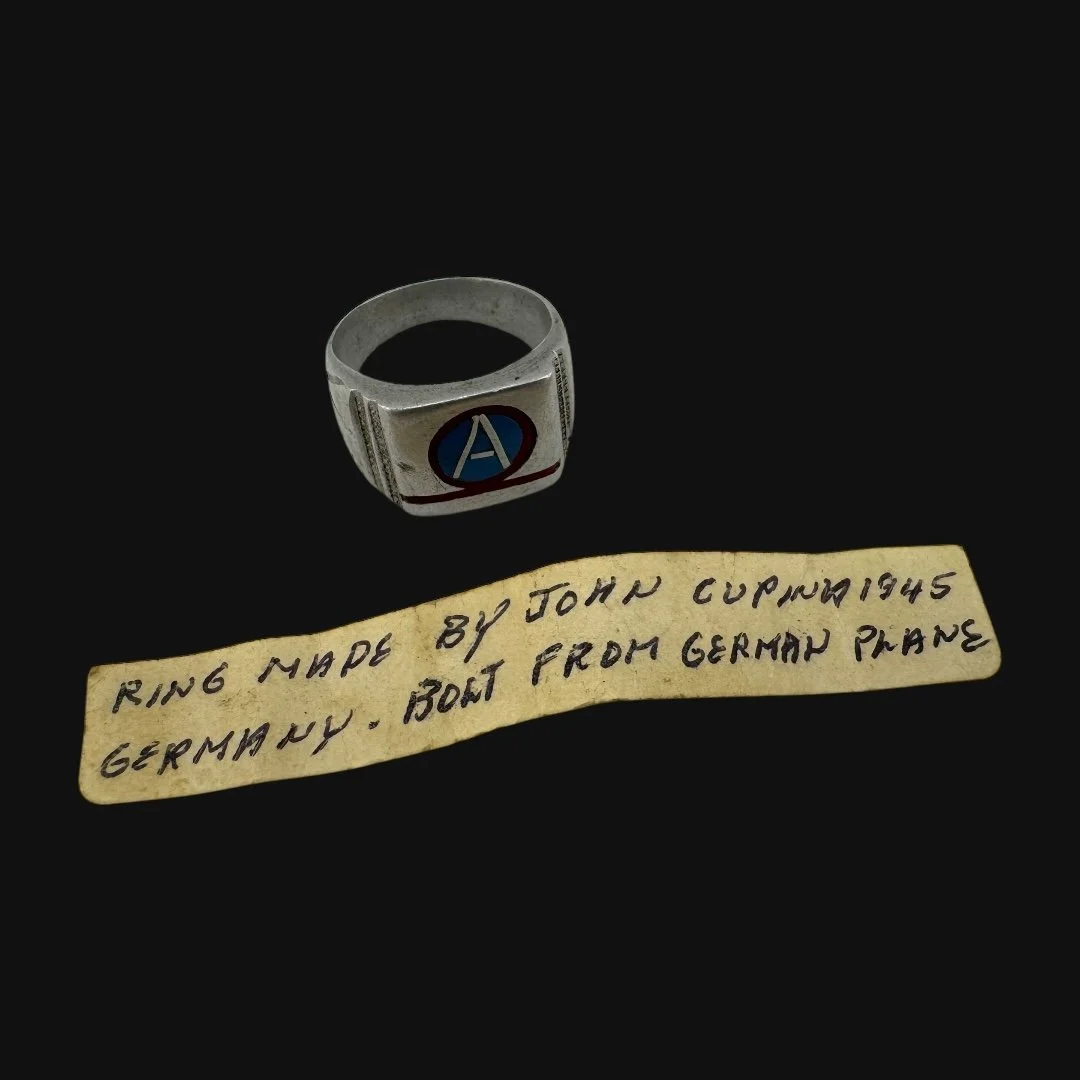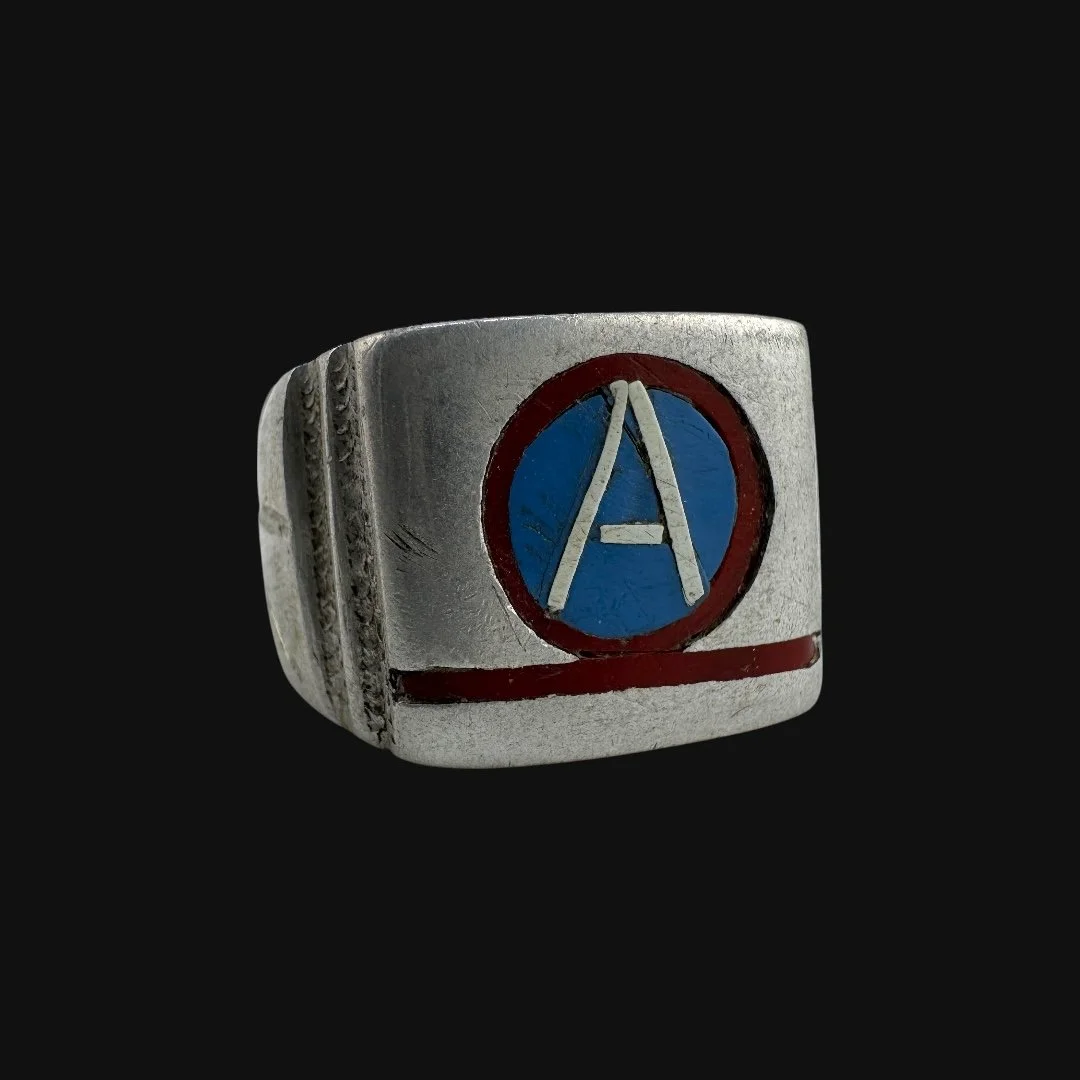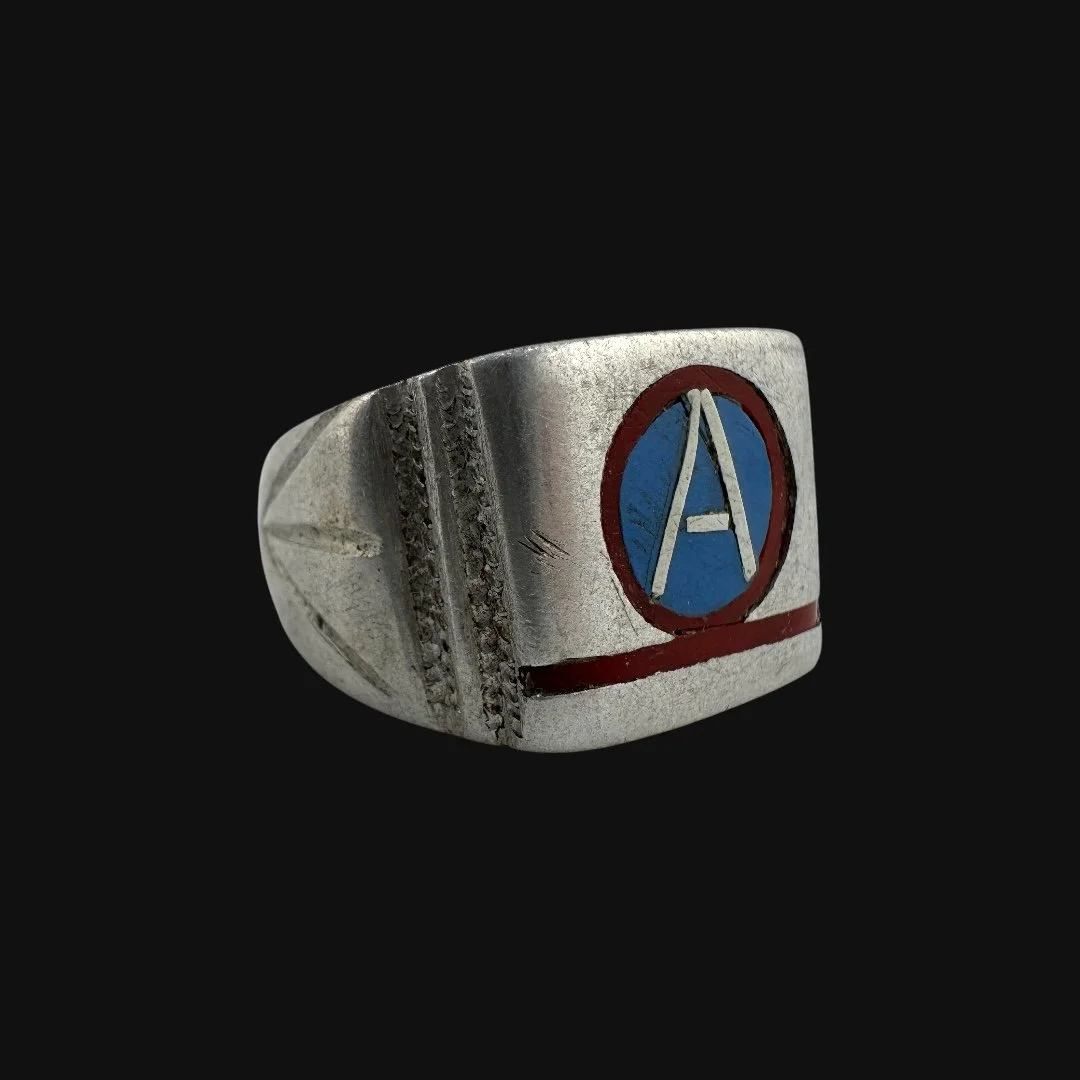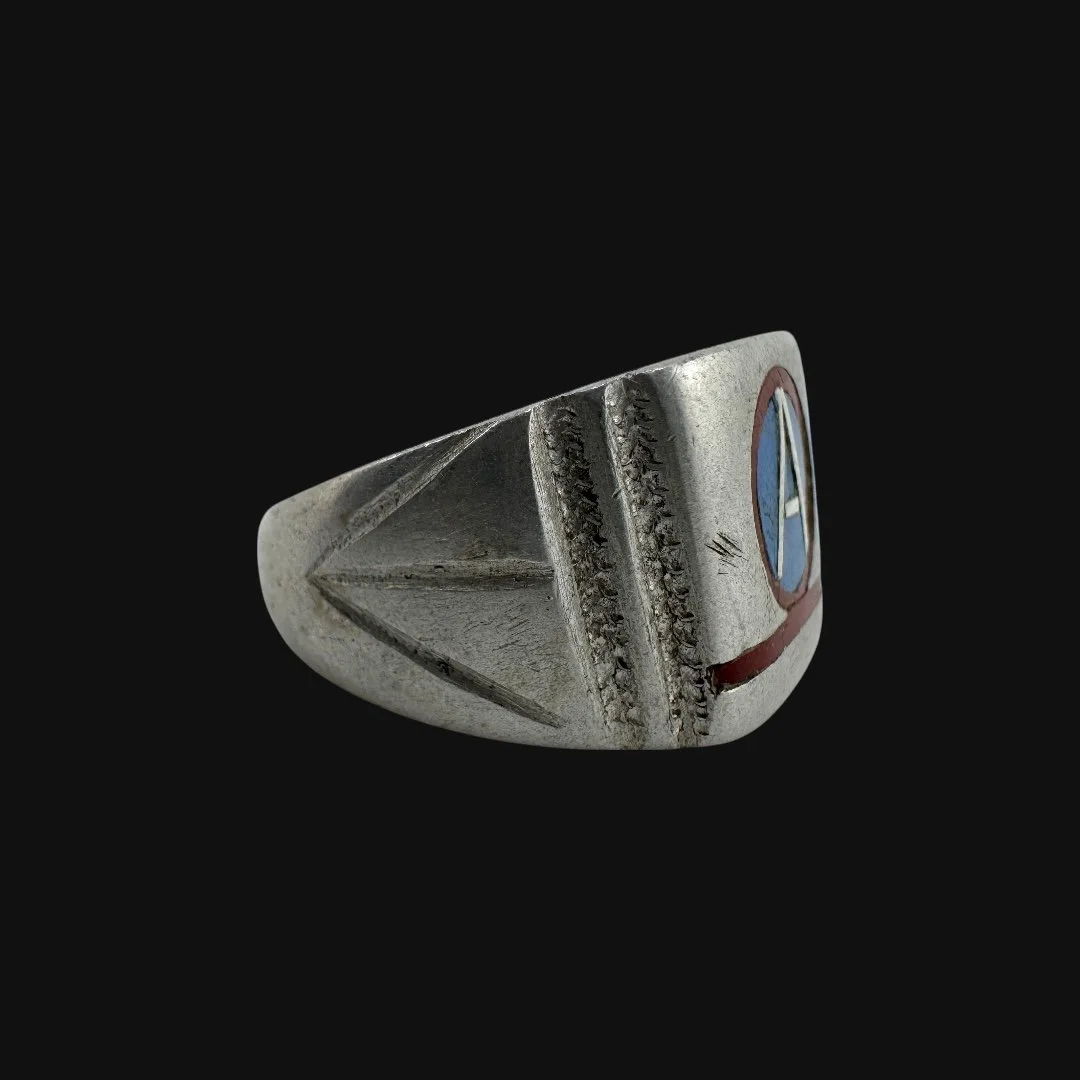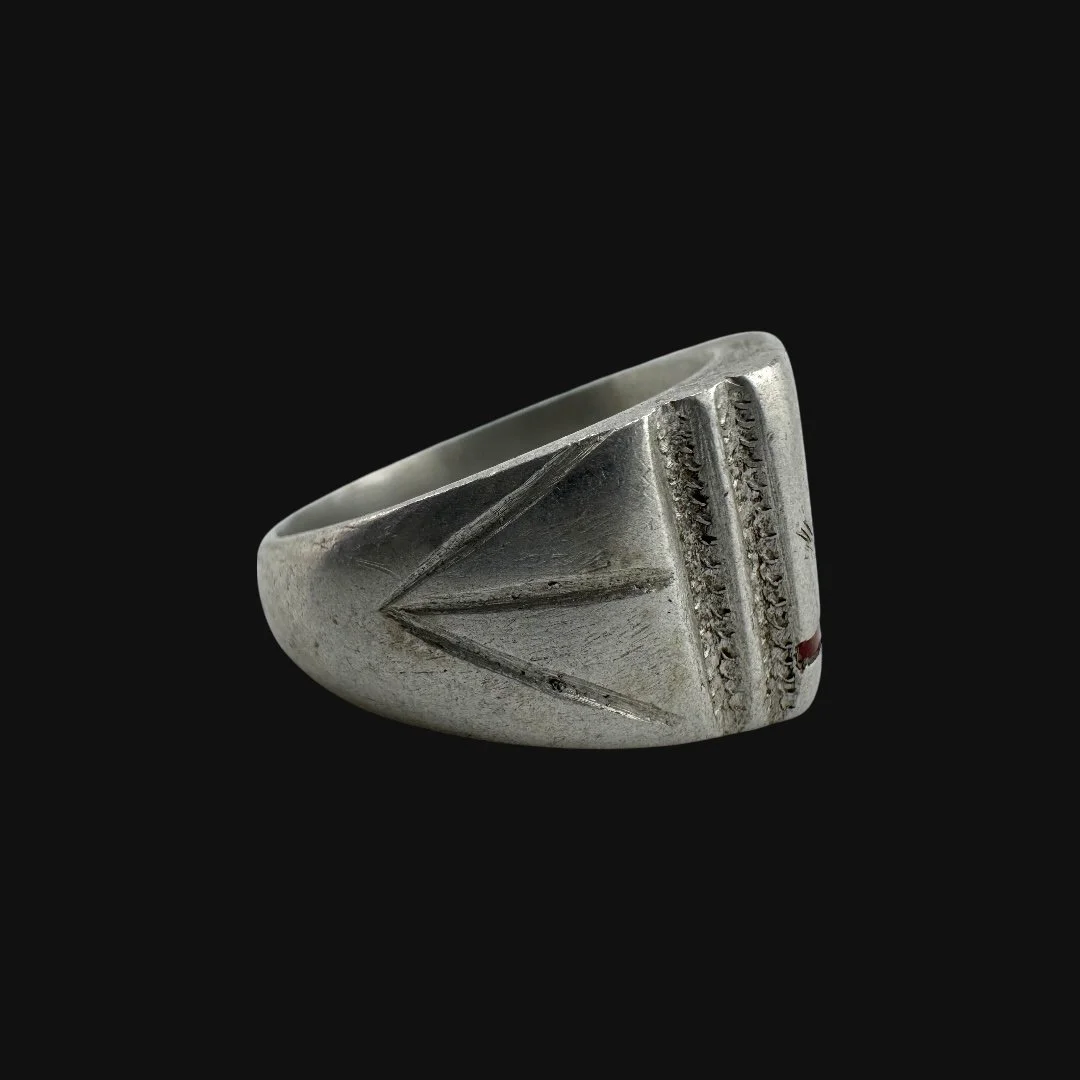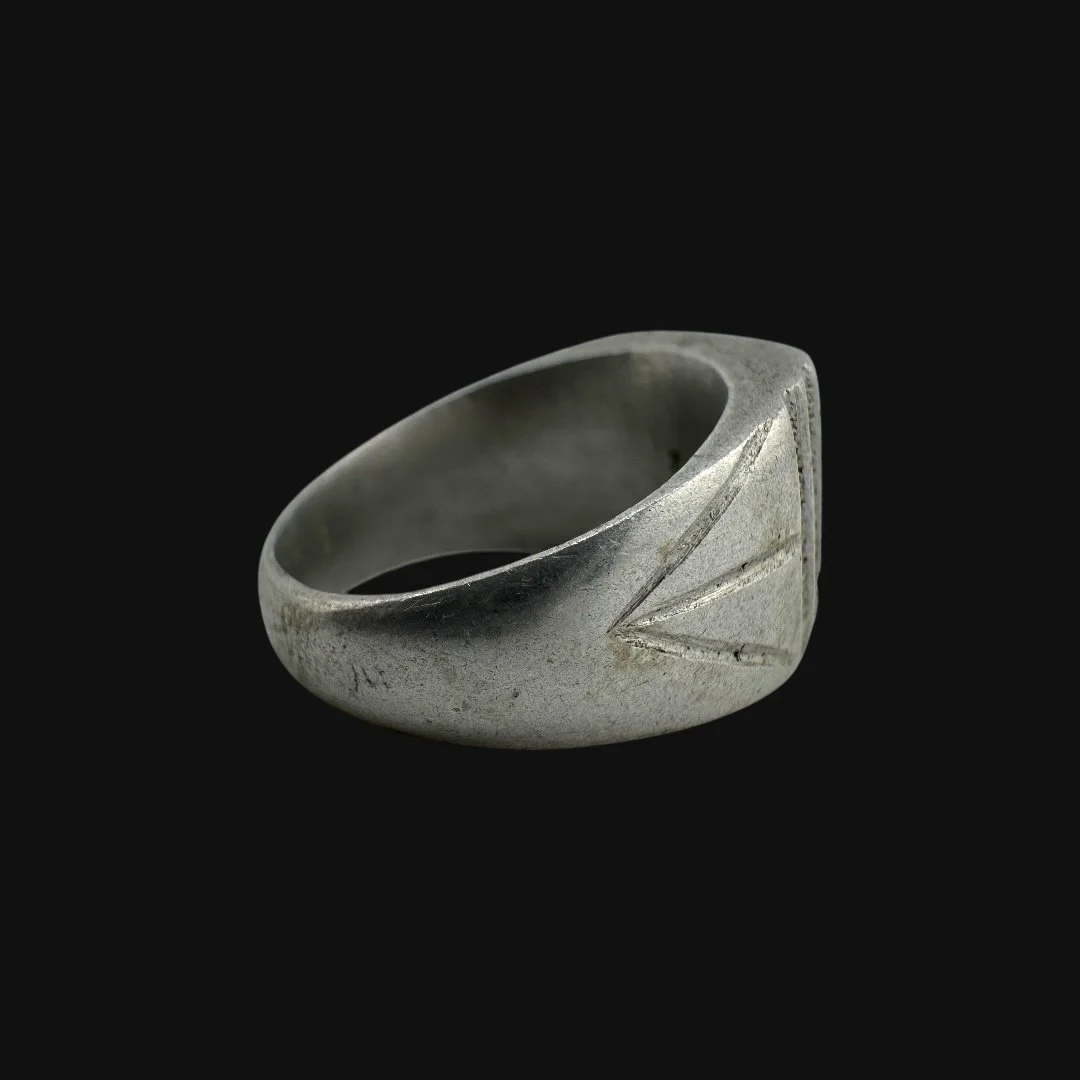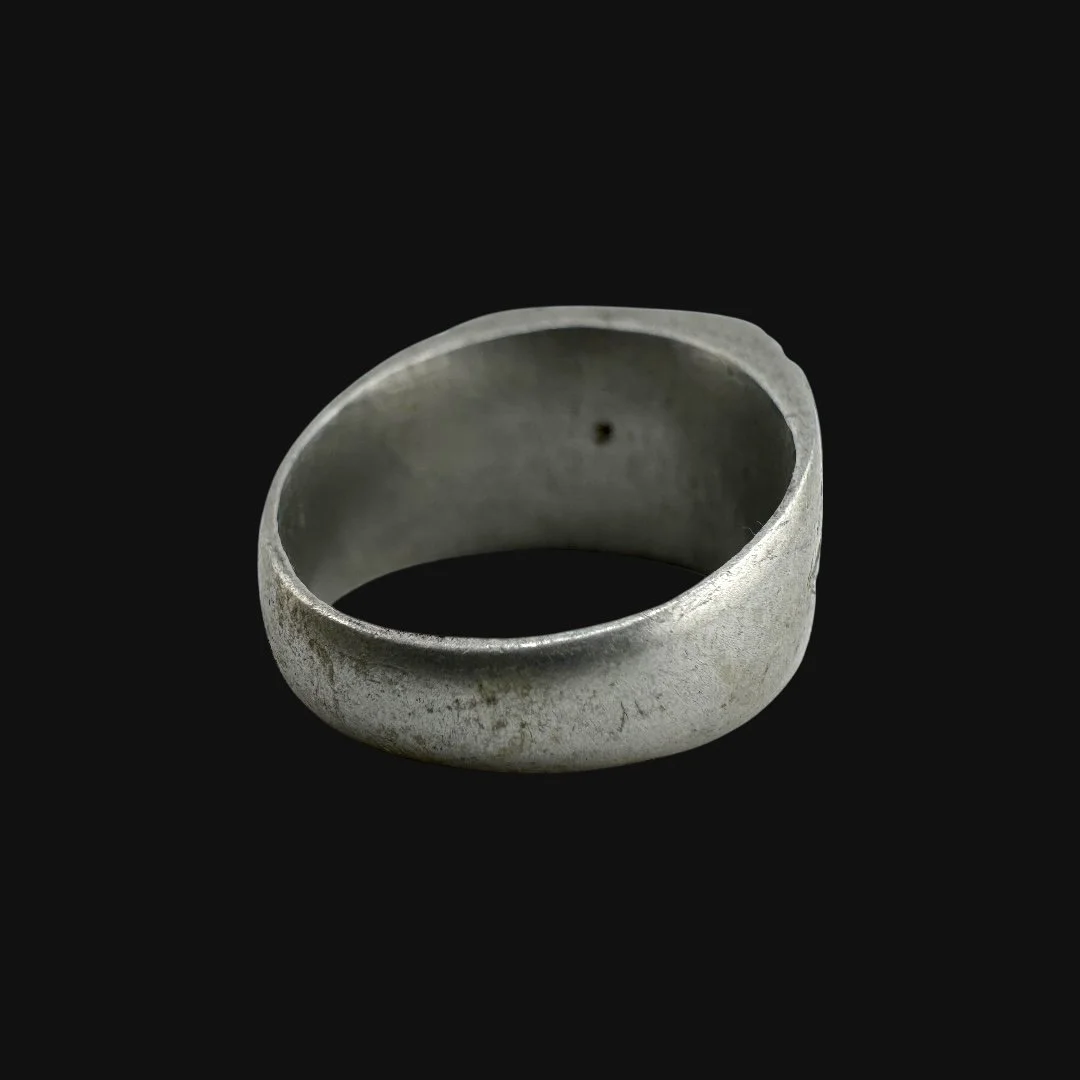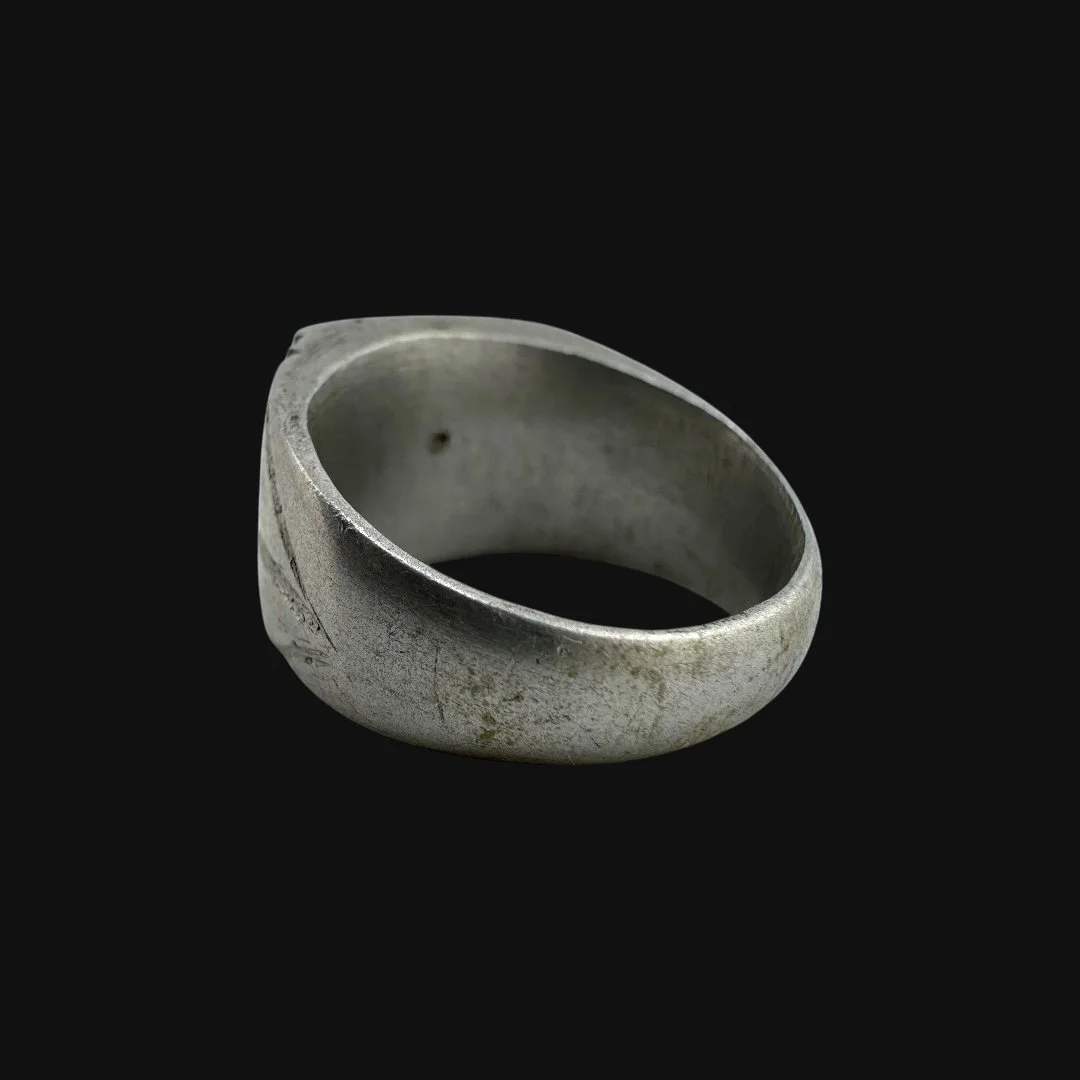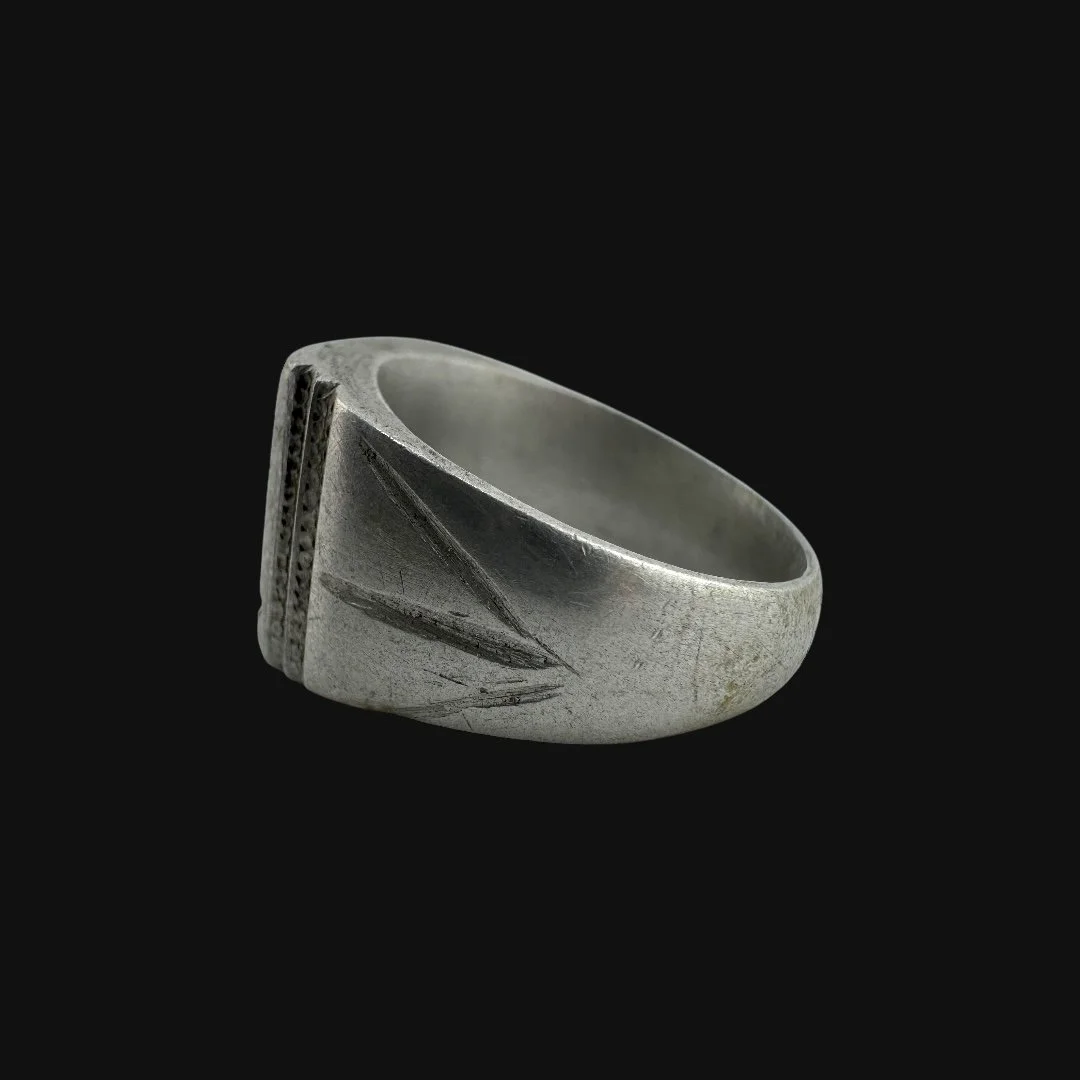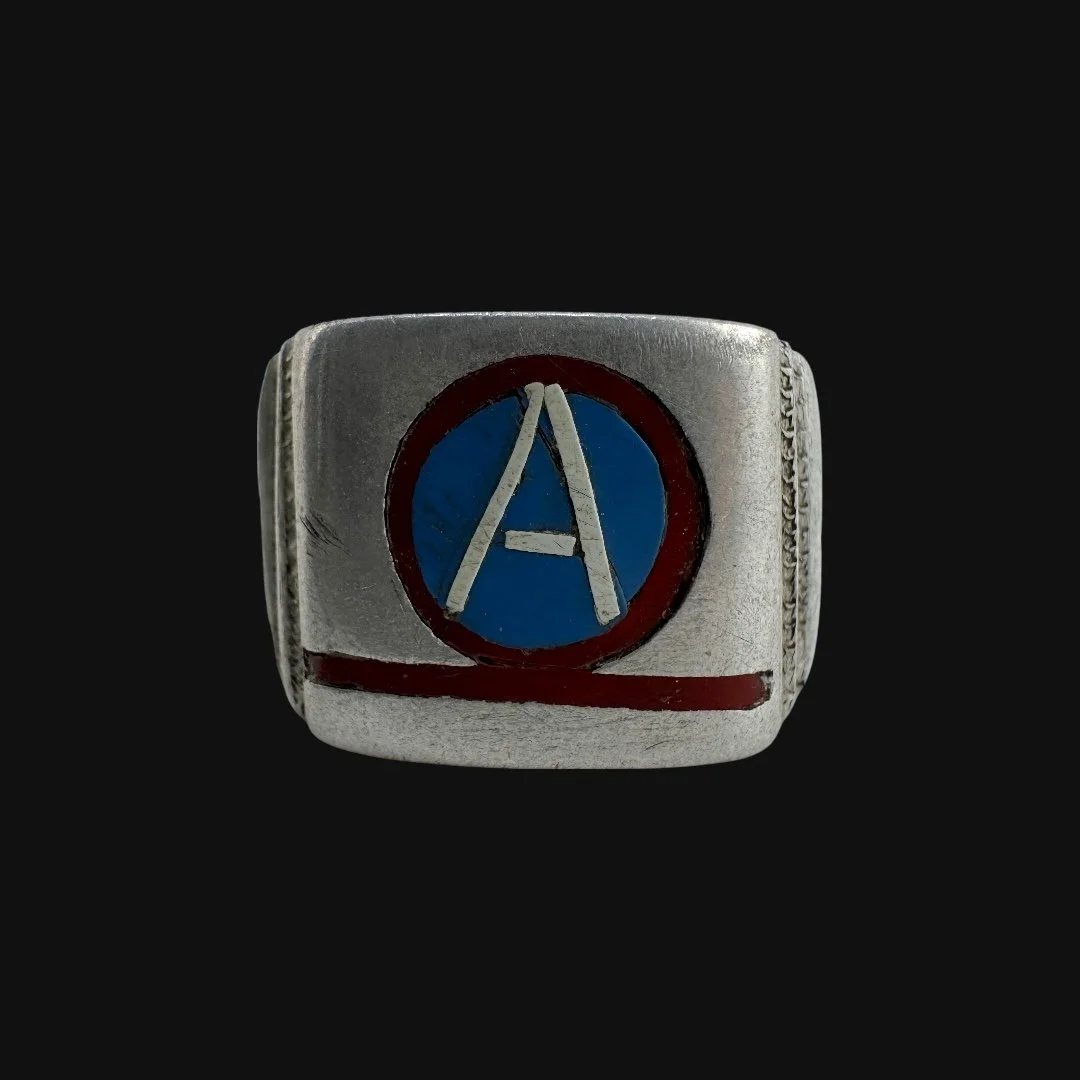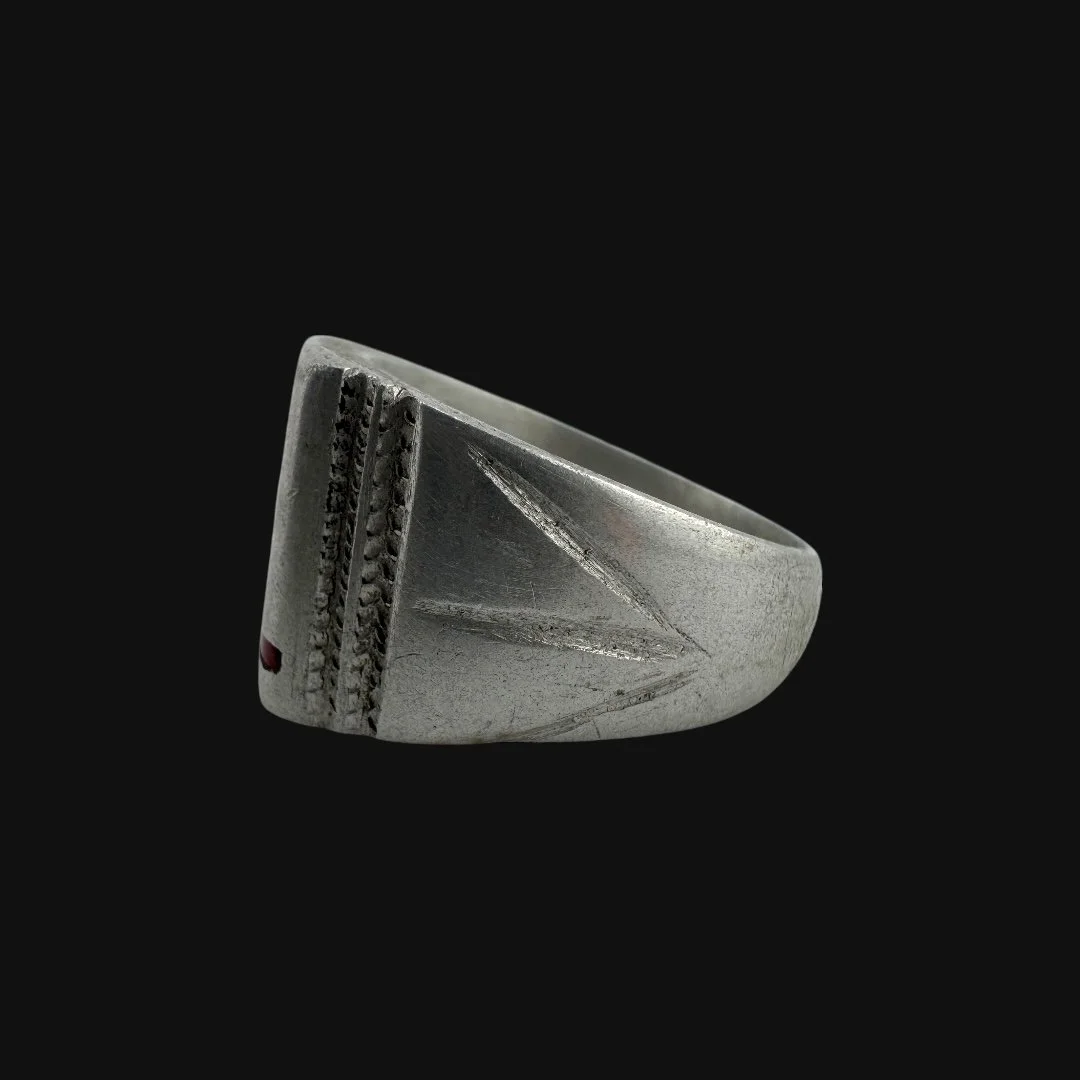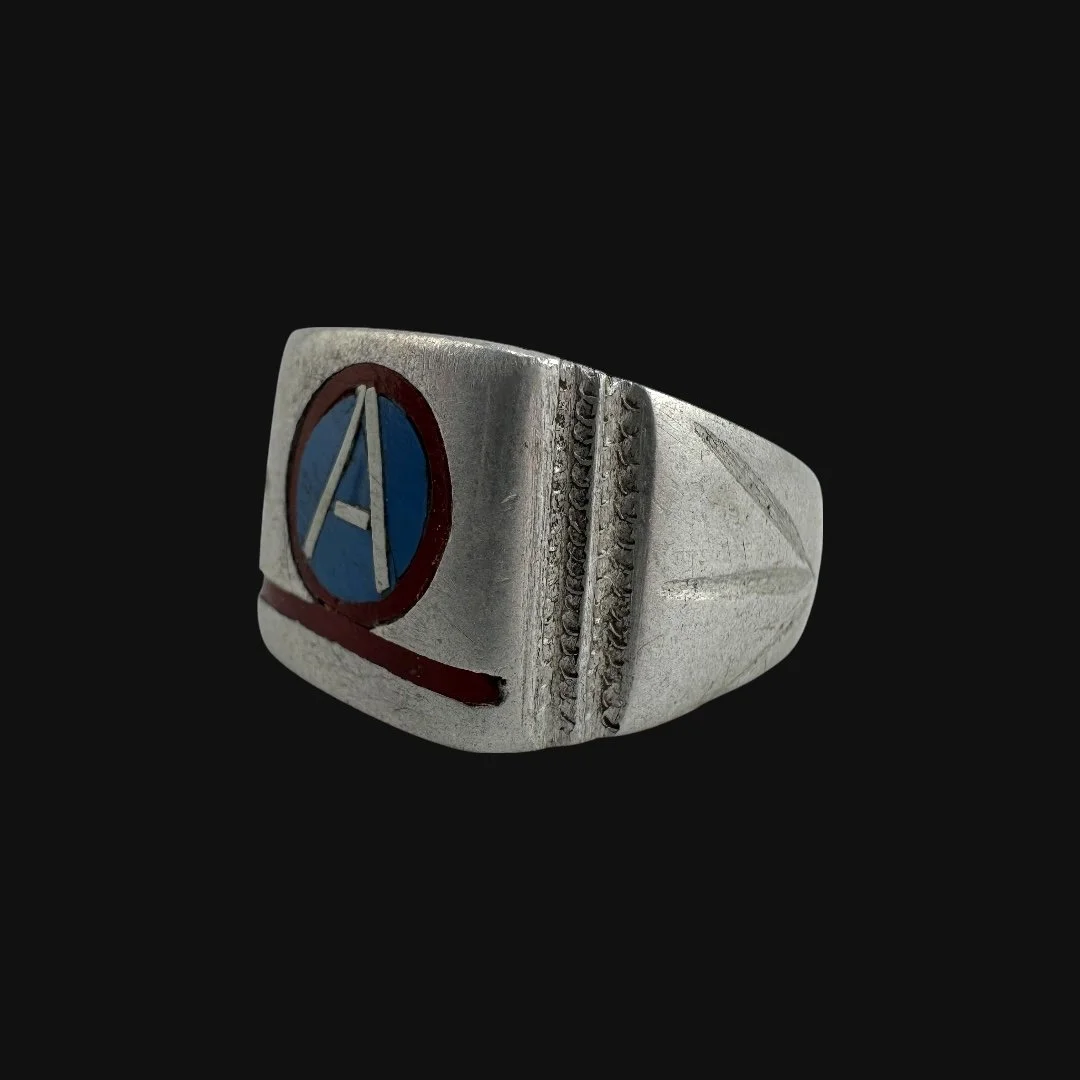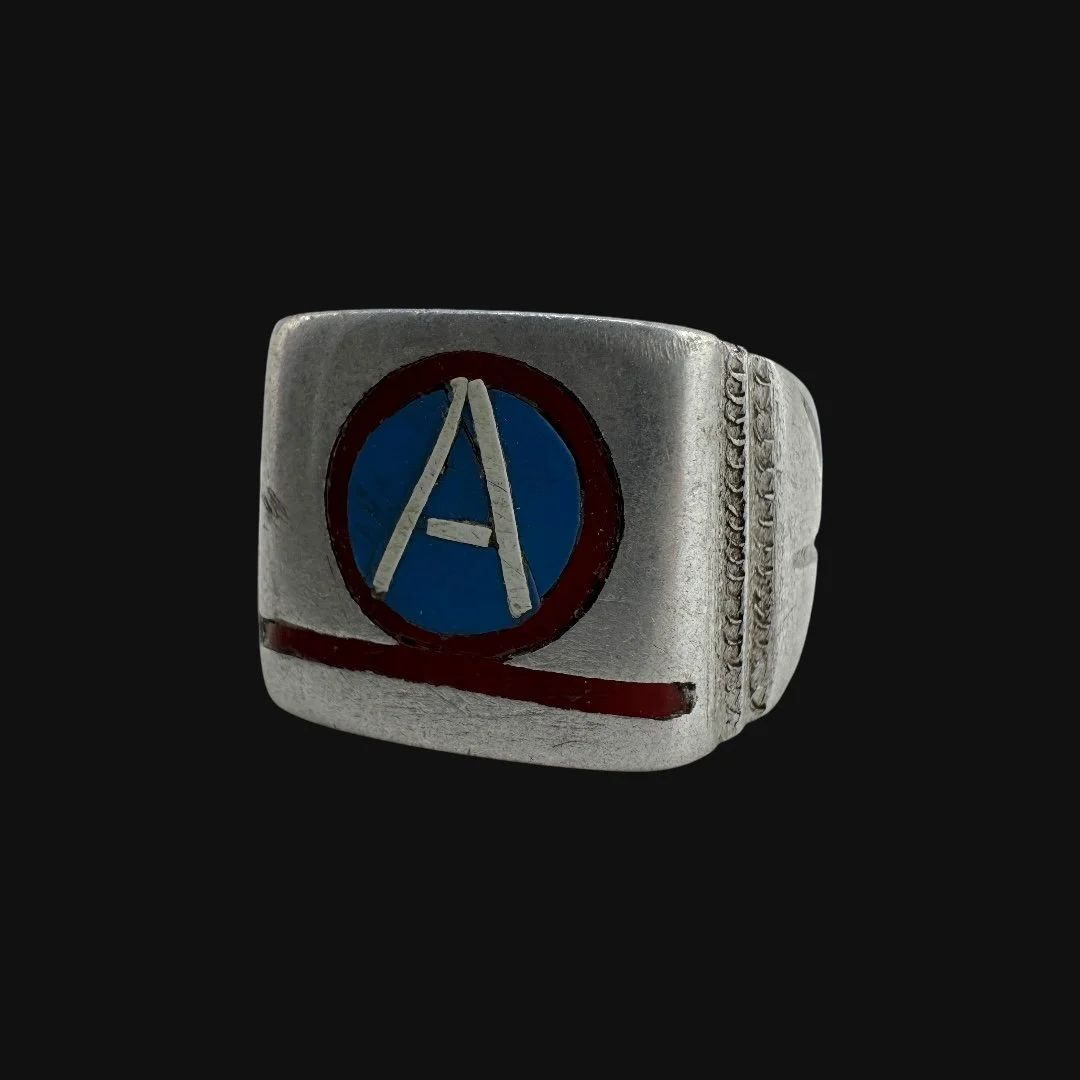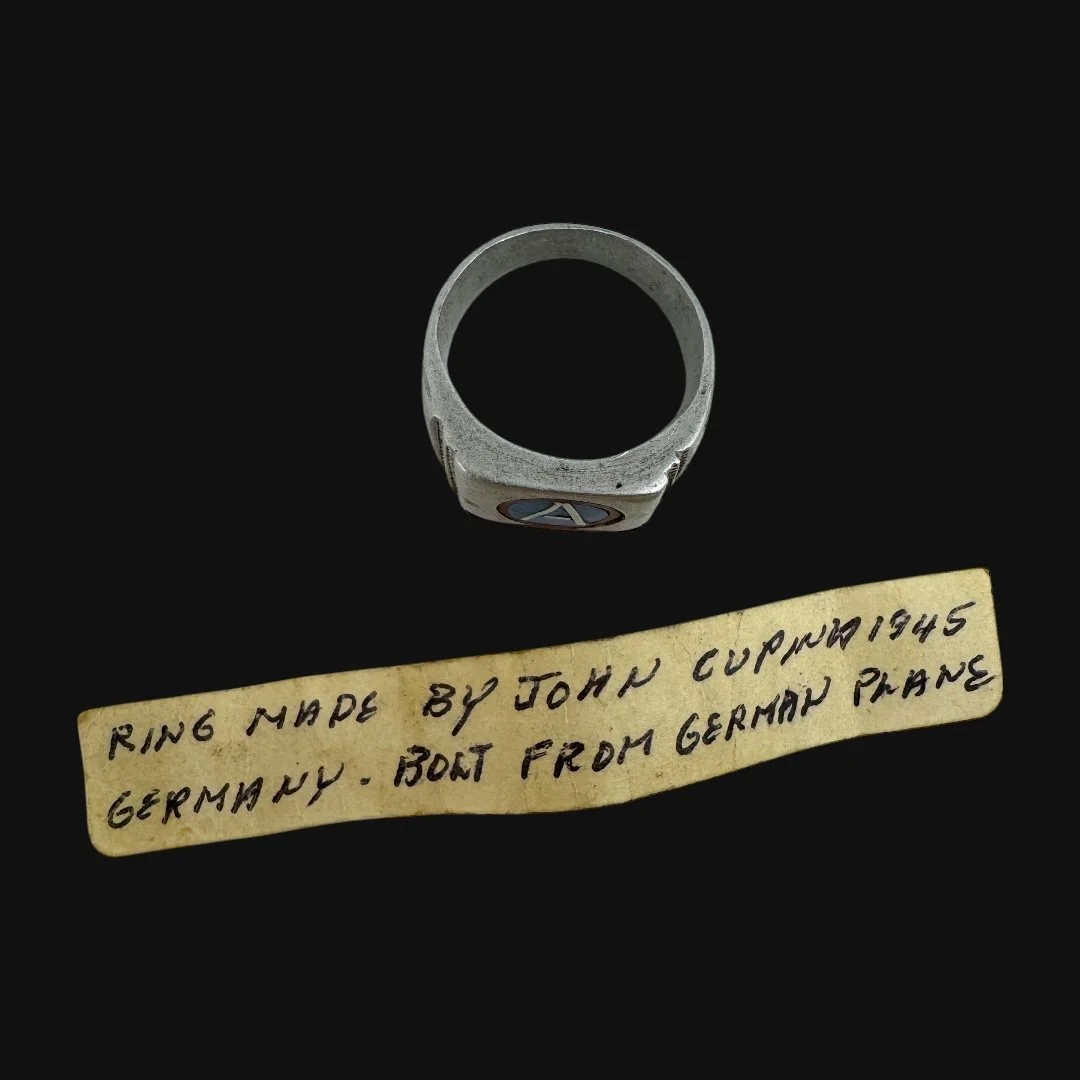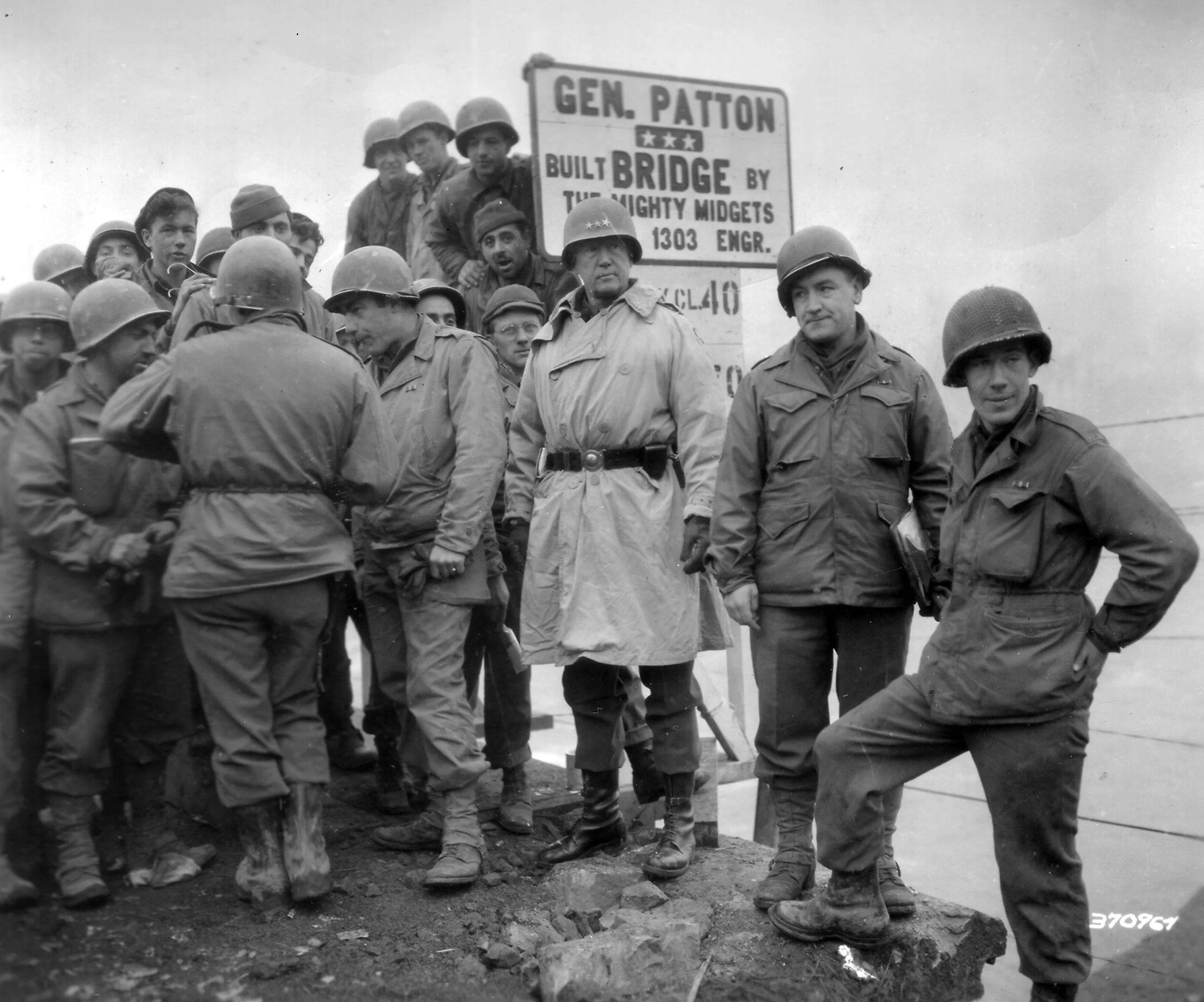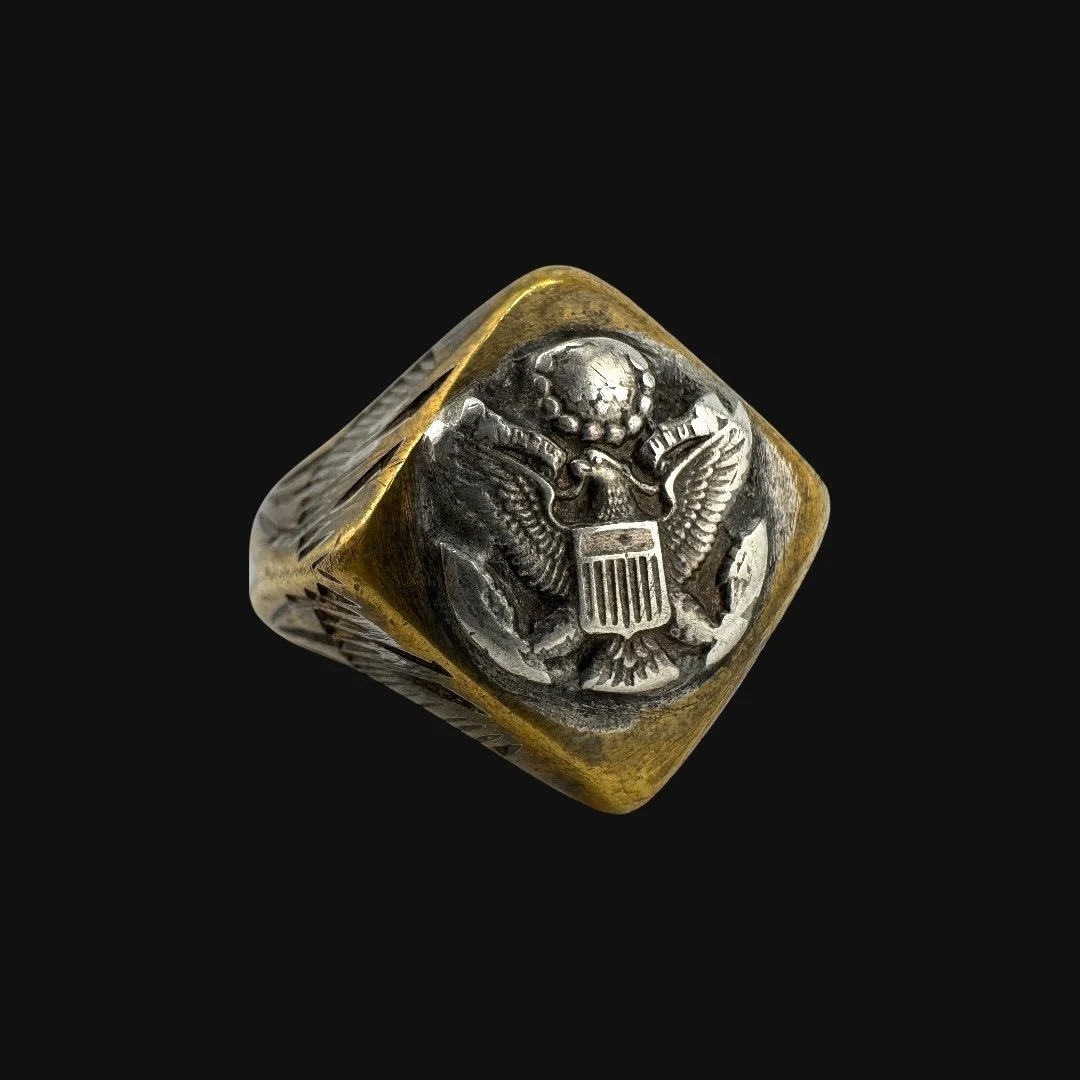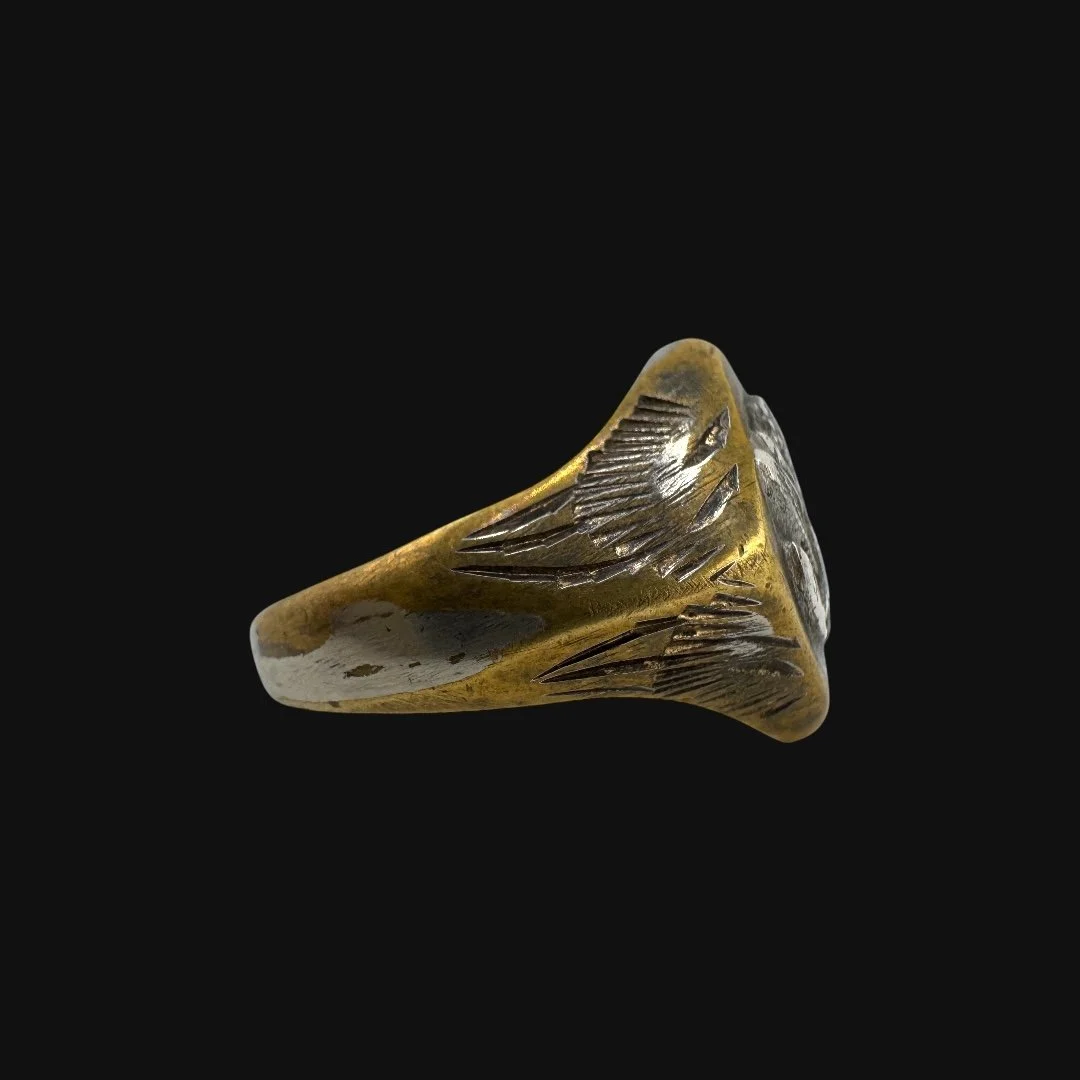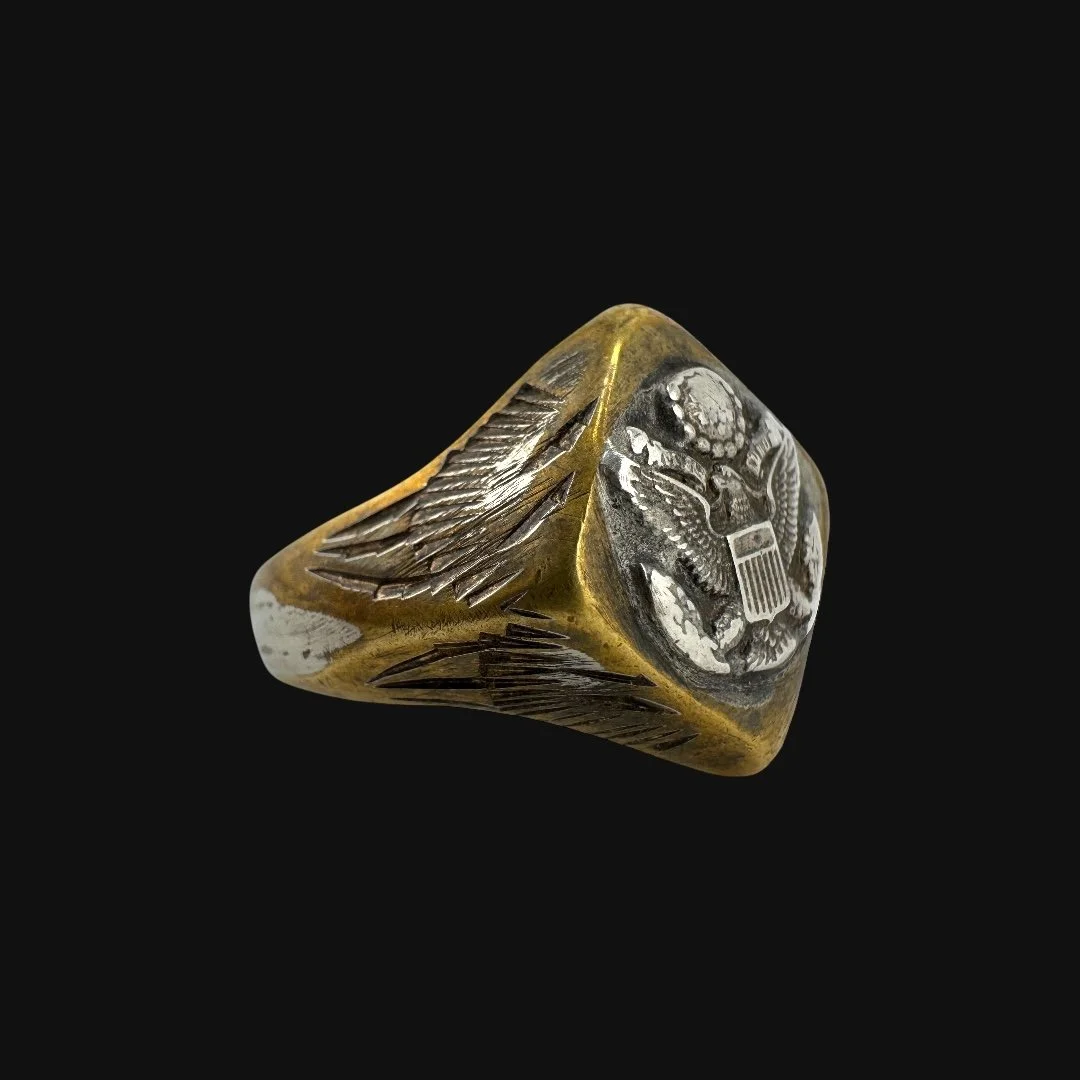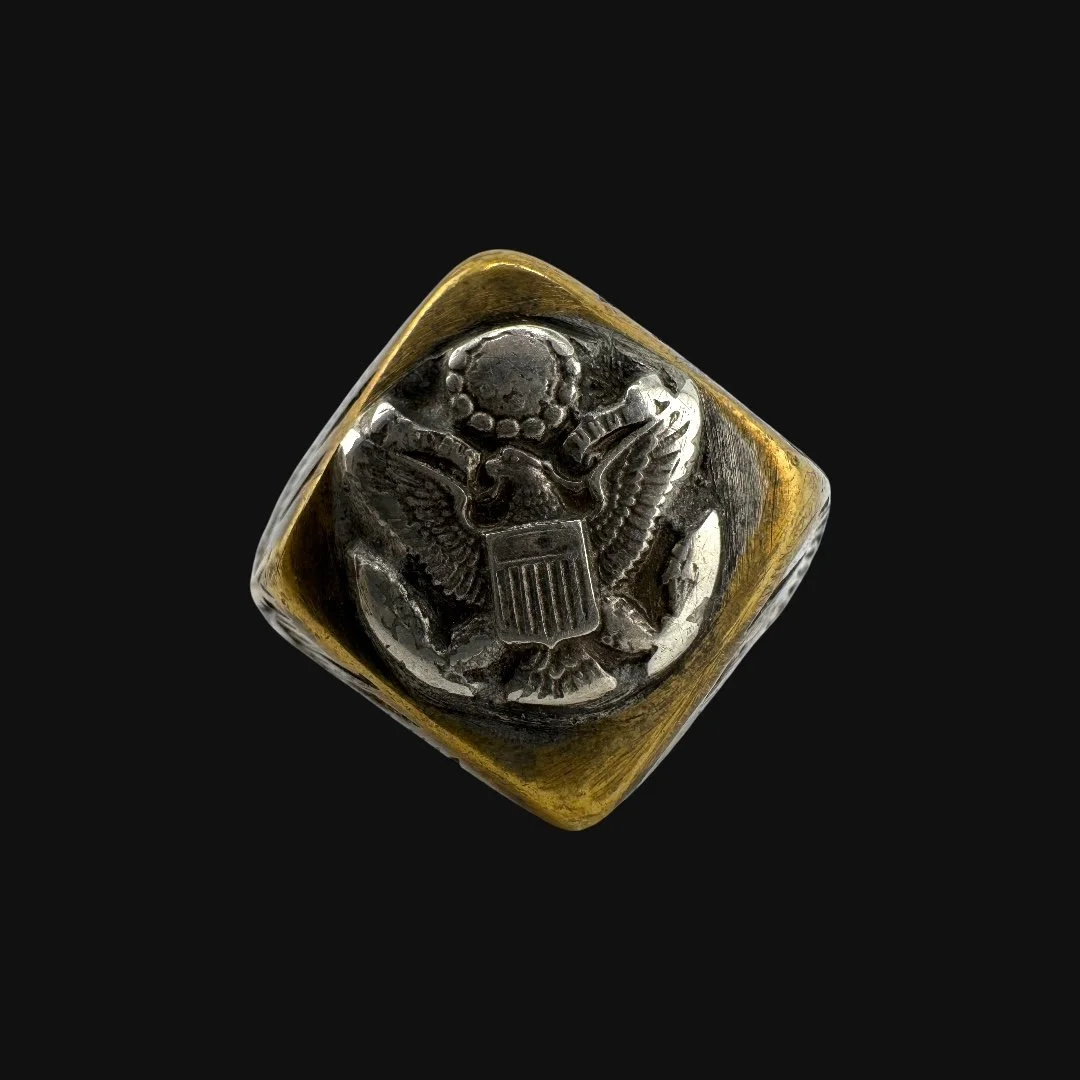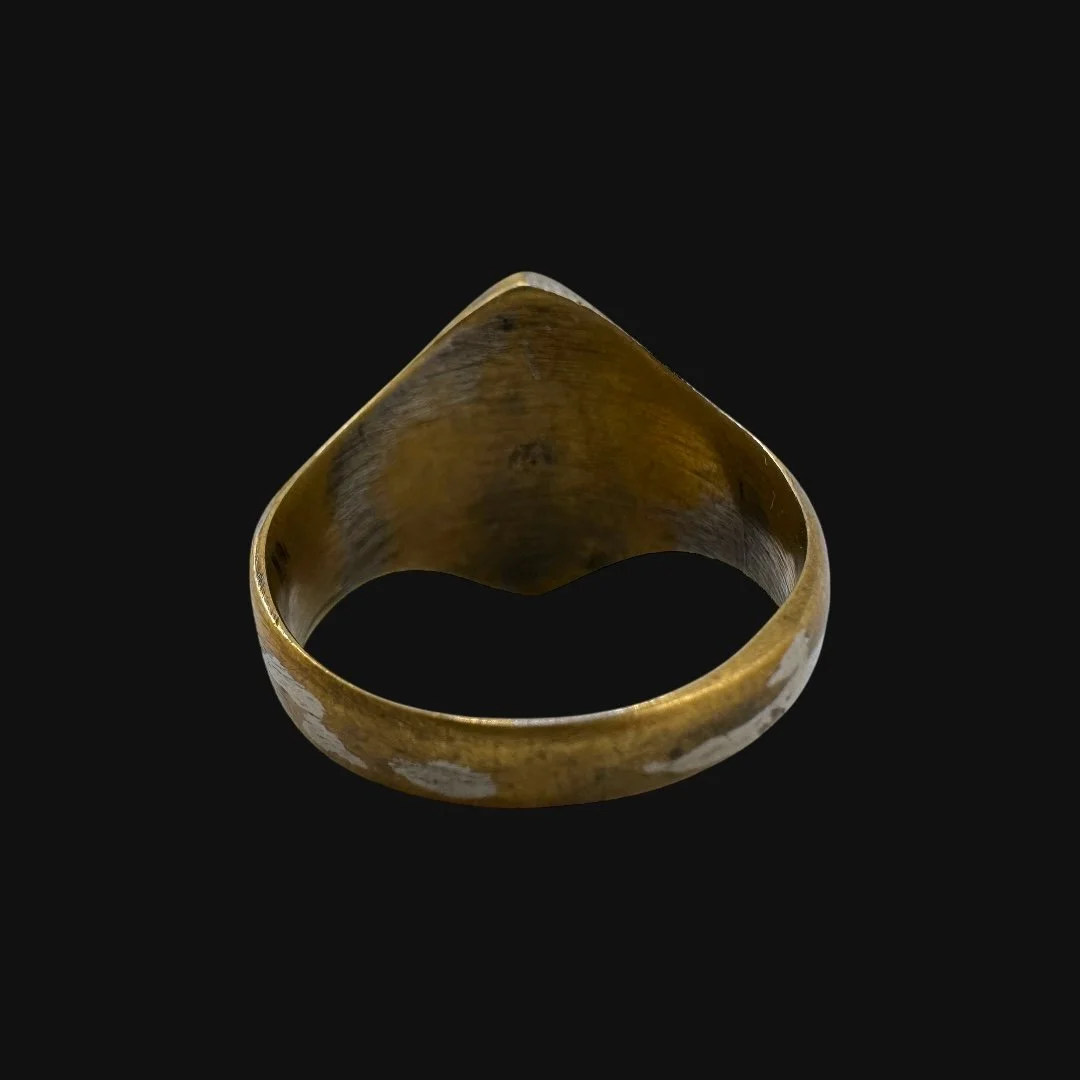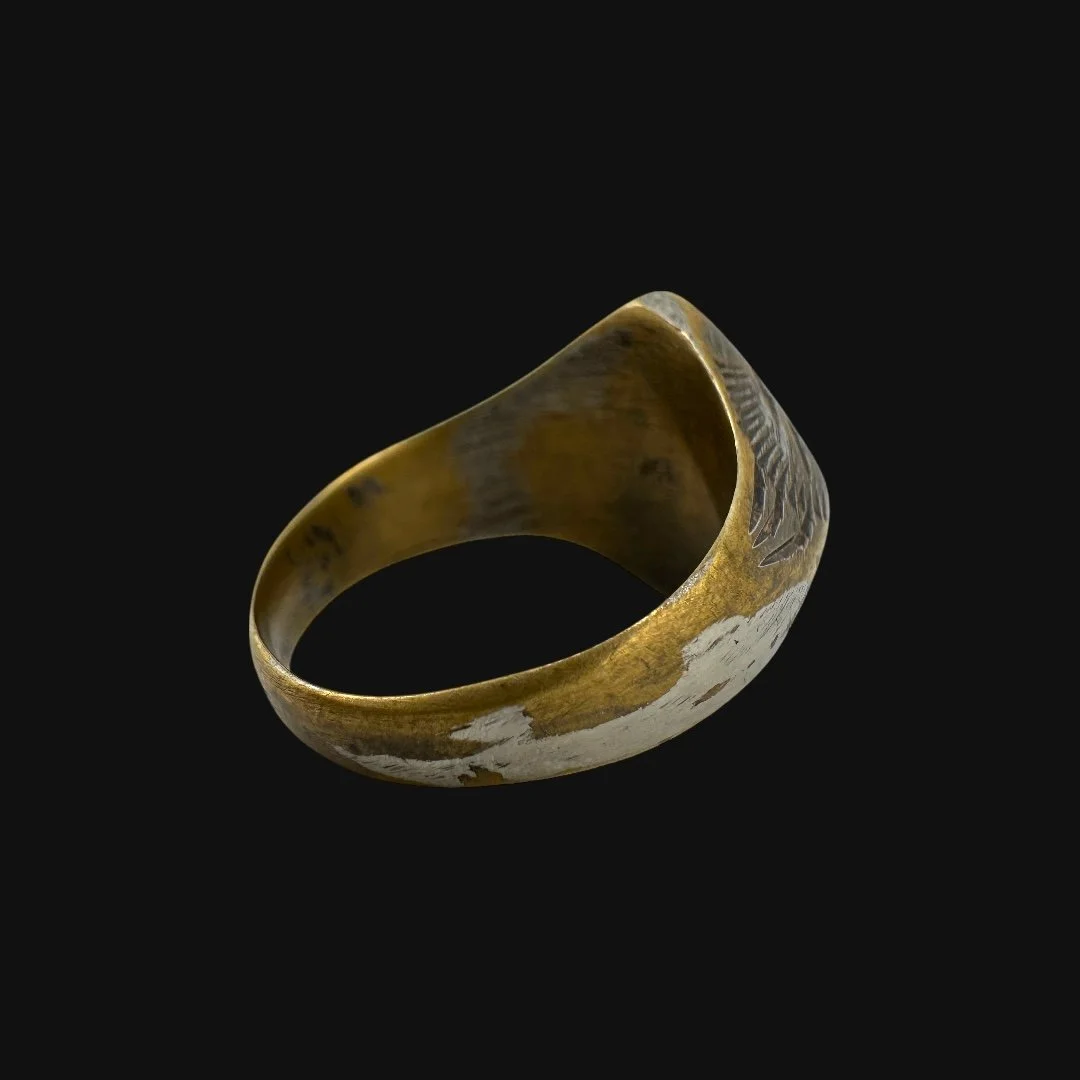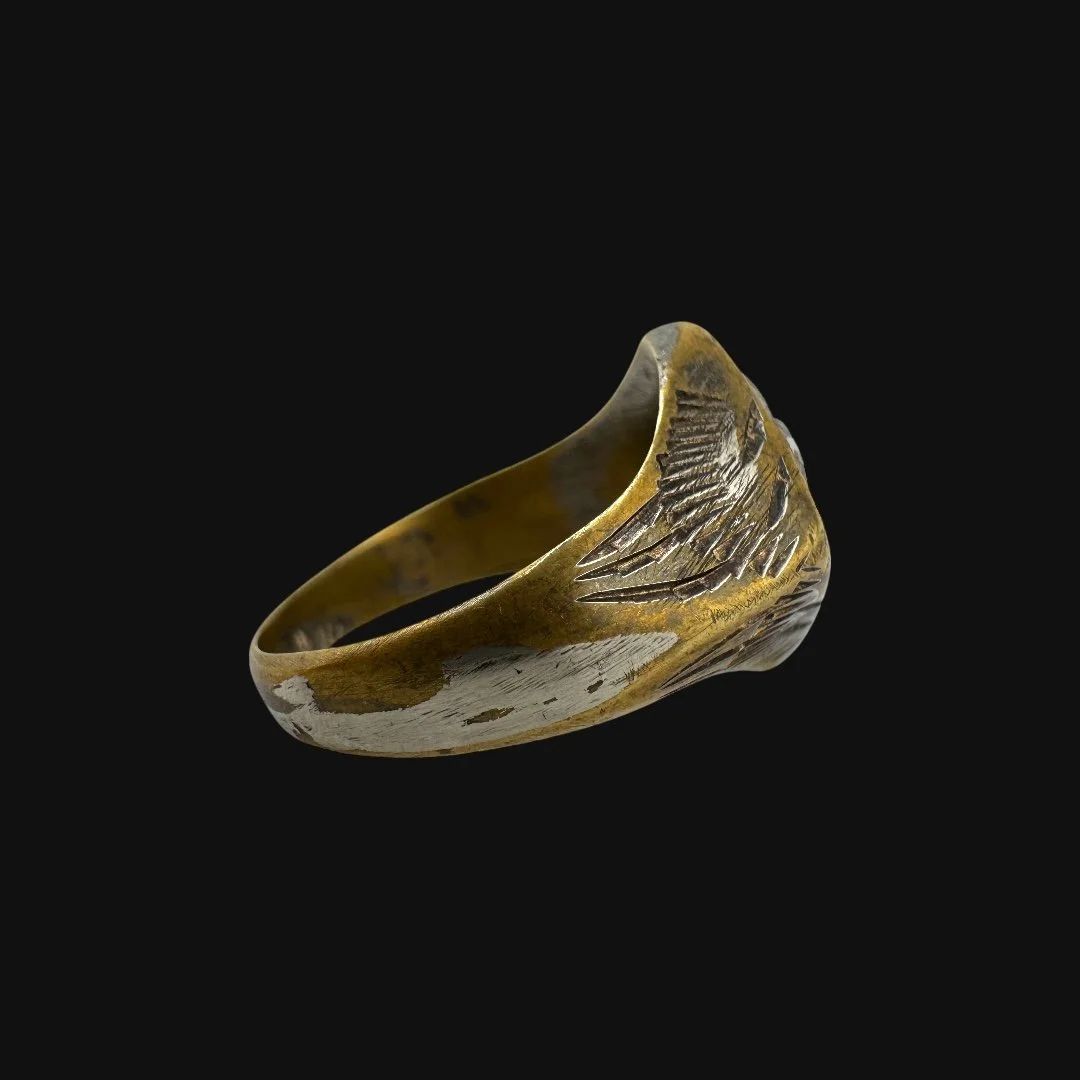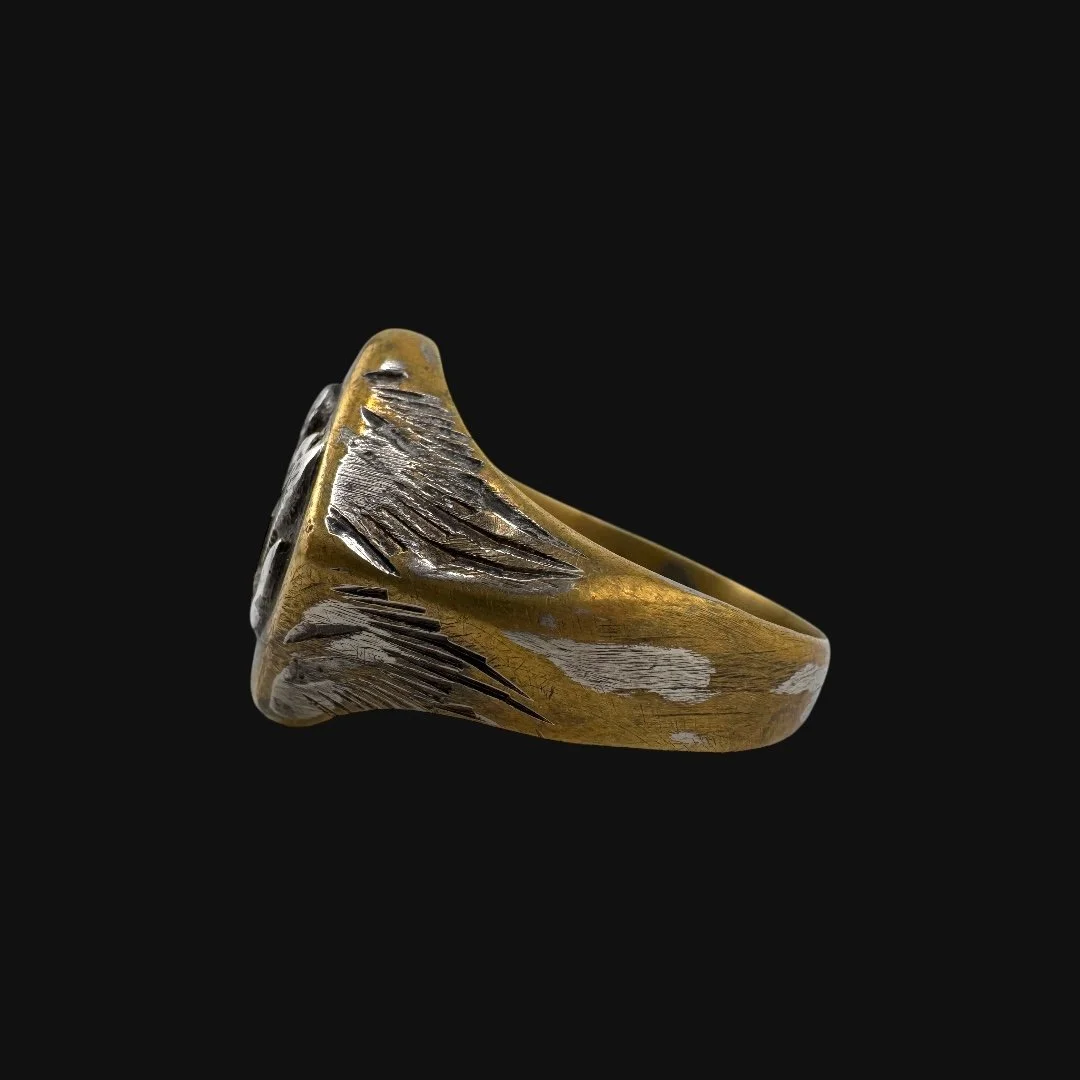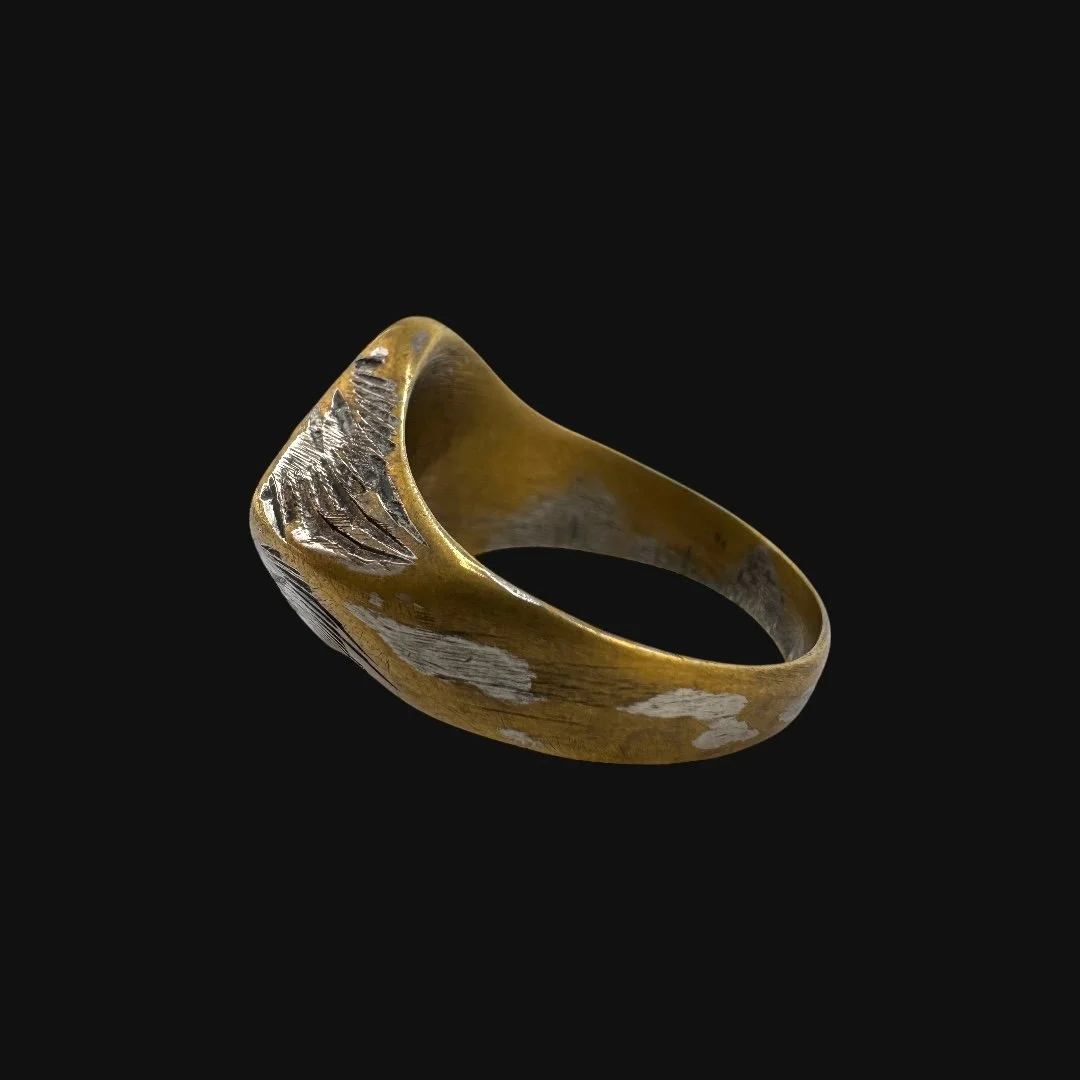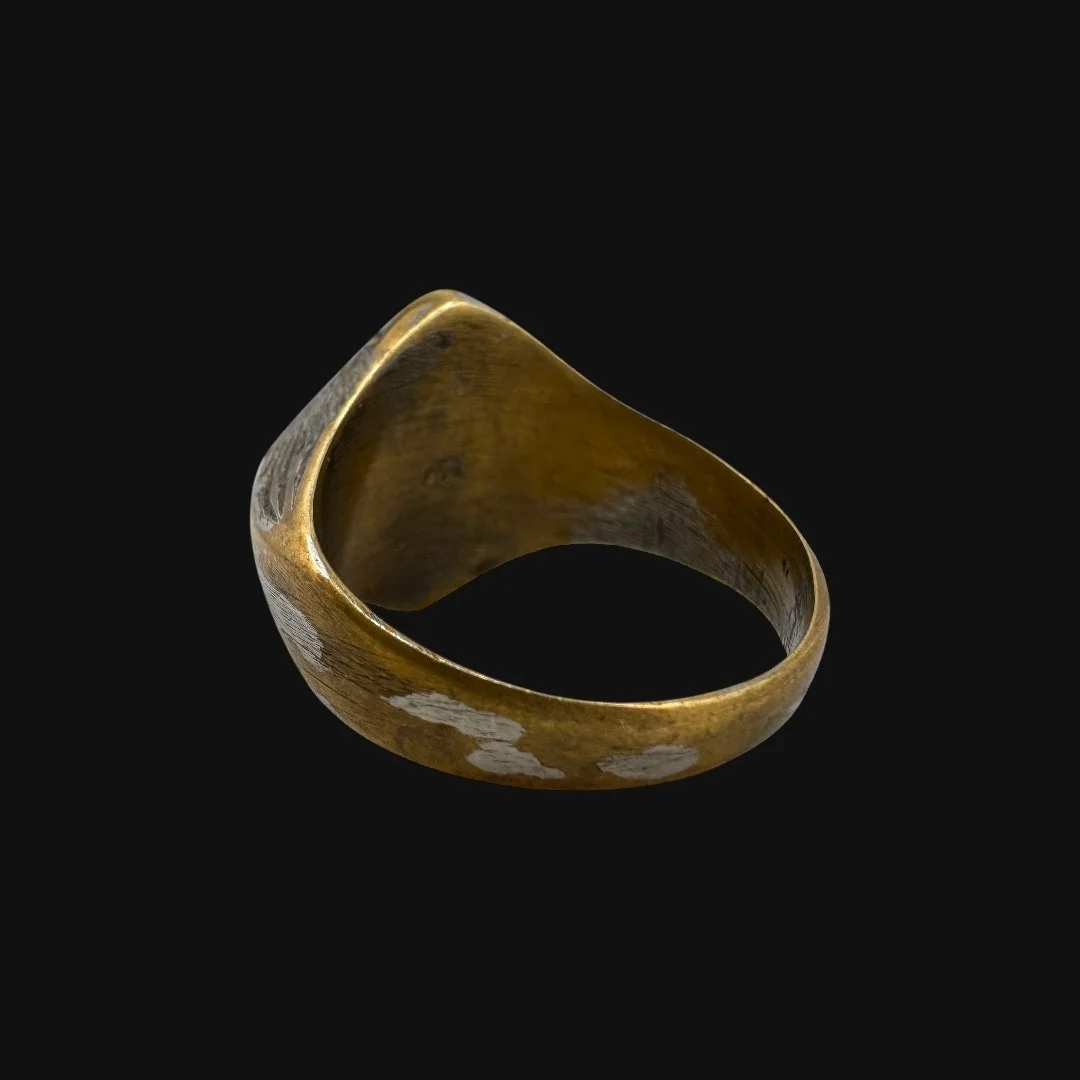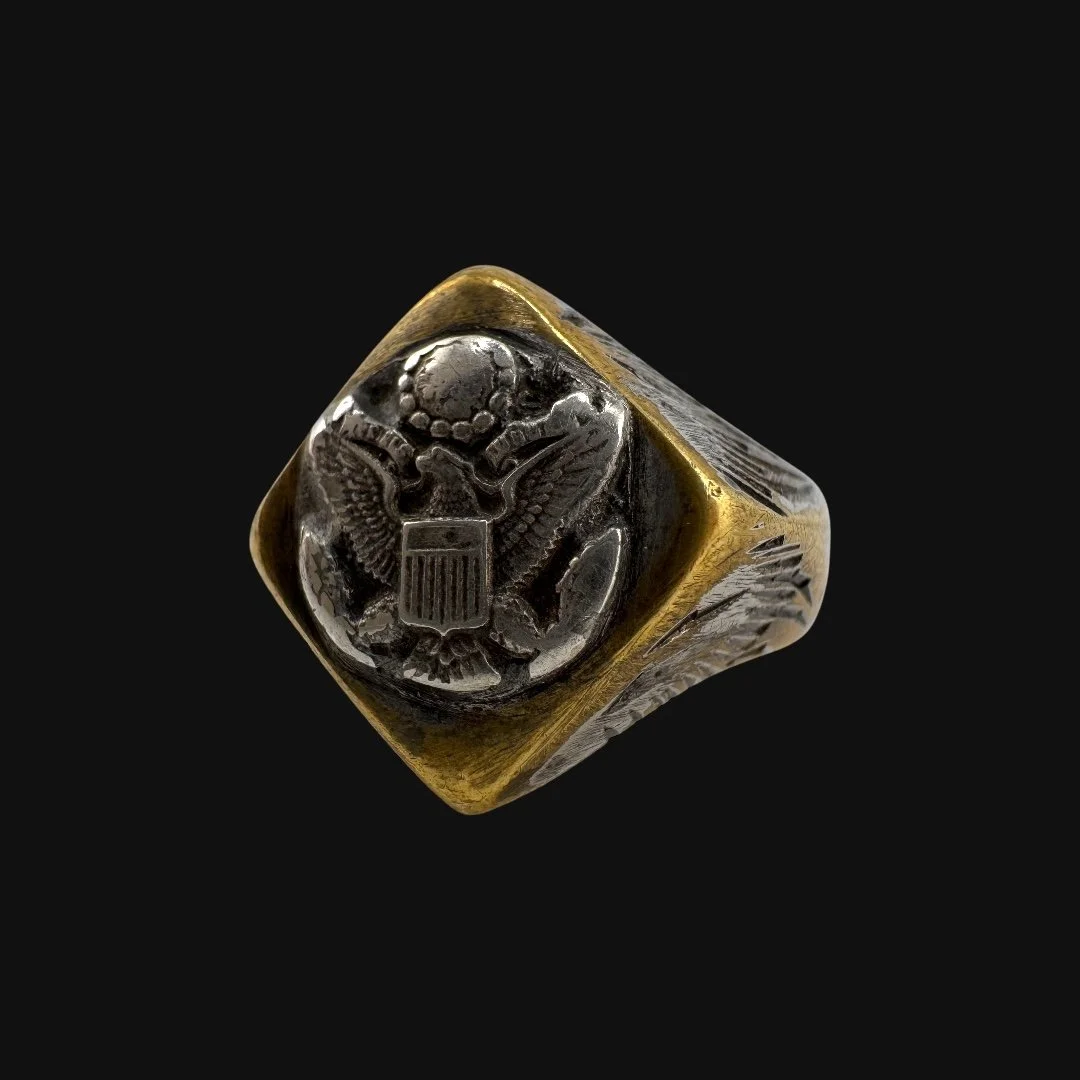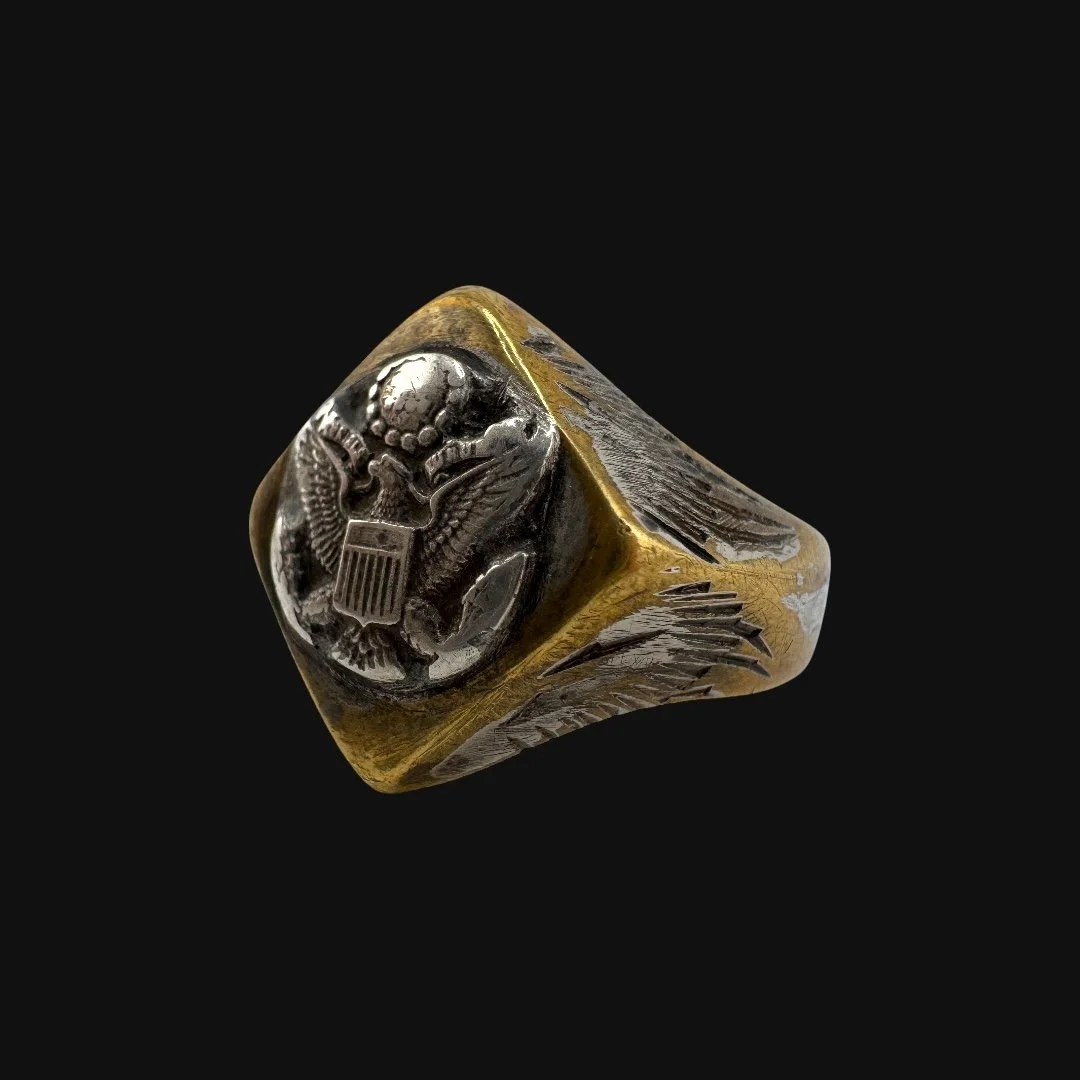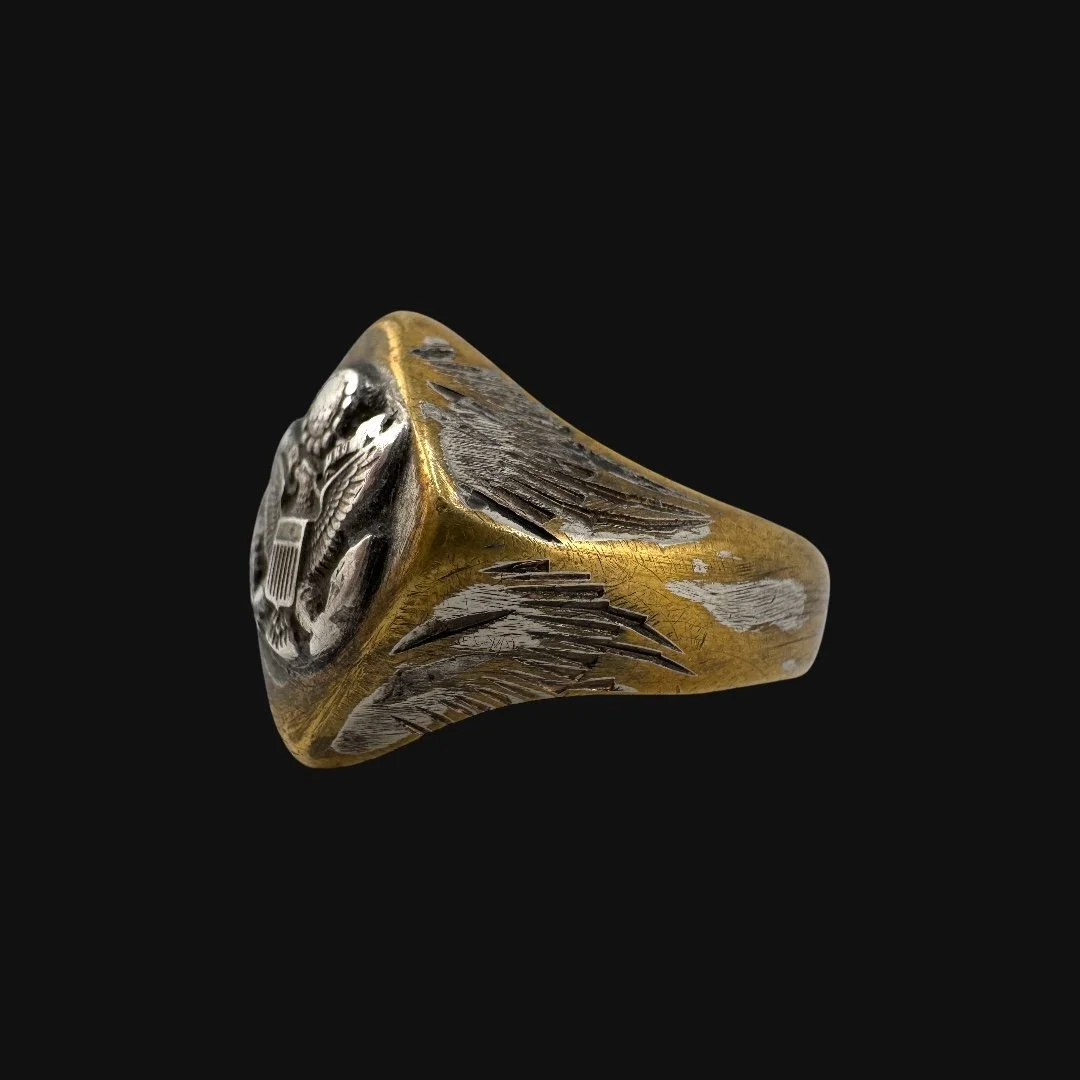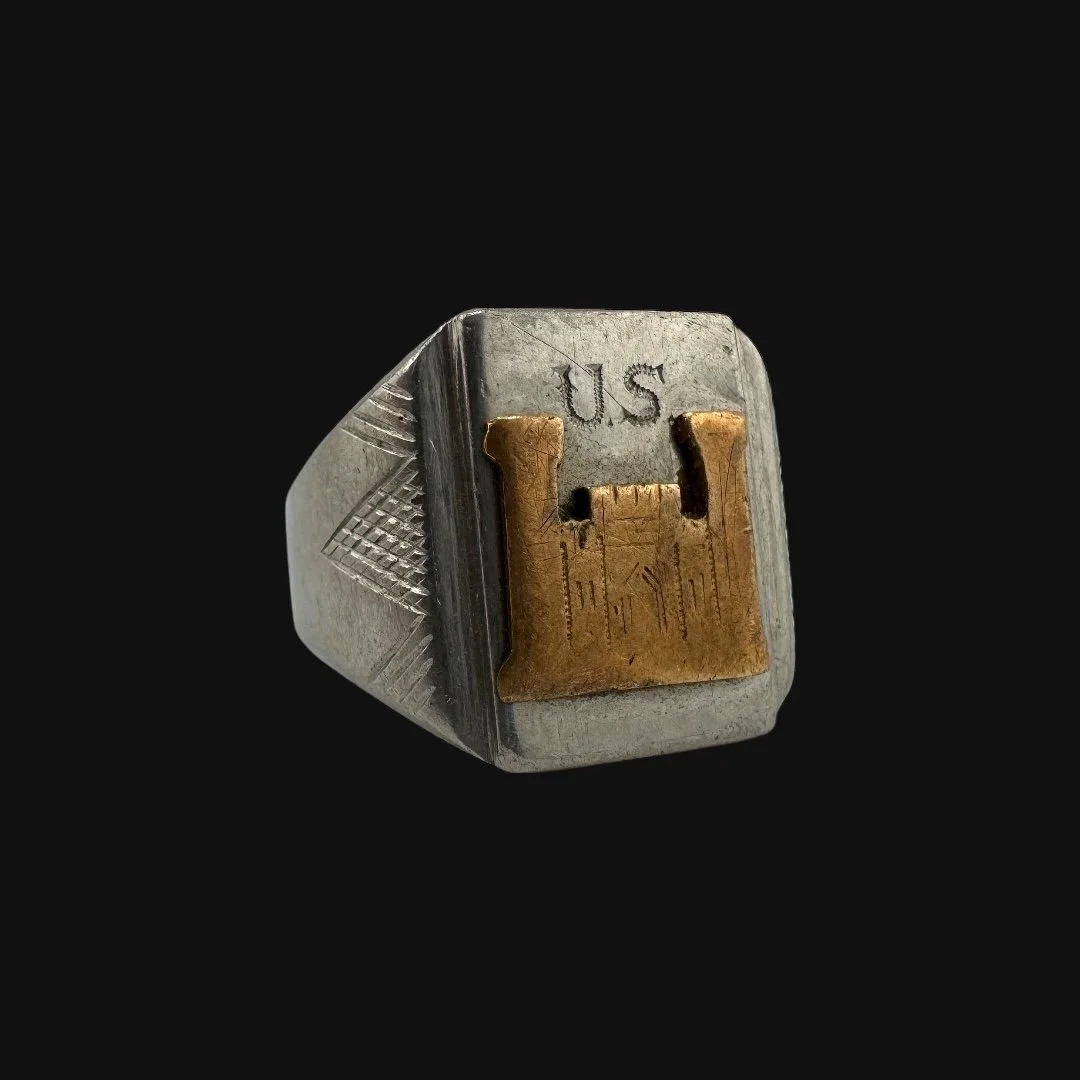 Image 1 of 16
Image 1 of 16

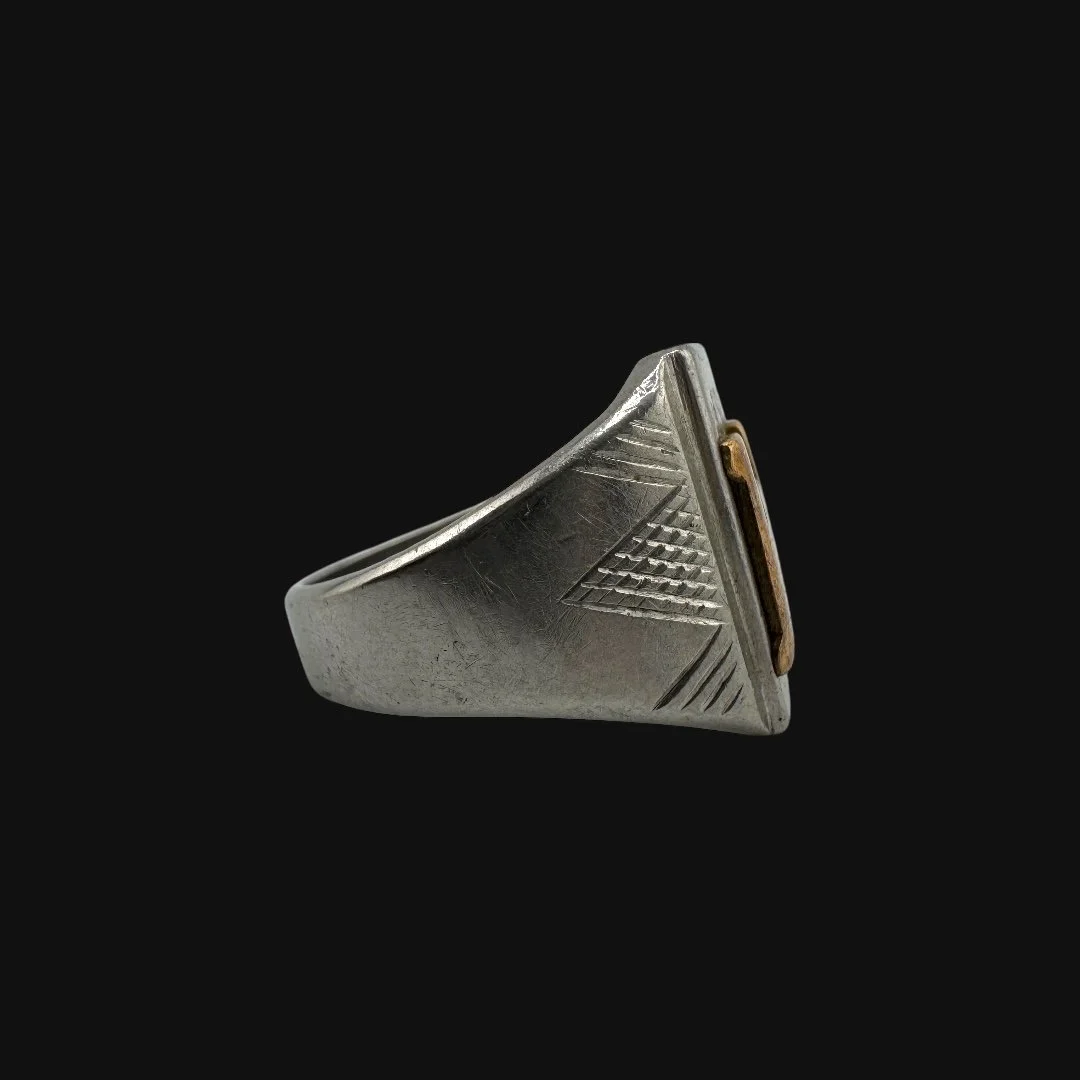 Image 2 of 16
Image 2 of 16

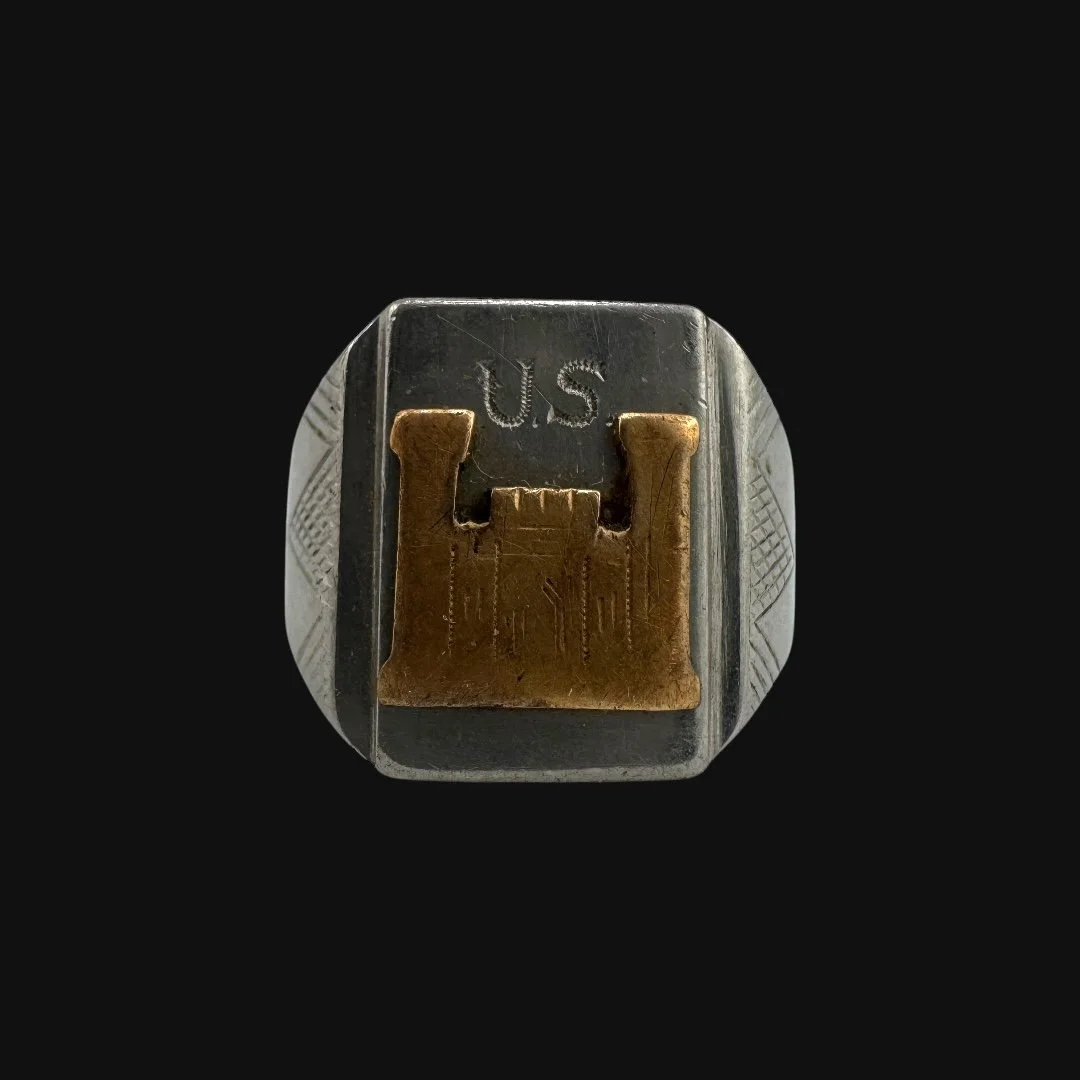 Image 3 of 16
Image 3 of 16

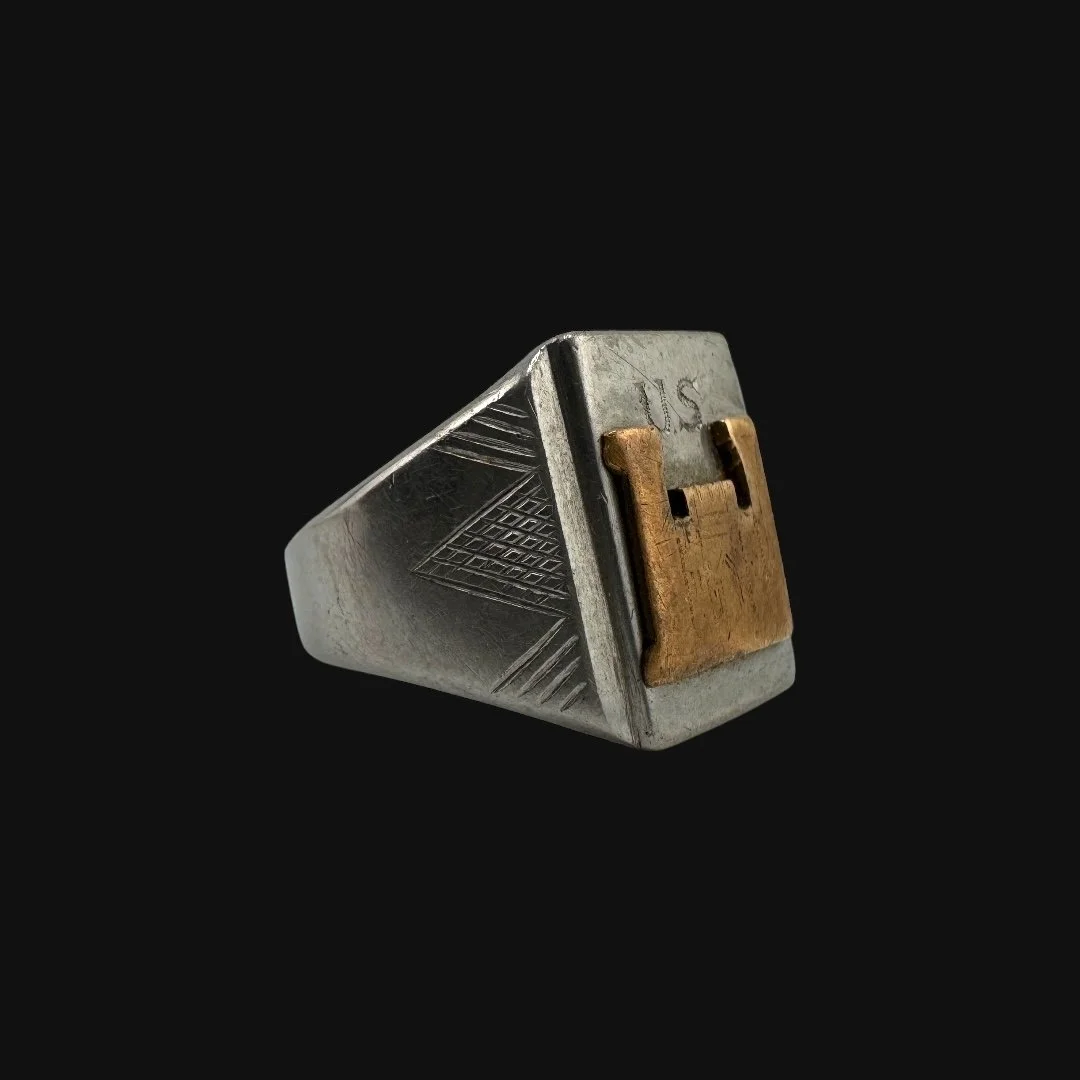 Image 4 of 16
Image 4 of 16

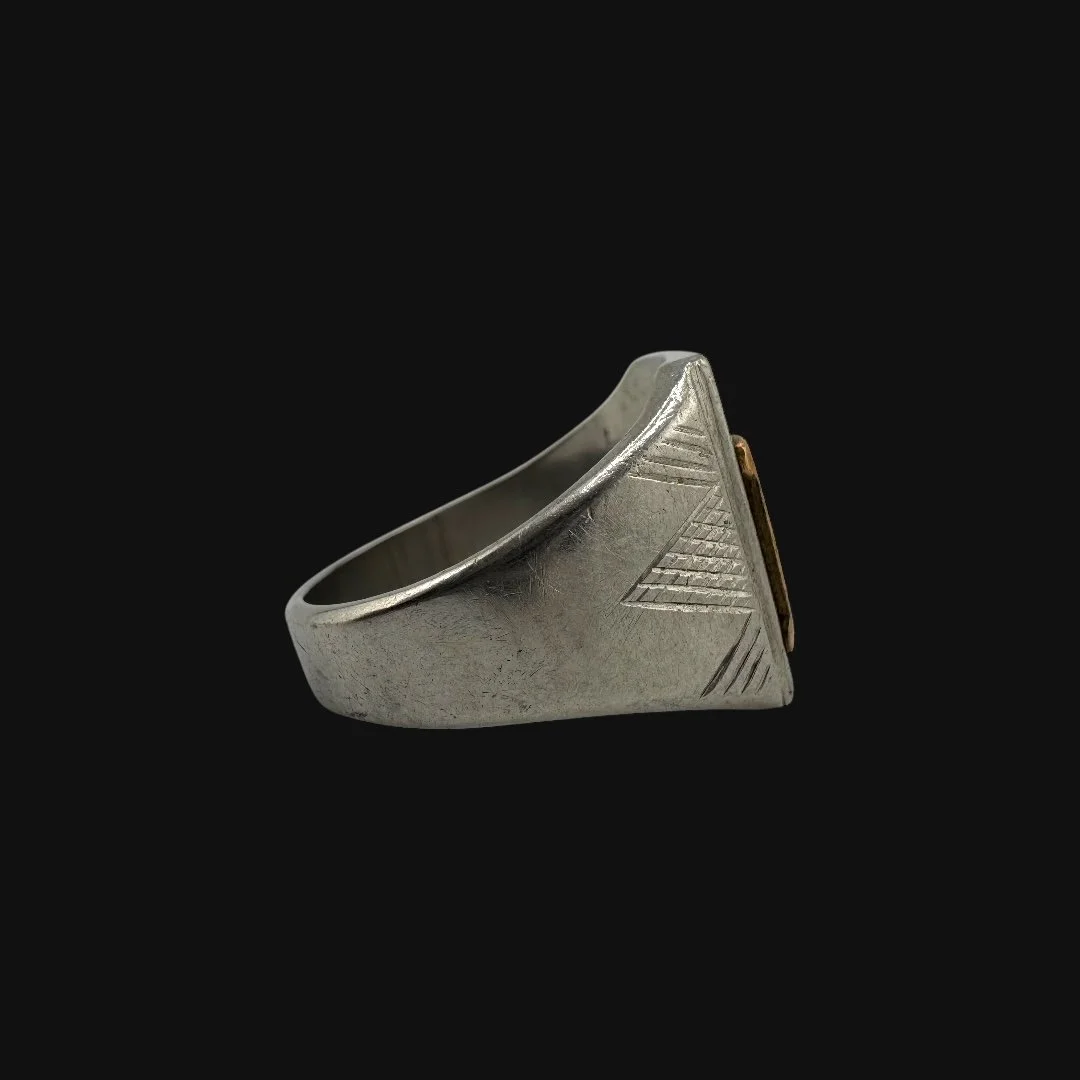 Image 5 of 16
Image 5 of 16

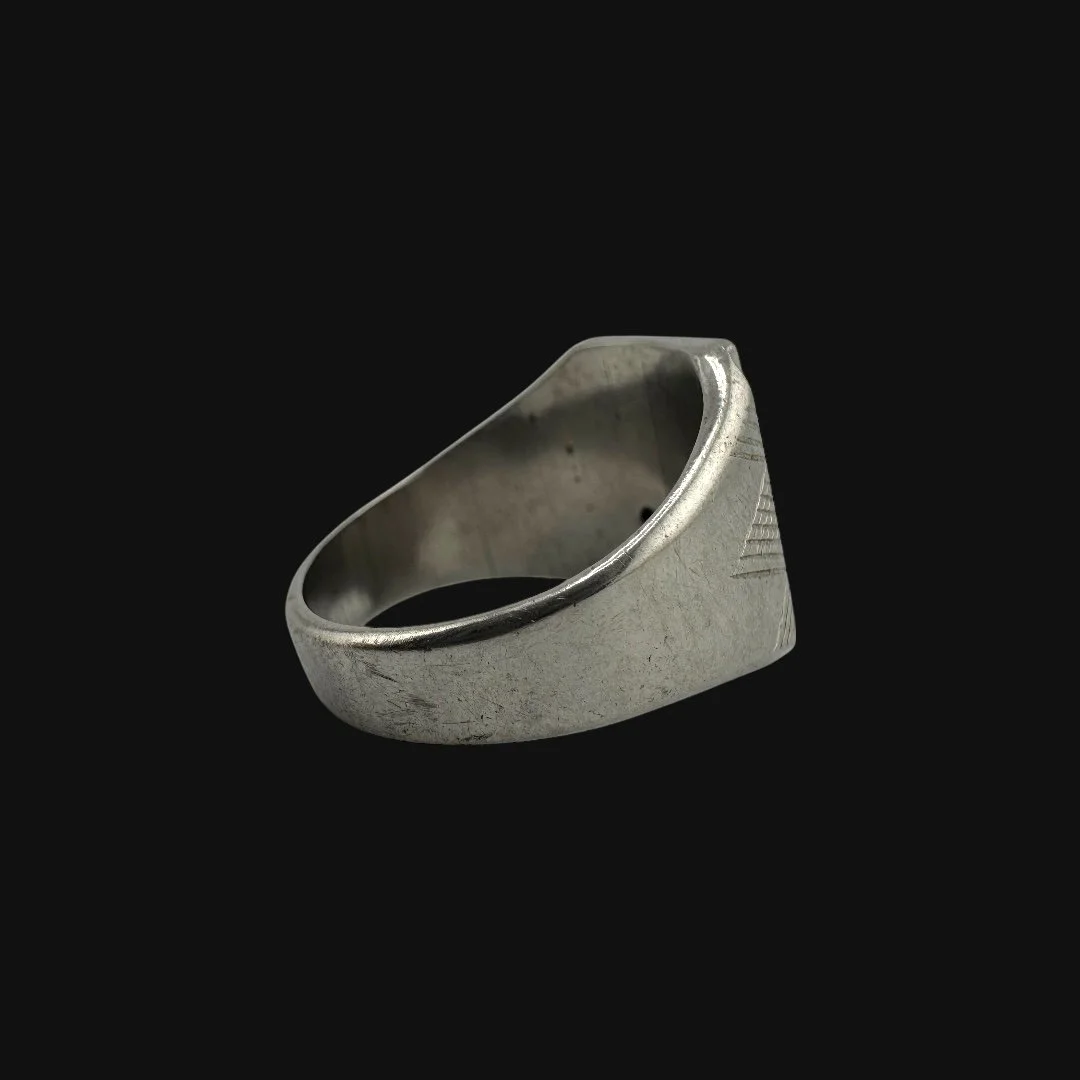 Image 6 of 16
Image 6 of 16

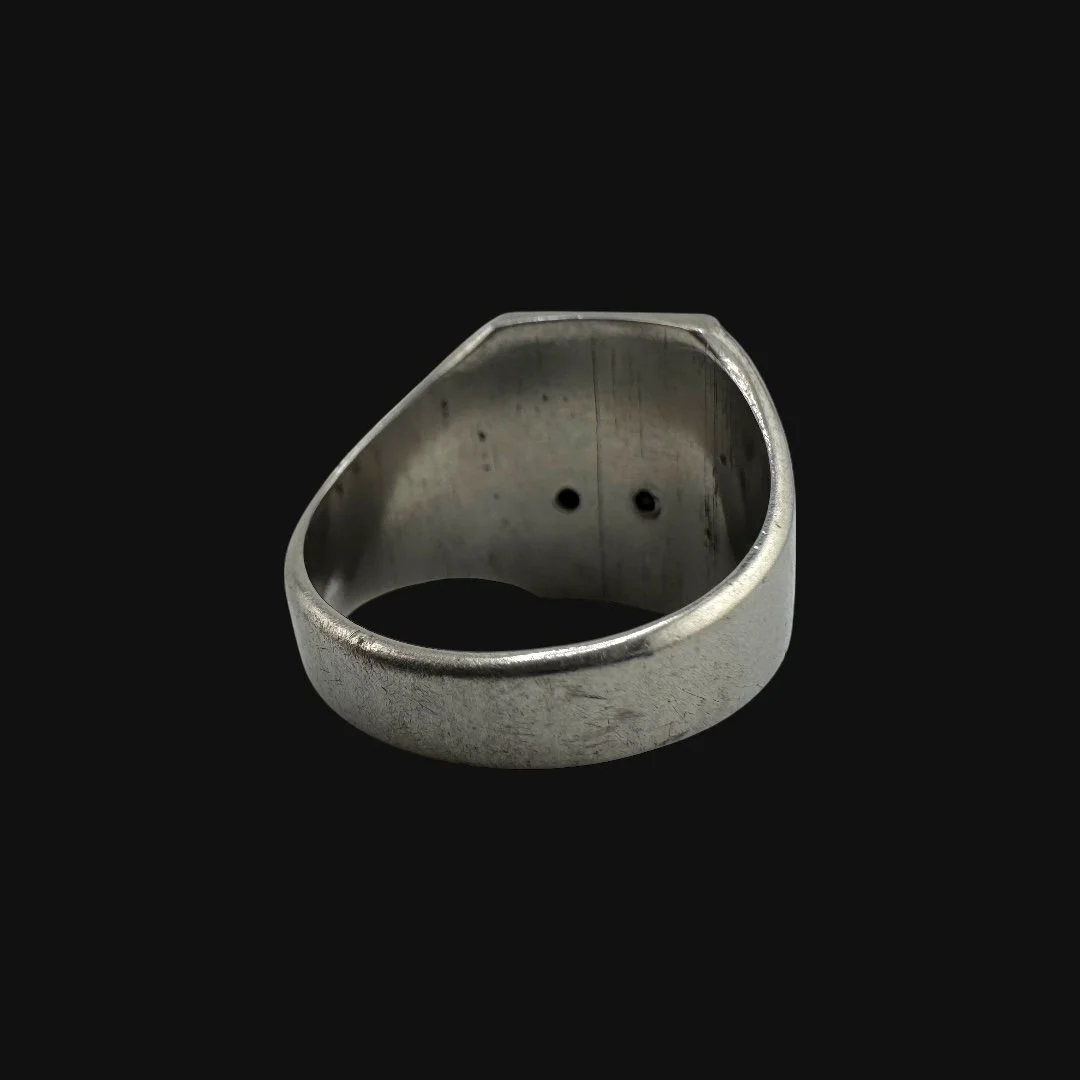 Image 7 of 16
Image 7 of 16

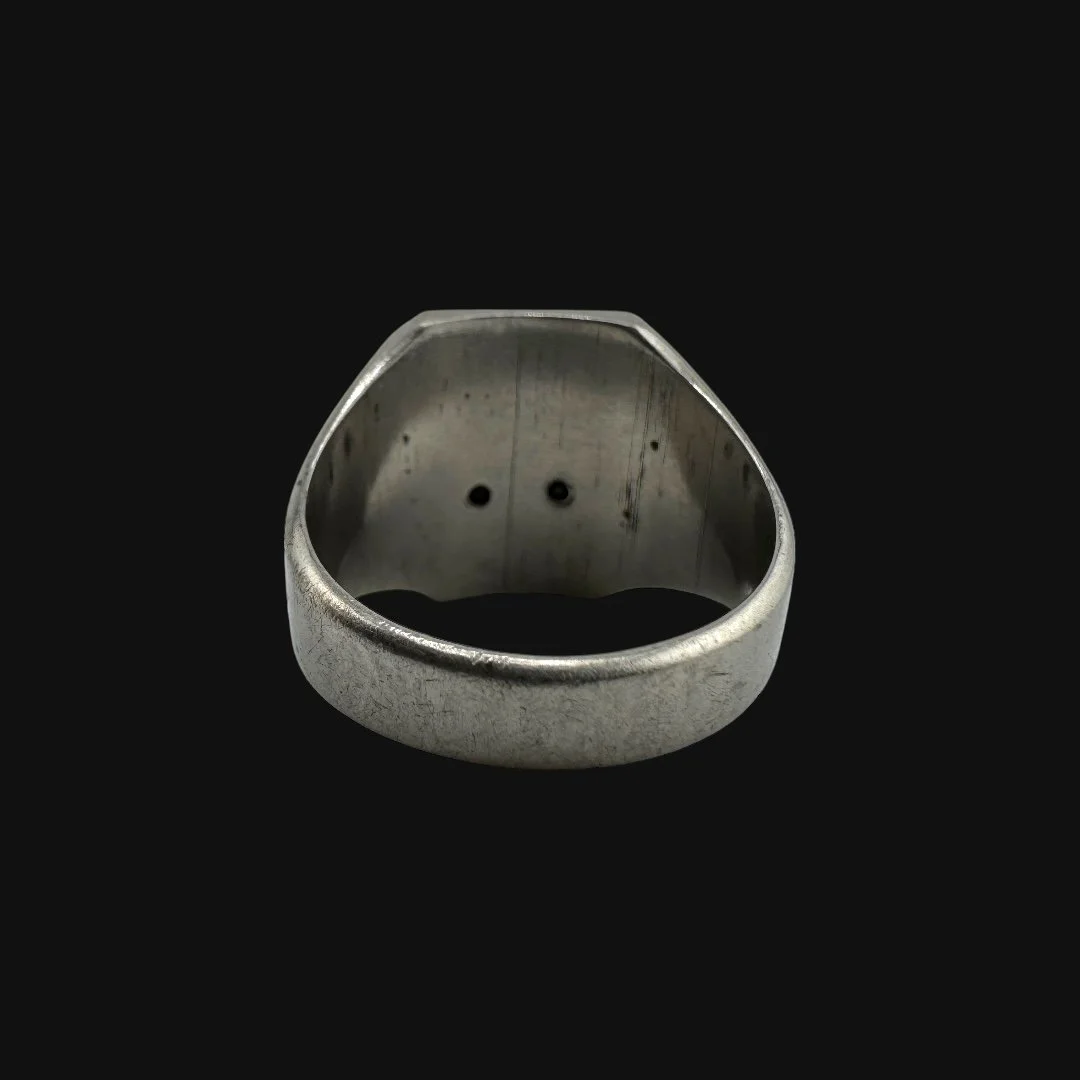 Image 8 of 16
Image 8 of 16

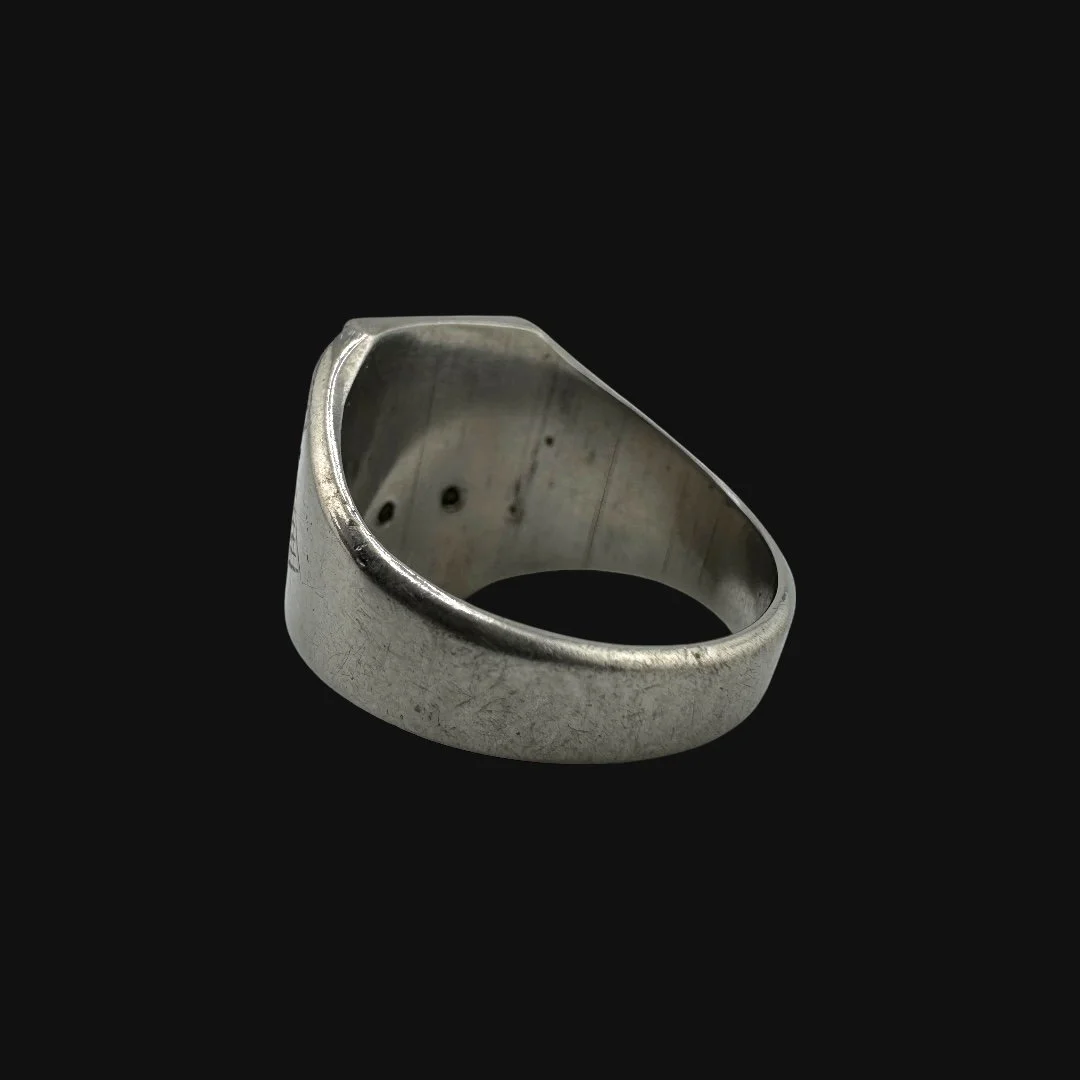 Image 9 of 16
Image 9 of 16

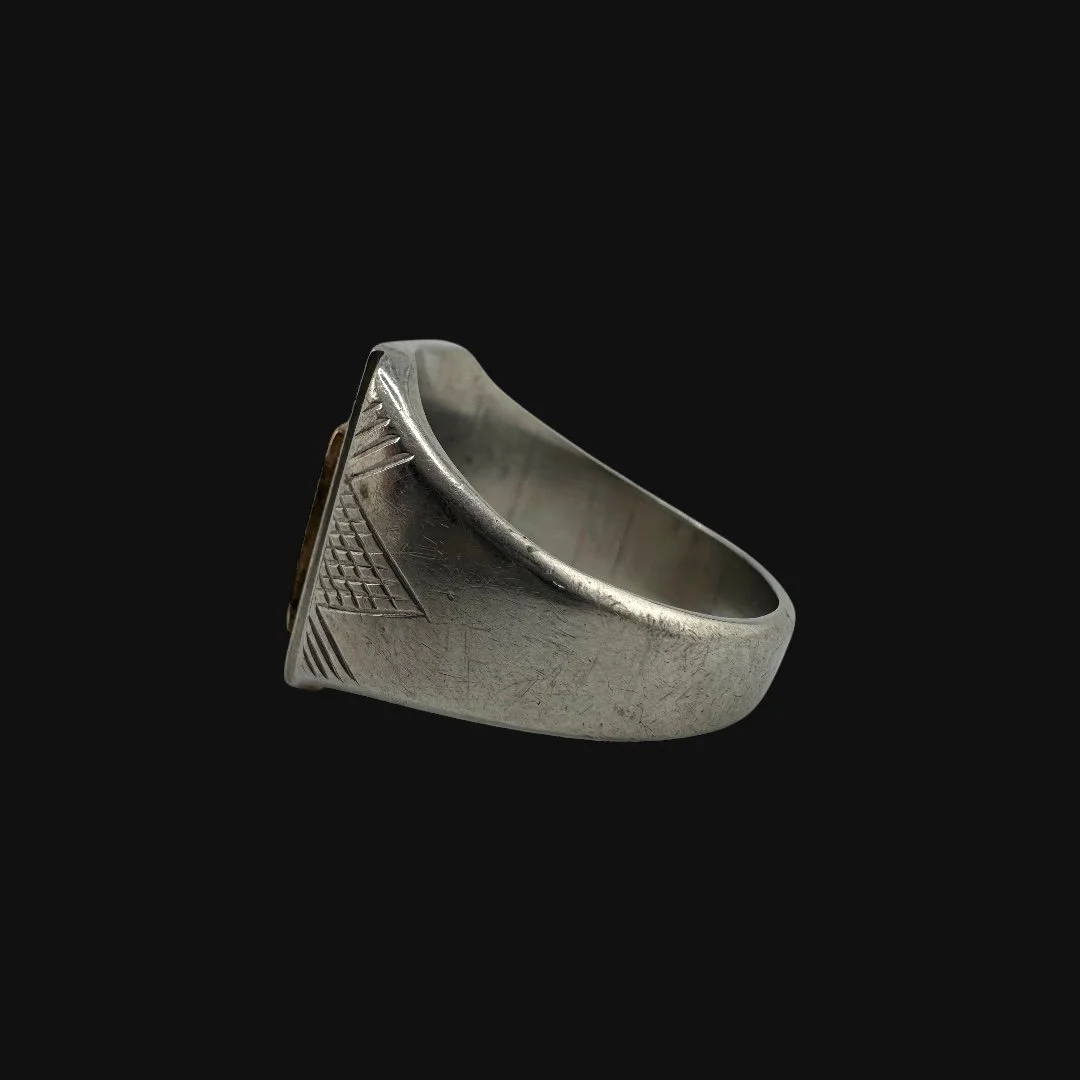 Image 10 of 16
Image 10 of 16

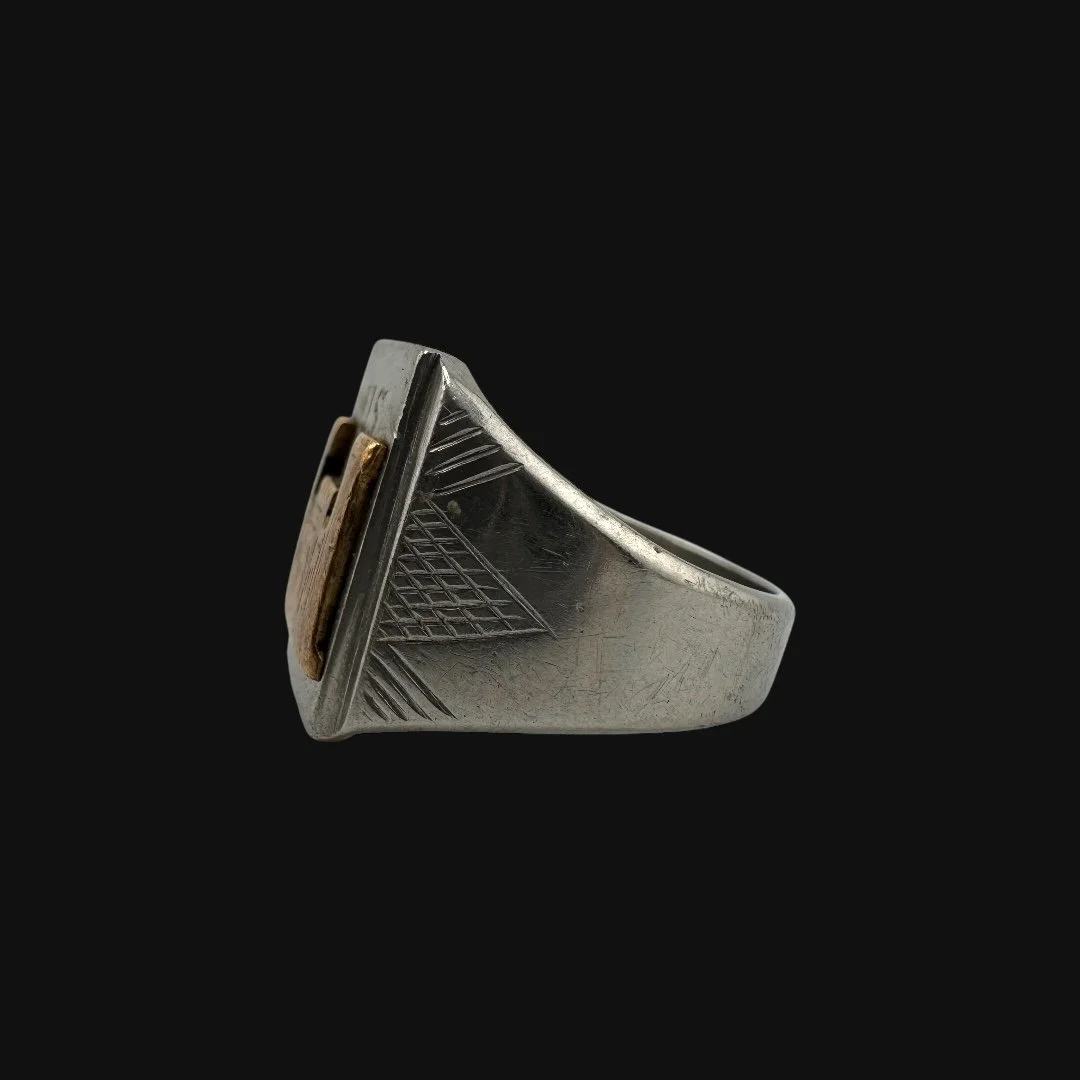 Image 11 of 16
Image 11 of 16

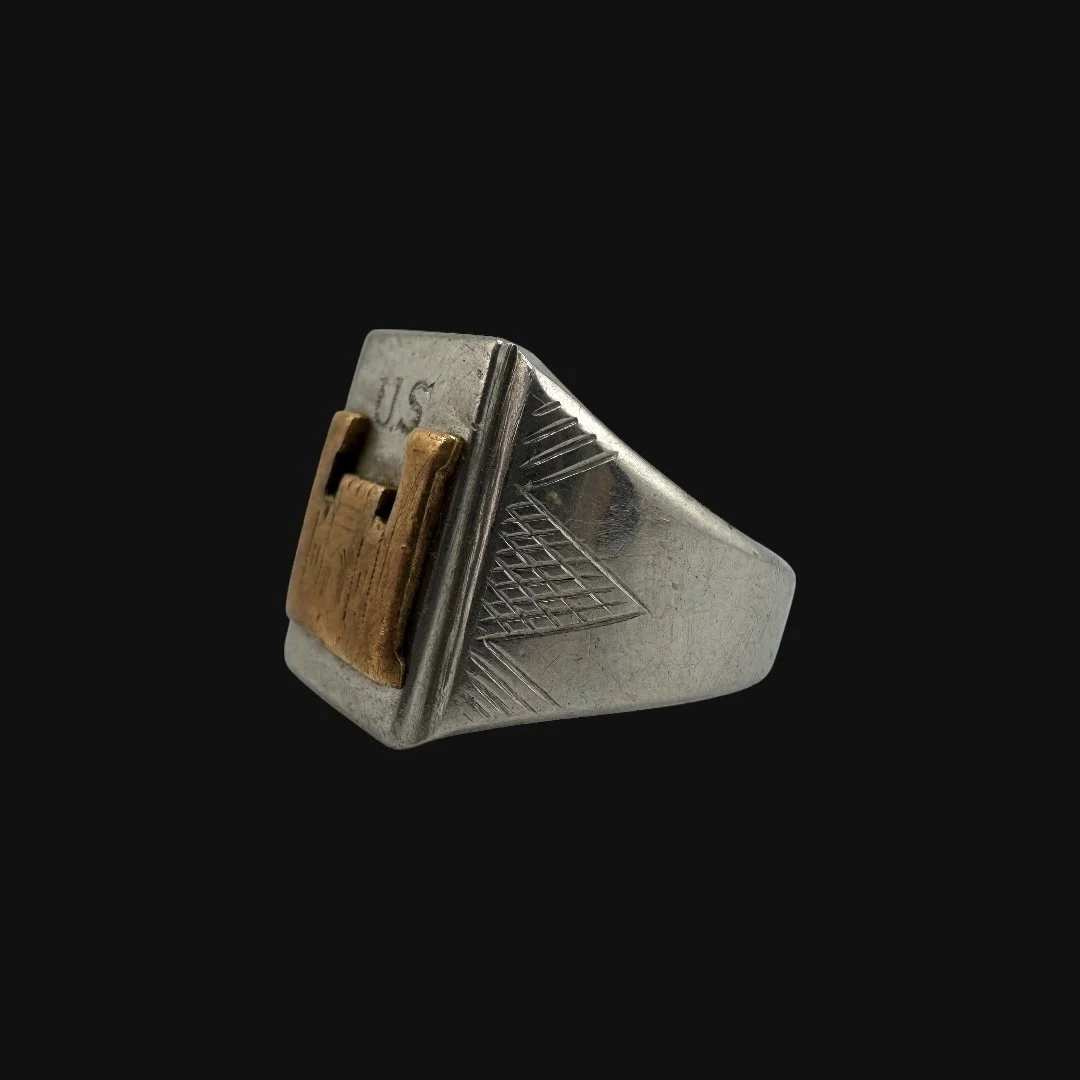 Image 12 of 16
Image 12 of 16

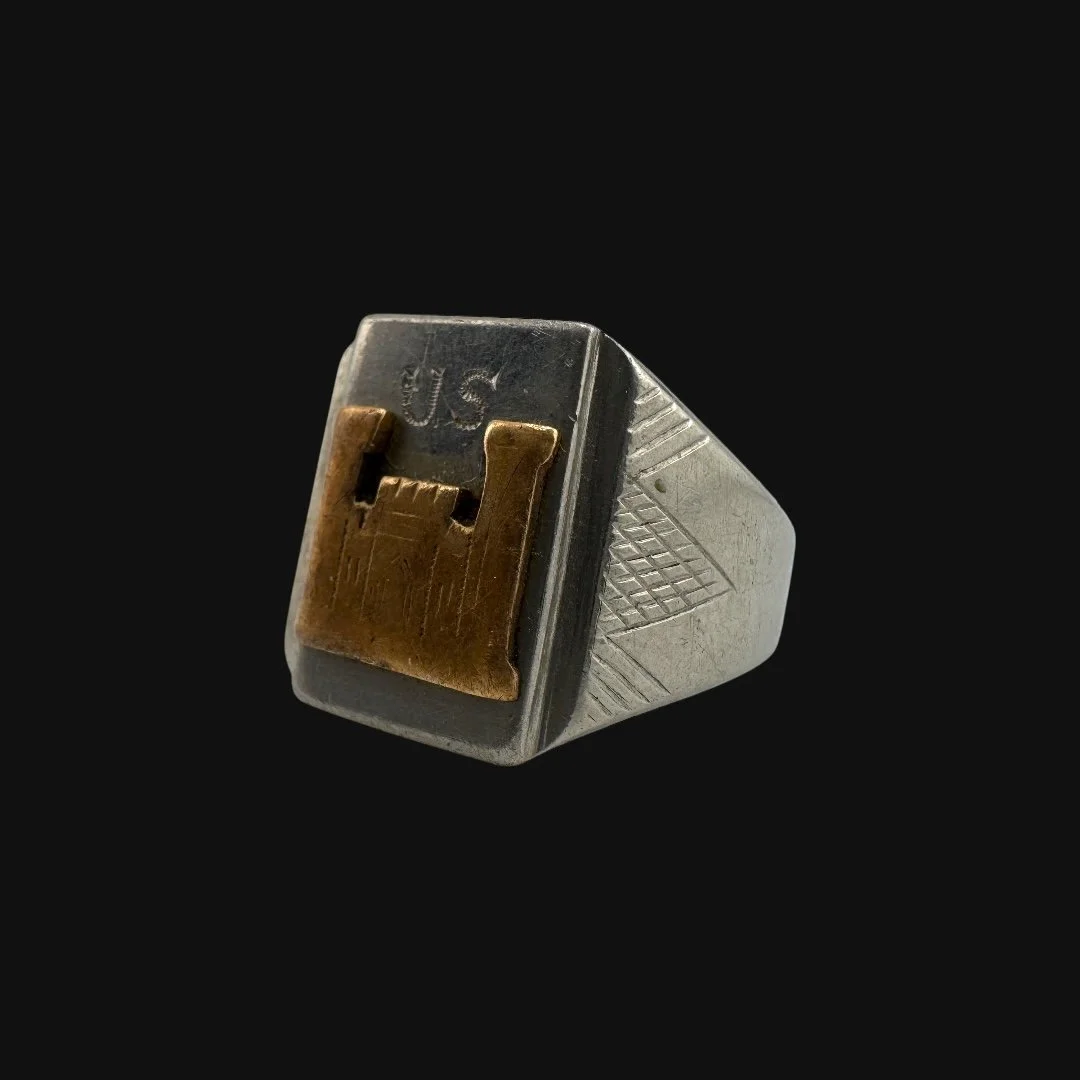 Image 13 of 16
Image 13 of 16

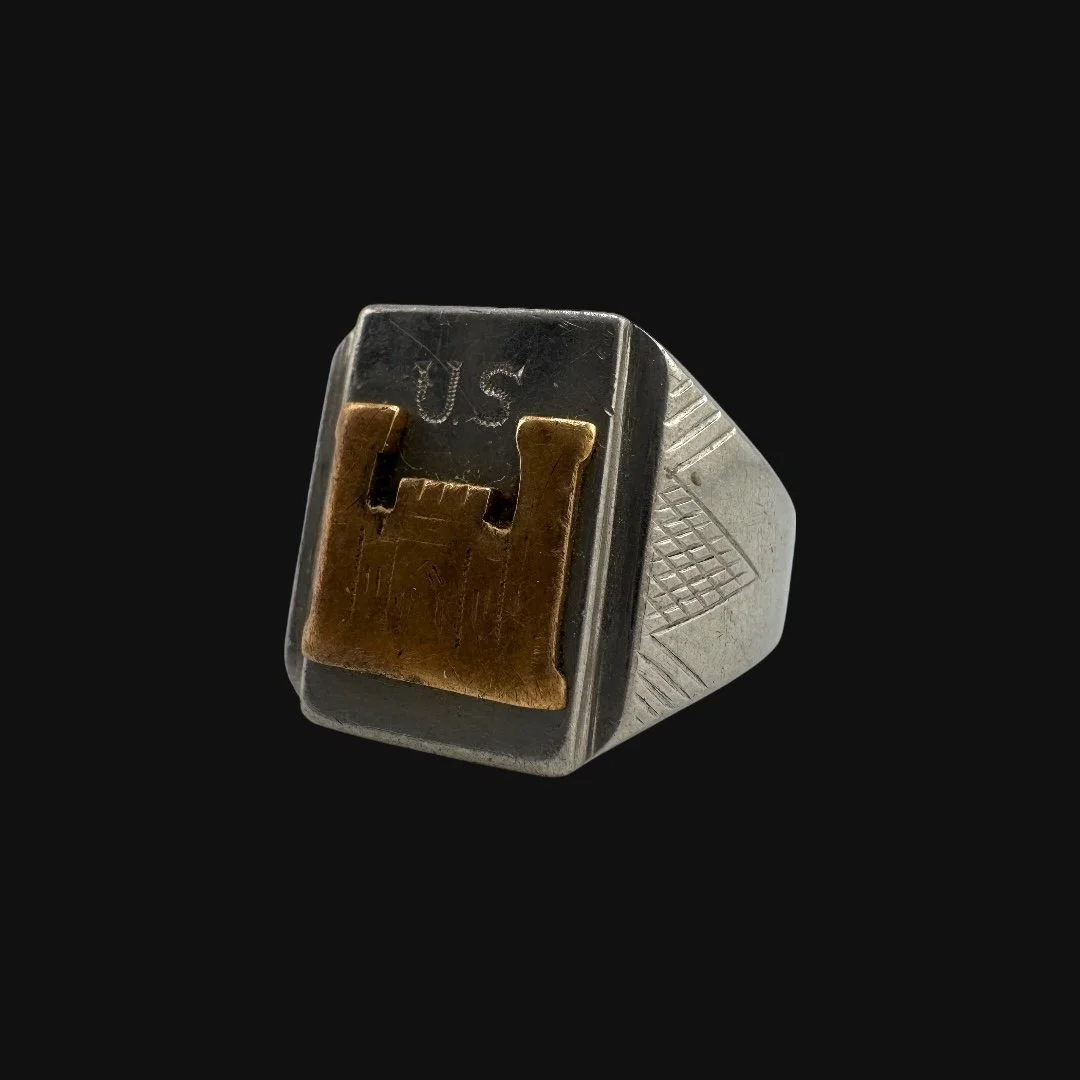 Image 14 of 16
Image 14 of 16

 Image 15 of 16
Image 15 of 16

 Image 16 of 16
Image 16 of 16

















Original WWII 1942-1945 U.S. Army “Corps of Engineers” Theater-Made Combat Military Ring - Battlefield Materials (Size 8.5)
Comes with a hand-signed C.O.A. and a full historical research write-up
From: World War II
Branch: U.S. Army (Corps of Engineers)
Dated: 1942-1945
Ring Size: 8.5 (US)
Material: Fired/Discarded Battlefield Materials
Wearable History Collection:
This authentic 1942-1945 WWII-era ring, preserved in its original and unaltered condition, combines exceptional craftsmanship with lasting durability, making it fully suitable for modern wear today. As part of our exclusive World War II “Wearable History Ring Collection,” it offers the rare opportunity to own and wear a genuine piece of World War II. Both a timeless accessory and a tangible link to the past, this truly one-of-a-kind ring stands as a wearable tribute to the courage and sacrifice of a generation.
Historical Significance to the U.S. Army Corps of Engineers During WWII:
The U.S. Army Corps of Engineers was indispensable to Allied victory in World War II, shaping every campaign with a combination of construction skill, combat bravery, and technical innovation. Their responsibilities ranged from clearing obstacles and breaching enemy defenses to building roads, bridges, and airfields that kept American forces supplied and mobile across multiple continents. Before U.S. troops even entered combat, the Corps was already vital on the home front, constructing training bases, industrial facilities, and even the secret sites of the Manhattan Project. Once in the field, engineers became both builders and fighters, providing the infrastructure that made large-scale warfare possible.
In North Africa and Italy, the Engineers repaired and built critical roads and bridges under fire, cleared minefields, and constructed desert airstrips. Their role became legendary during the Normandy invasion, where combat engineers braved enemy fire to dismantle obstacles on Omaha and Utah beaches, opening the way for infantry and armor to break through. Later, they constructed Bailey bridges and pontoon crossings that allowed Allied advances across France and Germany, culminating in the massive bridging of the Rhine River in 1945. During the Battle of the Bulge, they delayed German advances by destroying bridges and creating improvised defenses, buying crucial time for U.S. forces to regroup.
In the Pacific, the Engineers faced entirely different challenges, carving airfields from jungles, building pontoon causeways on coral reefs, and constructing makeshift harbors for amphibious operations. On islands like Iwo Jima and Okinawa, they bulldozed runways under heavy fire, allowing U.S. airpower to project deeper into Japanese territory. Their innovation in amphibious engineering, bridging, and demolition technology made them as much a weapon of war as the infantry and tanks they supported.
By the end of the war, the Corps of Engineers had built over 700 airfields, thousands of bridges, and countless miles of roads, depots, and barracks. Their work not only enabled battlefield victories but also laid the foundation for postwar reconstruction. The Engineers proved that modern wars are won not only with firepower but with the ability to move, build, and adapt. Their legacy from World War II endures in both military doctrine and civilian infrastructure, marking them as one of the most critical yet often unsung forces of the Allied triumph.
The Legacy Within This Ring:
This World War II theater-made U.S. Army Corps of Engineers ring embodies the legacy of soldiers whose skill and resolve were as vital as any weapon on the battlefield. Handcrafted during the war, it was commissioned and worn by an engineer who belonged to a branch tasked with building the pathways to victory. The Corps of Engineers laid down pontoon bridges under fire, blasted through obstacles, cleared minefields, and raised fortifications in jungles, deserts, and frozen terrain alike. Their work transformed raw landscapes into lifelines for advancing armies. Each mark on the ring speaks to that blend of technical mastery and battlefield courage, a symbol of service where calculation and bravery had to exist side by side. More than a keepsake, it was a reminder of the ingenuity and sacrifice required to push the front lines forward. Preserved today, the ring endures as a wearable piece of history. A testament to the engineers who shaped the ground beneath the war itself and turned their craft into a force that carried the United States toward victory.
Comes with a hand-signed C.O.A. and a full historical research write-up
From: World War II
Branch: U.S. Army (Corps of Engineers)
Dated: 1942-1945
Ring Size: 8.5 (US)
Material: Fired/Discarded Battlefield Materials
Wearable History Collection:
This authentic 1942-1945 WWII-era ring, preserved in its original and unaltered condition, combines exceptional craftsmanship with lasting durability, making it fully suitable for modern wear today. As part of our exclusive World War II “Wearable History Ring Collection,” it offers the rare opportunity to own and wear a genuine piece of World War II. Both a timeless accessory and a tangible link to the past, this truly one-of-a-kind ring stands as a wearable tribute to the courage and sacrifice of a generation.
Historical Significance to the U.S. Army Corps of Engineers During WWII:
The U.S. Army Corps of Engineers was indispensable to Allied victory in World War II, shaping every campaign with a combination of construction skill, combat bravery, and technical innovation. Their responsibilities ranged from clearing obstacles and breaching enemy defenses to building roads, bridges, and airfields that kept American forces supplied and mobile across multiple continents. Before U.S. troops even entered combat, the Corps was already vital on the home front, constructing training bases, industrial facilities, and even the secret sites of the Manhattan Project. Once in the field, engineers became both builders and fighters, providing the infrastructure that made large-scale warfare possible.
In North Africa and Italy, the Engineers repaired and built critical roads and bridges under fire, cleared minefields, and constructed desert airstrips. Their role became legendary during the Normandy invasion, where combat engineers braved enemy fire to dismantle obstacles on Omaha and Utah beaches, opening the way for infantry and armor to break through. Later, they constructed Bailey bridges and pontoon crossings that allowed Allied advances across France and Germany, culminating in the massive bridging of the Rhine River in 1945. During the Battle of the Bulge, they delayed German advances by destroying bridges and creating improvised defenses, buying crucial time for U.S. forces to regroup.
In the Pacific, the Engineers faced entirely different challenges, carving airfields from jungles, building pontoon causeways on coral reefs, and constructing makeshift harbors for amphibious operations. On islands like Iwo Jima and Okinawa, they bulldozed runways under heavy fire, allowing U.S. airpower to project deeper into Japanese territory. Their innovation in amphibious engineering, bridging, and demolition technology made them as much a weapon of war as the infantry and tanks they supported.
By the end of the war, the Corps of Engineers had built over 700 airfields, thousands of bridges, and countless miles of roads, depots, and barracks. Their work not only enabled battlefield victories but also laid the foundation for postwar reconstruction. The Engineers proved that modern wars are won not only with firepower but with the ability to move, build, and adapt. Their legacy from World War II endures in both military doctrine and civilian infrastructure, marking them as one of the most critical yet often unsung forces of the Allied triumph.
The Legacy Within This Ring:
This World War II theater-made U.S. Army Corps of Engineers ring embodies the legacy of soldiers whose skill and resolve were as vital as any weapon on the battlefield. Handcrafted during the war, it was commissioned and worn by an engineer who belonged to a branch tasked with building the pathways to victory. The Corps of Engineers laid down pontoon bridges under fire, blasted through obstacles, cleared minefields, and raised fortifications in jungles, deserts, and frozen terrain alike. Their work transformed raw landscapes into lifelines for advancing armies. Each mark on the ring speaks to that blend of technical mastery and battlefield courage, a symbol of service where calculation and bravery had to exist side by side. More than a keepsake, it was a reminder of the ingenuity and sacrifice required to push the front lines forward. Preserved today, the ring endures as a wearable piece of history. A testament to the engineers who shaped the ground beneath the war itself and turned their craft into a force that carried the United States toward victory.
